Time: 11:00AM – 4:00PM
Location: Lower Bighorn Sheep Canyon
Arkansas River 04/25/2025 Photo Album
Last summer I made a couple fishing trips with the grandson of a friend from Bucknell. Ben acquired some used fly rods from a co-worker of his father, and he was very interested in learning the art of fly fishing. Ben turned out to be a quality young man and an avid student of the sport, and I was interested in following his evolution in the world of fly tossing. I contacted Ben’s mother and asked if he had any weekdays, where he was free from school, and she replied with a couple dates. One of them was April 25, so we scheduled a fishing day for that Friday.
I have lived in Colorado for thirty-five years, and each year at this time I make the drive to the Arkansas River in search of the fabled Mothers’ Day caddis hatch. In Colorado the hatch actually commences around tax day and moves up the river at a variable pace, until it ends around Mothers’ Day on the upper river. The hottest fishing occurs at the leading edge of the hatch, as massive quantities of insects emerge, and this event brings the spectacle of hungry fish slashing on the surface. Caddis burst out of their pupa rapidly, and if the wind is strong, they skitter across the surface. Unlike most fly fishing scenarios, drag actually becomes a positive presentation technique. During all my years of chasing this hatch, I hit it two times, where I experienced crazy fishing to caddis adults. It is very difficult to locate the sweet spot, while living 2.5 hours away.
I have, however, on many occasions, arrived at the river in places behind the leading edge of the hatch. These instances are also quite an event to experience. Adult caddis fill the willows and bushes along the river, and a few constantly leave their perch and dap down on the surface for a quick drink. In the morning hours, I have had success picking off a few trout by prospecting the water along the banks with size 16 deer hair caddis. If the conditions are favorable, the caddis leave their roosting spots in the early afternoon and swarm above the river and fall to the water. The trout capitalize on this opportunity, but my fly is one of hundreds, and it takes an extreme amount of luck to fool a trout into taking an artificial over the dense quantity of naturals.
In preparation for a day of fishing with Ben, I researched the 2025 caddis progression. The flows on the Arkansas River were favorable, and clarity was optimal according to the fly shop narratives. The two main fly shops near the river cited hatch activity in Canon City and through lower Bighorn Sheep Canyon as far as Texas Creek. The shop in Salida actually had it extending as far as the Vallie Bridge closer to their shop, of course. These ranges were so broad that they were not very useful in pinpointing the emergence. Finally, I checked the weather reports, and I discovered that Friday was projected to have a high temperature of 54 degrees in Canon City with light rain in the morning and overcast skies all afternoon. These were not the conditions that provide a catalyst to heavy caddis emergence. Caddis like sunny days that warm the river temperature to ideal levels in the mid-fifties.
Baetis, on the other hand, love chilly and overcast conditions. I concluded that I would introduce Ben to the Arkansas River caddis hatch, and the blue wing olives would be a solid fallback. Even if we were unable to find the leading edge of the caddis, he could witness the swarms of the tent-winged adults populating the riverside bushes and rocks.
Ben arrived at my house by 7:30, and we transferred his gear and made the drive. Ben was sporting new stocking foot waders and wading boots, and he was quite excited for a day of fly fishing. We drove through rain, mist and fog, until we exited Canon City, and the low clouds shifted into higher gray masses but lacking descending moisture. During our day on the river the sun barely appeared, and we only felt a light mist a few times.
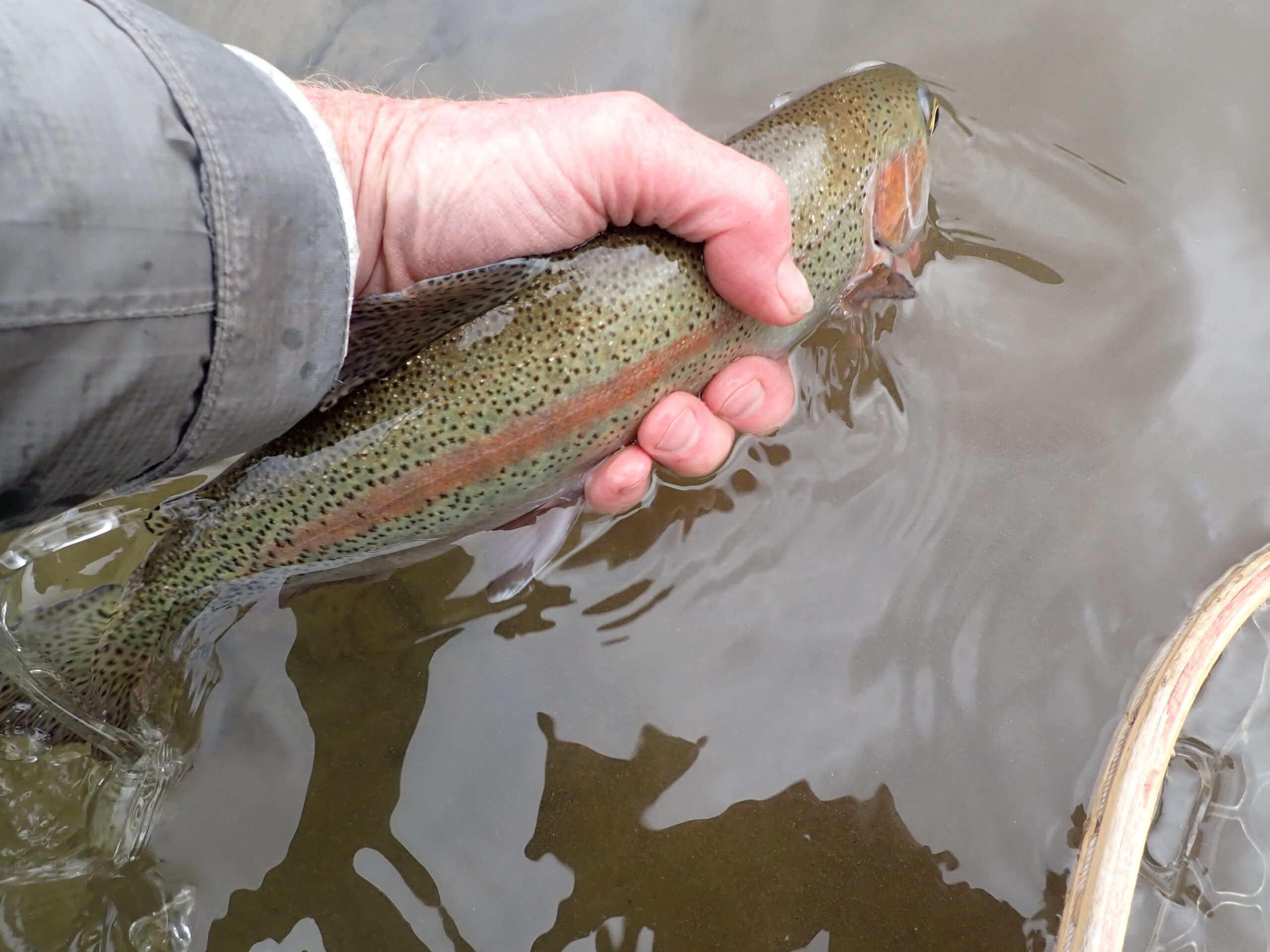 Already on Its Way
Already on Its Way
The coolness and dampness prompted me to wear my long sleeved Under Armour undershirt and light down North Face coat with an outer layer of my rain jacket. I snugged on my billed hat with earflaps. I was pleased to have these layers for my entire day on the river. For my fly rod I once again pulled out my Sage One five weight. I was hopeful to need the extra strength of the five weight to handle larger fish.
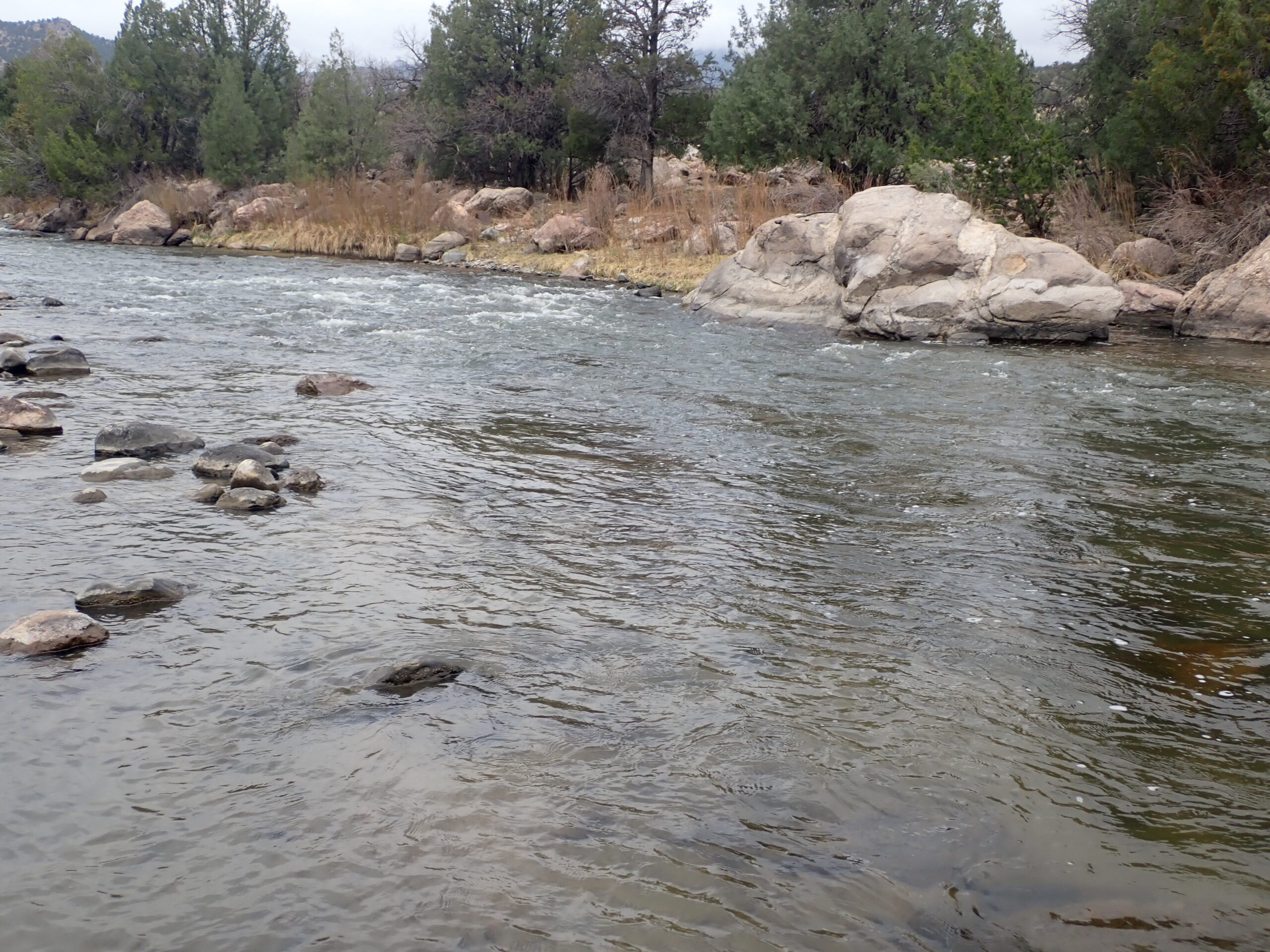 Center Trough
Center Trough
By 11:00AM we were positioned along the river ready to find hungry and willing trout on the Arkansas River. As we bashed through willows and bushes near the river, I carefully observed in order to assess the status of the caddis hatch in our location. I saw none. Normally the adult flies flush into the air in abundance, when I disturb their habitat, but that was not the case on Friday.
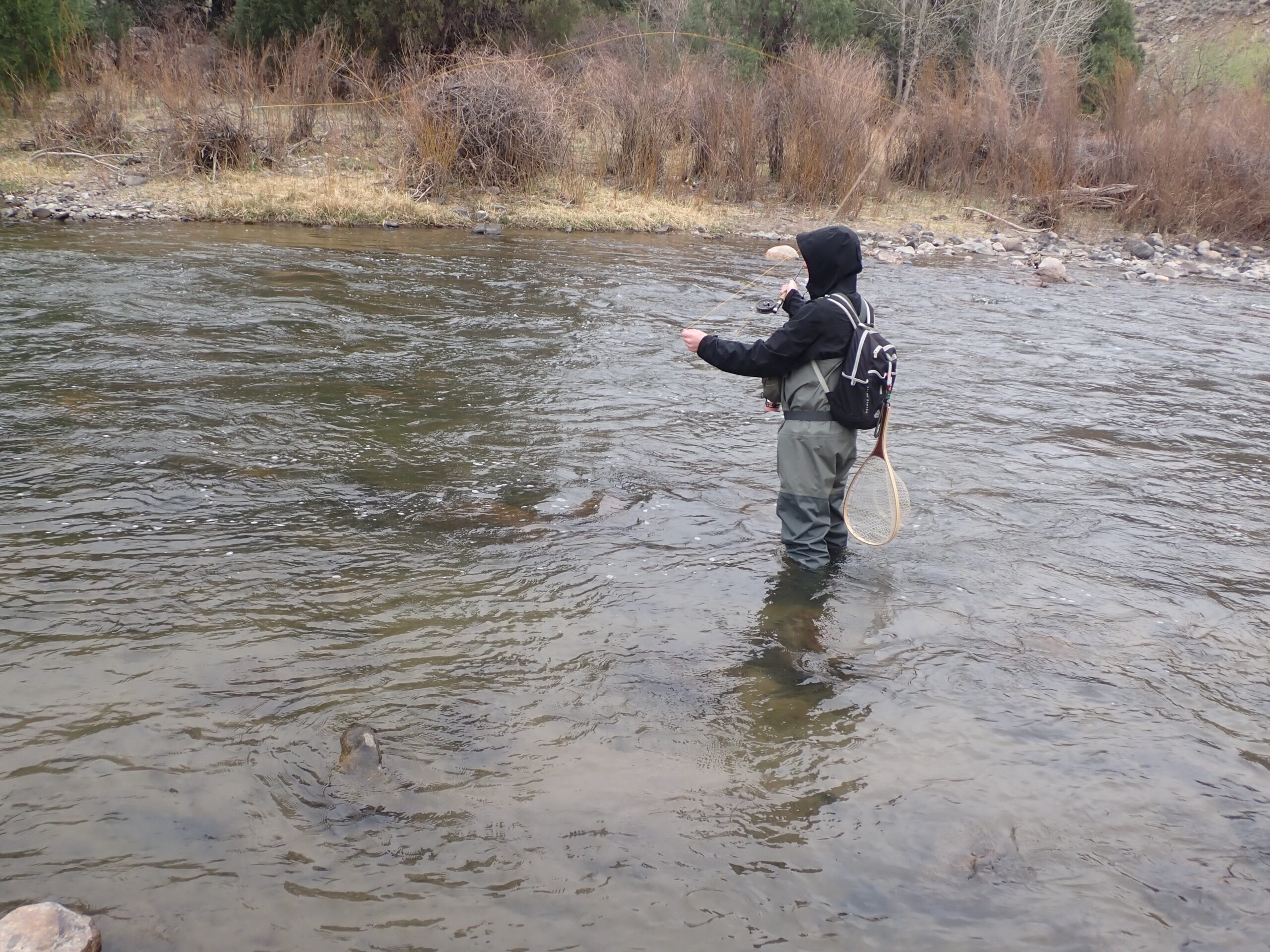 Look at the Load on Ben’s Rod
Look at the Load on Ben’s Rod
To begin our day we chose dry/dropper rigs. We both applied chubby Chernboyls as our top flies. Ben added a go2 caddis pupa on a four foot dropper, and I chose an olive perdigon as the top fly and placed a g02 caddis beneath as my bottom nymph. We fished some attractive deep runs, and I managed to hook and land a nice thirteen inch rainbow, while Ben notched a refusal to his chubby.
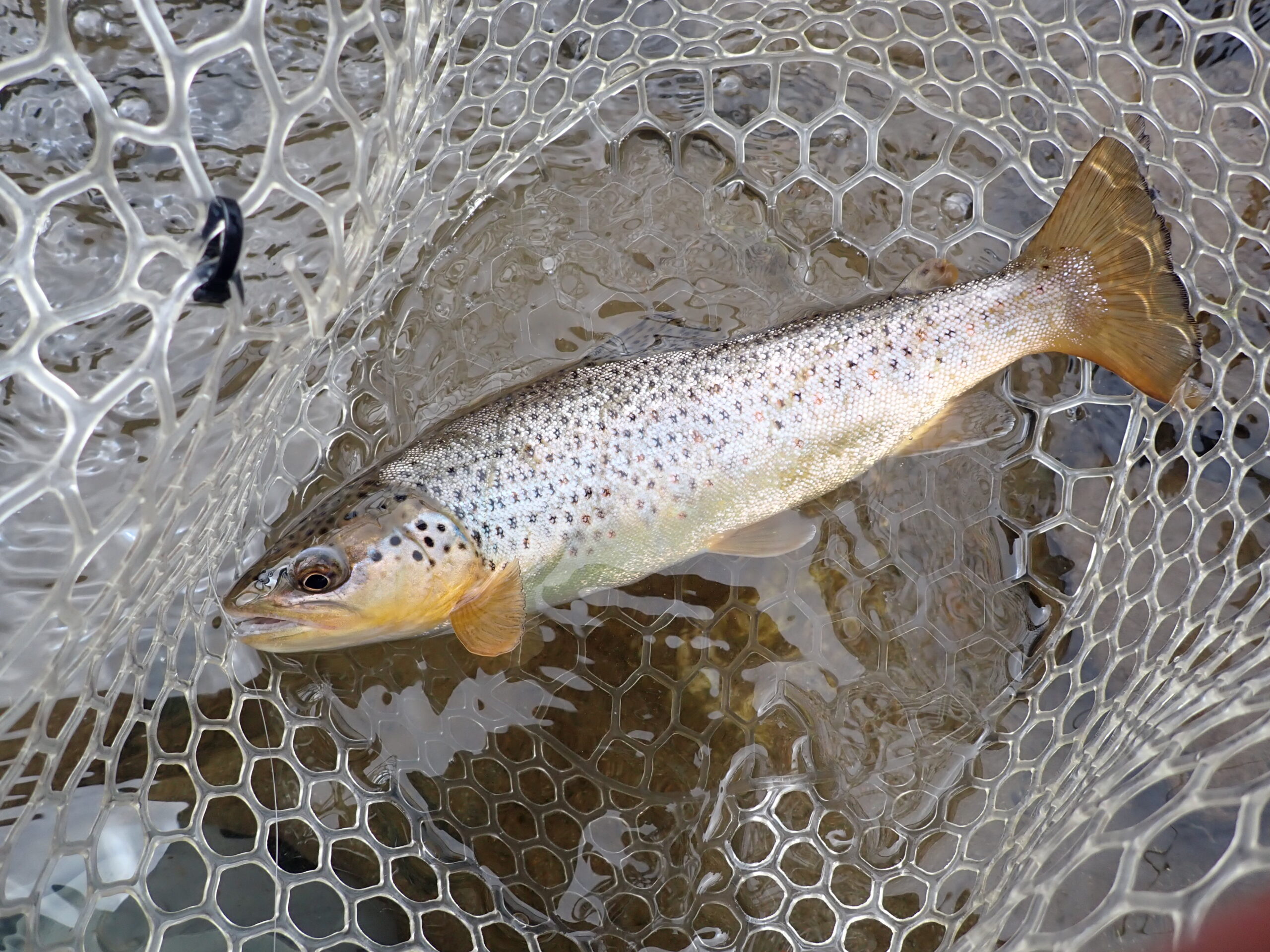 Brown Trout Success
Brown Trout Success
For the next hour we progressed up the river and shared the left side. I directed Ben to make some longer casts to a shelf pool on the other side of the swift center current, and he executed perfectly. His casting capabilities have advanced admirably since our two outings last summer.
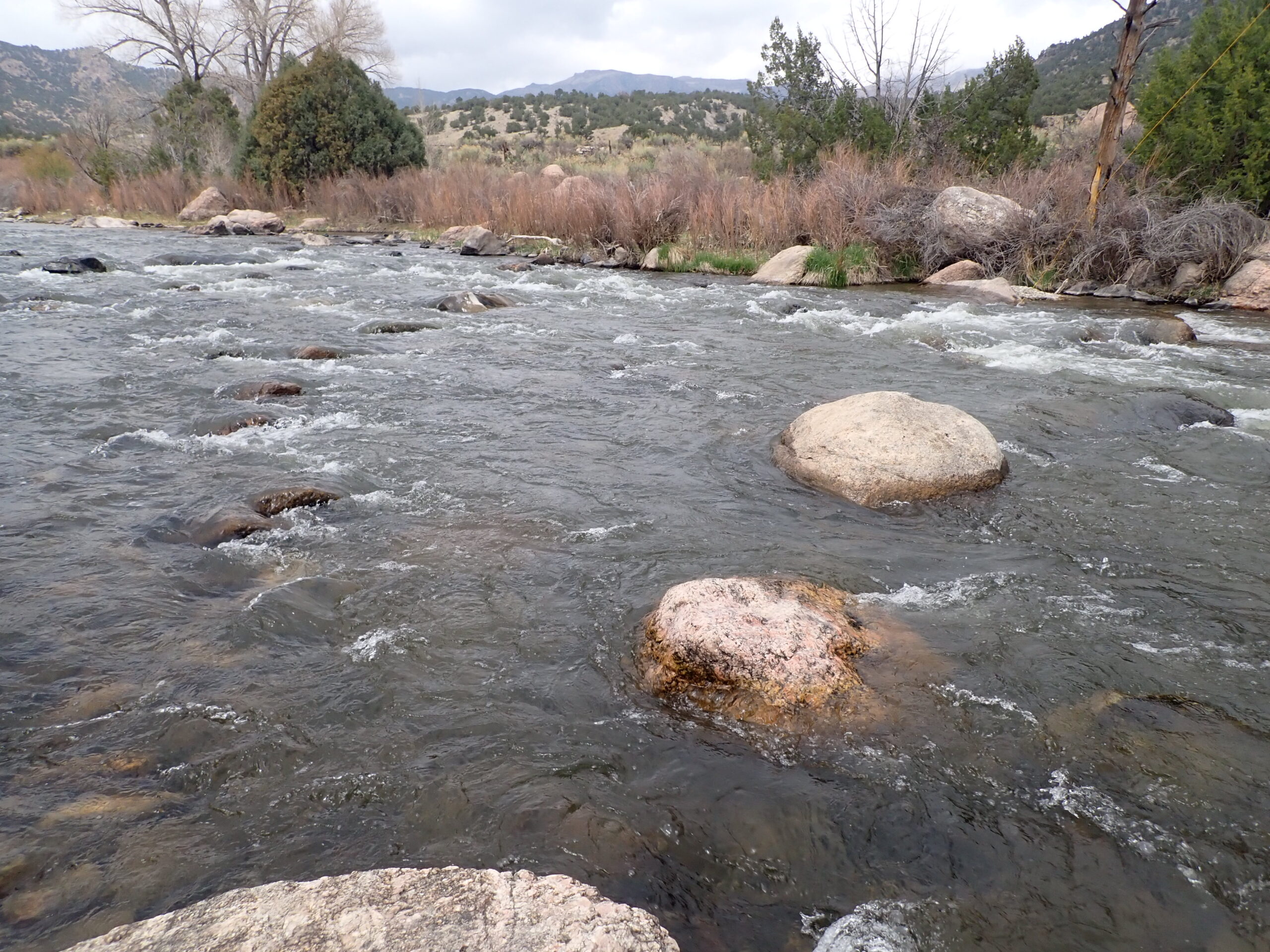 Pocket Water Paradise
Pocket Water Paradise
By lunch time, noon, we had covered the better water on the bottom of our beginning stretch, so we paused to eat. My initial rainbow trout was the only landed fish in the first hour. After lunch we continued in the same manner as the morning. Given the overcast conditions, I switched the go2 caddis for a sparkle wing RS2 in case the baetis nymphs became active. Ben began changing out flies as well, and at one point he added a sparkle wing RS2 as well as a third fly. Casting three flies is an invitation for tangles, and although he paused to unravel a few, his casting technique avoided the worst.
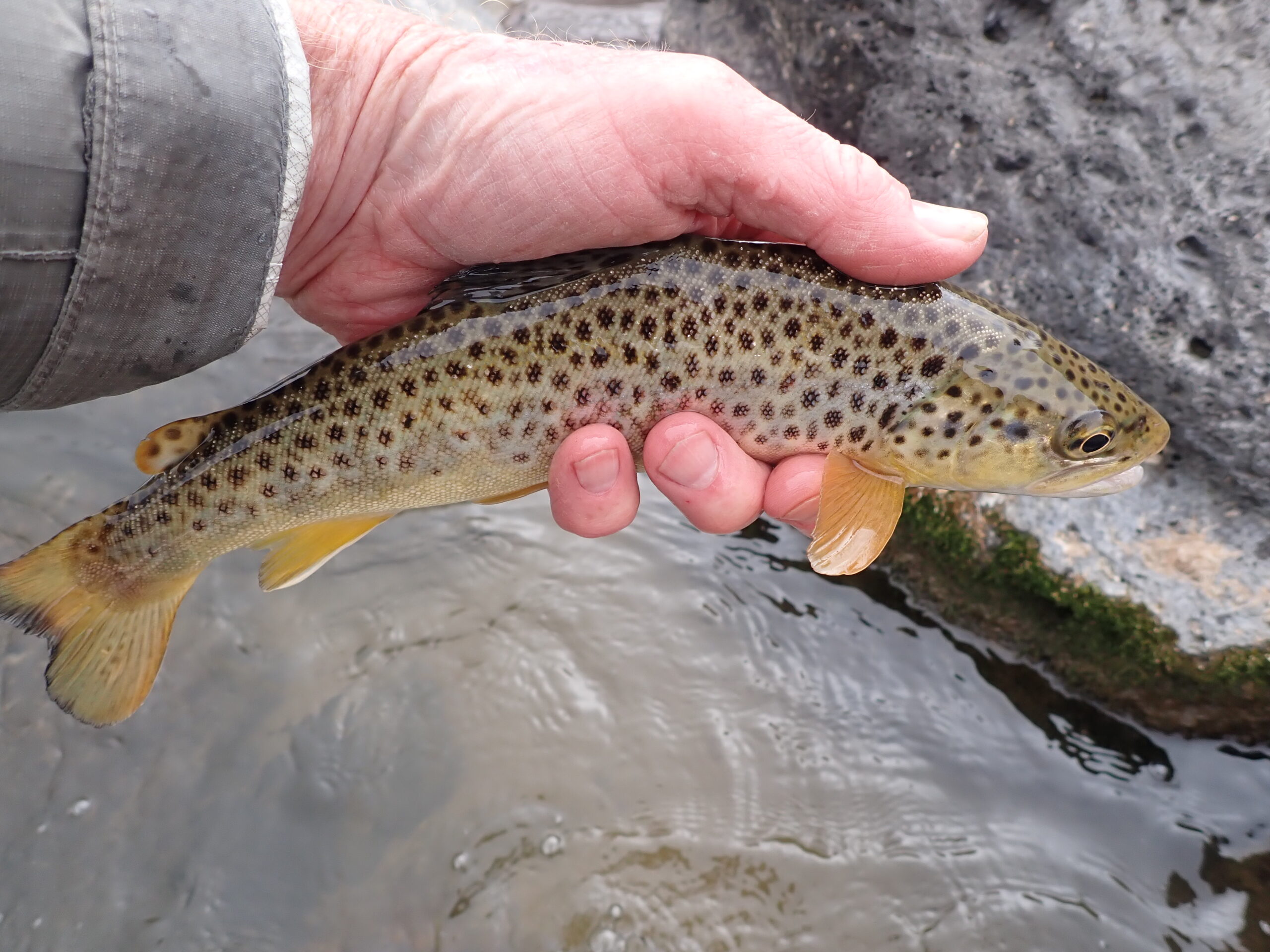 Covered with Ink Spots
Covered with Ink Spots
Between 12:30PM and 3:30PM we prospected the most attractive water of the day. The sky remained dark and cloudy, and the wind kicked up from time to time. but we never saw fish rising to blue wing olives. Ben pointed to a pair of small insects at one point, and I identified them as BWOs, but we persisted with our dry/droppers through the sparse hatch.
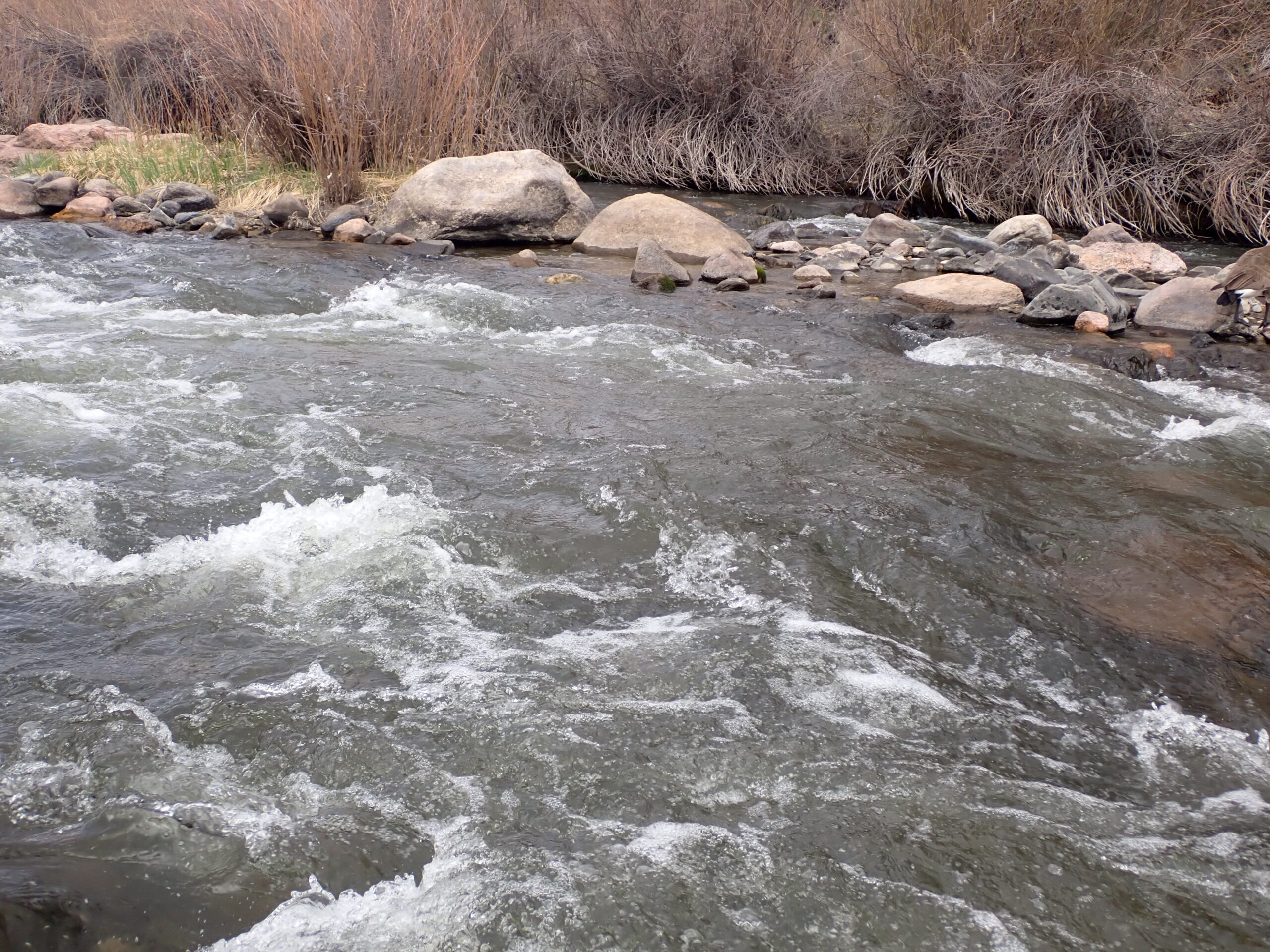 Deep Slot
Deep Slot
Over the course of the afternoon I landed seven additional trout to boost my fish count to eight. All except the first trout were browns, and I gripped a couple in the twelve and thirteen inch range. I estimate that the seven browns were evenly split between the olive perdigon and the RS2. In addition to the netted brown trout, I connected momentarily with four fish that were clearly larger rainbows. In each case the hook held fast long enough to feel the weight, and then the impulsive eaters turned their heads, and my fly catapulted free. I suspect they were on the tiny size 22 RS2 with the small hook gap.
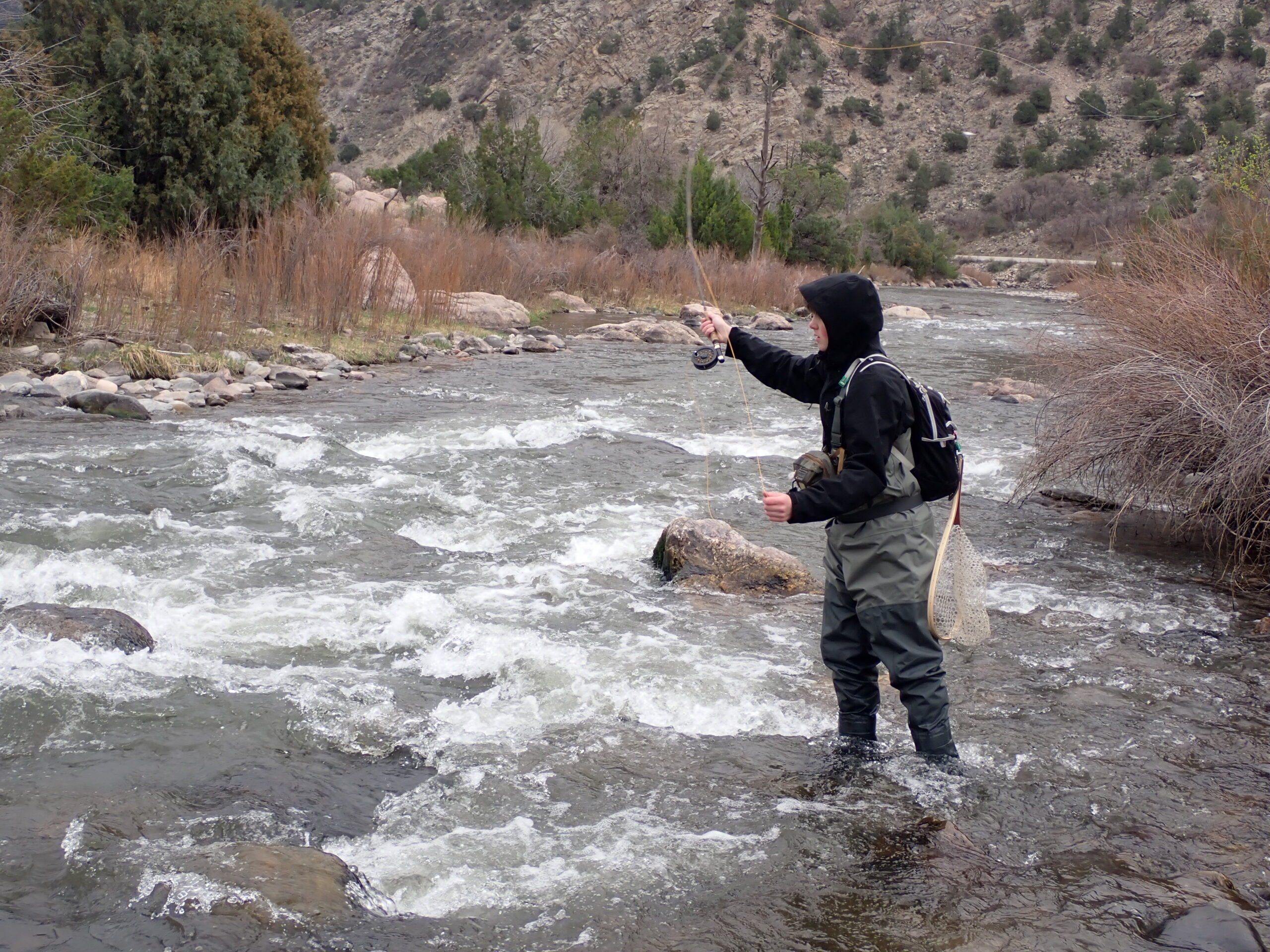 Ben Focused
Ben Focused
Ben meanwhile generated many opportunities, but he was unable to slide his net beneath them. I watched him play a very respectable brown trout for a decent amount of time, but when he extended his net to gather the bruiser, the net rim hit the brown, and it splashed downstream to freedom. According to my rules, this counted as a catch, but Ben lives by a stricter code.
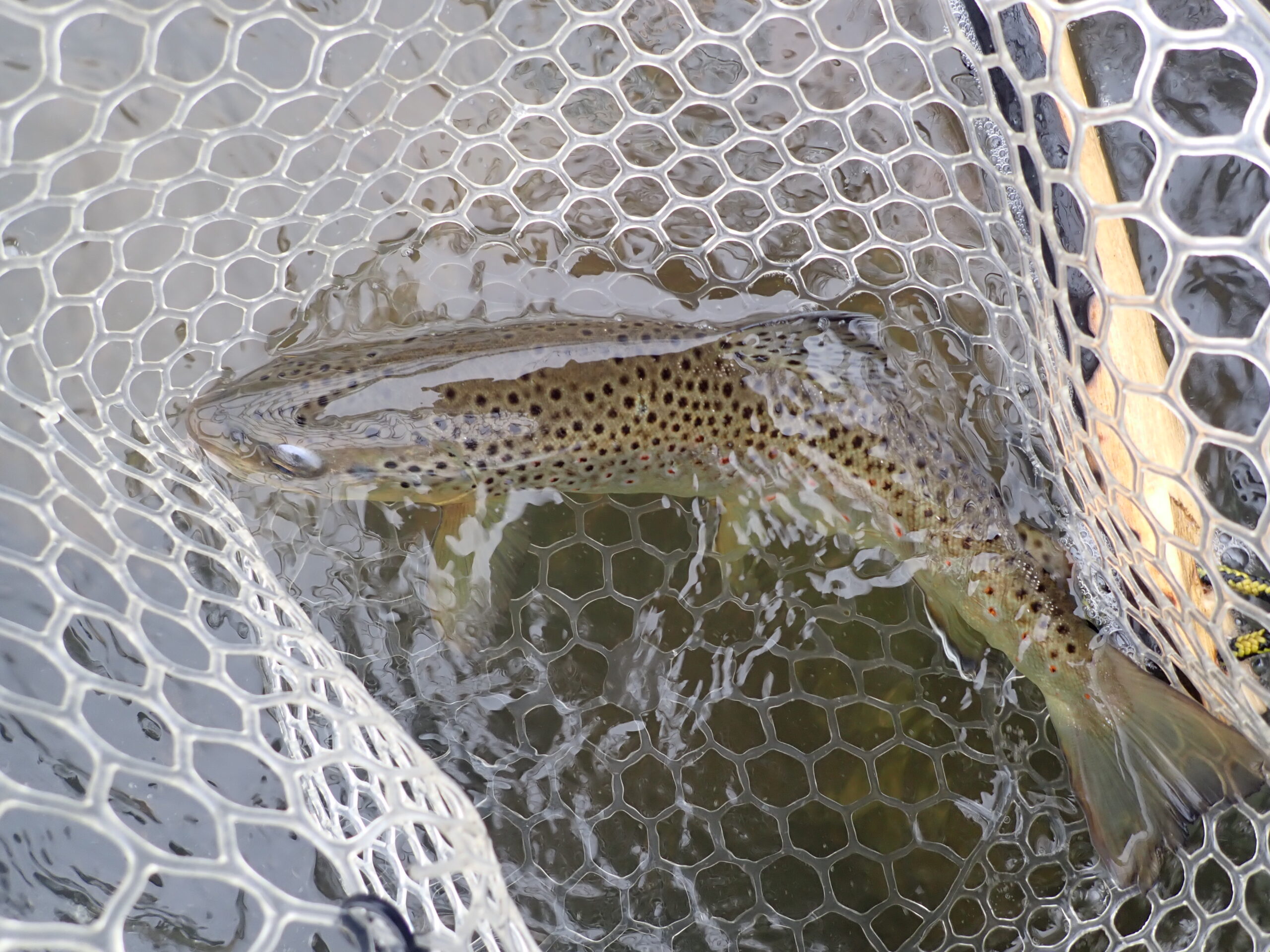 I Love This View
I Love This View
In other cases he hooked wild rainbows, and these hot fish streaked about and eventually powered into downstream rapids and broke free. In a few cases the hooks remained, but Ben also broke off three sets of three fly rigs. It had to be frustrating for him, but even so, I was pleased that he encountered numerous opportunities throughout the day.
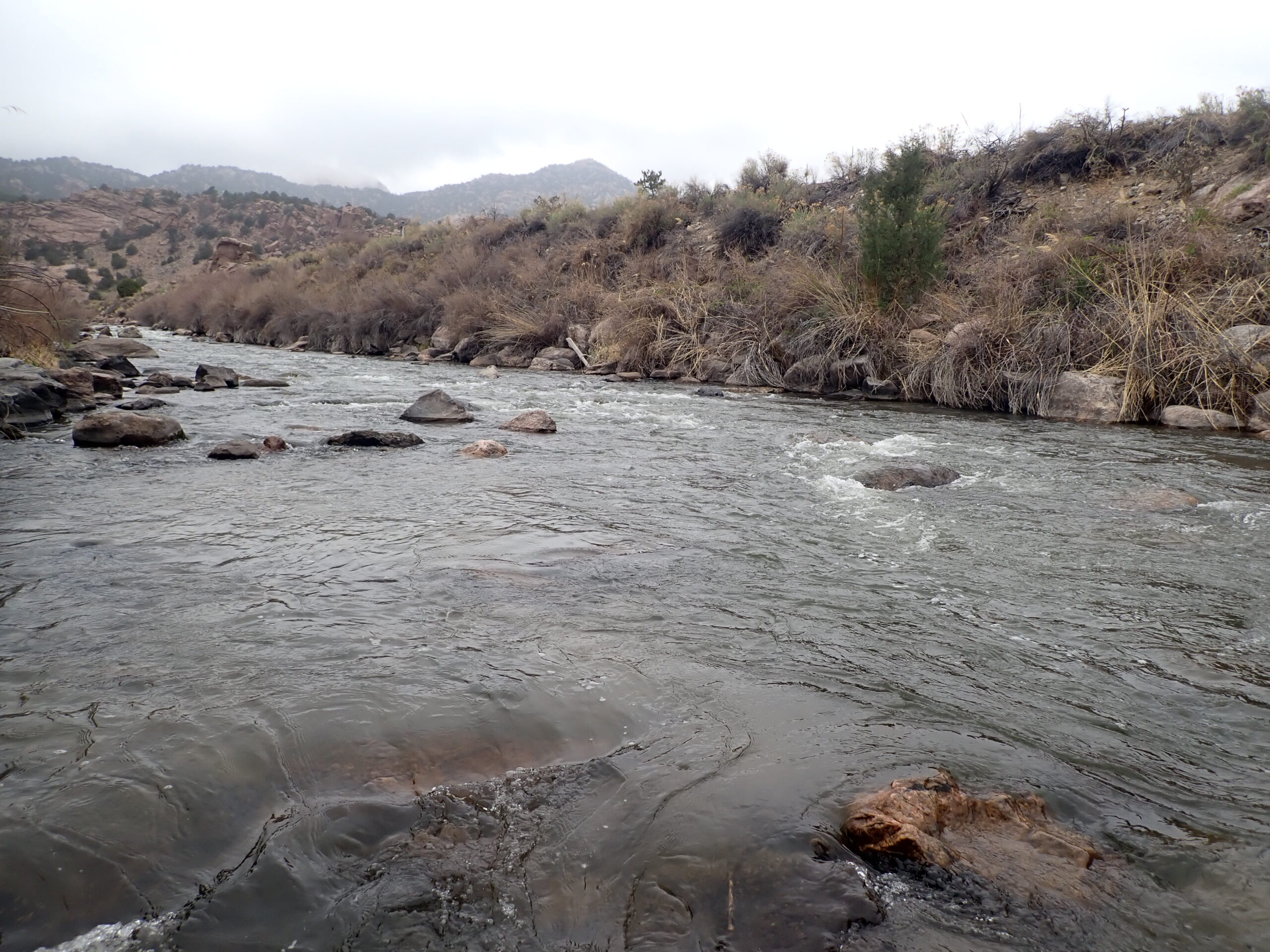 Late Afternoon Cloud Cover
Late Afternoon Cloud Cover
As we ambled back along the river at 3:30PM, we paused at a long narrow shelf pool next to some fast moving current. As we gazed at the bubble line, we spotted several rises. Ben’s hands were stricken by stiffness, so I tied on one of his chubbies along with a prince nymph and sparkle wing RS2, and I observed, as he worked the seam with expert backhand casts. After quite a few casts, he connected with a fish for a moment, but once again it broke free. In this case I think it broke off the subsurface flies. I replaced them, and he resumed casting, while the rising trout continued to tantalize us with sporadic rises in the bubble line. After a few minutes Ben lifted his flies to make another backhand cast using the current drag to load his rod, and at that very same moment a fish grabbed the chubby Chernobyl. Needless to say the two opposing forces resulted in a another severed monofilament. Ben stated that he is going to purchase a new spool of tippet.
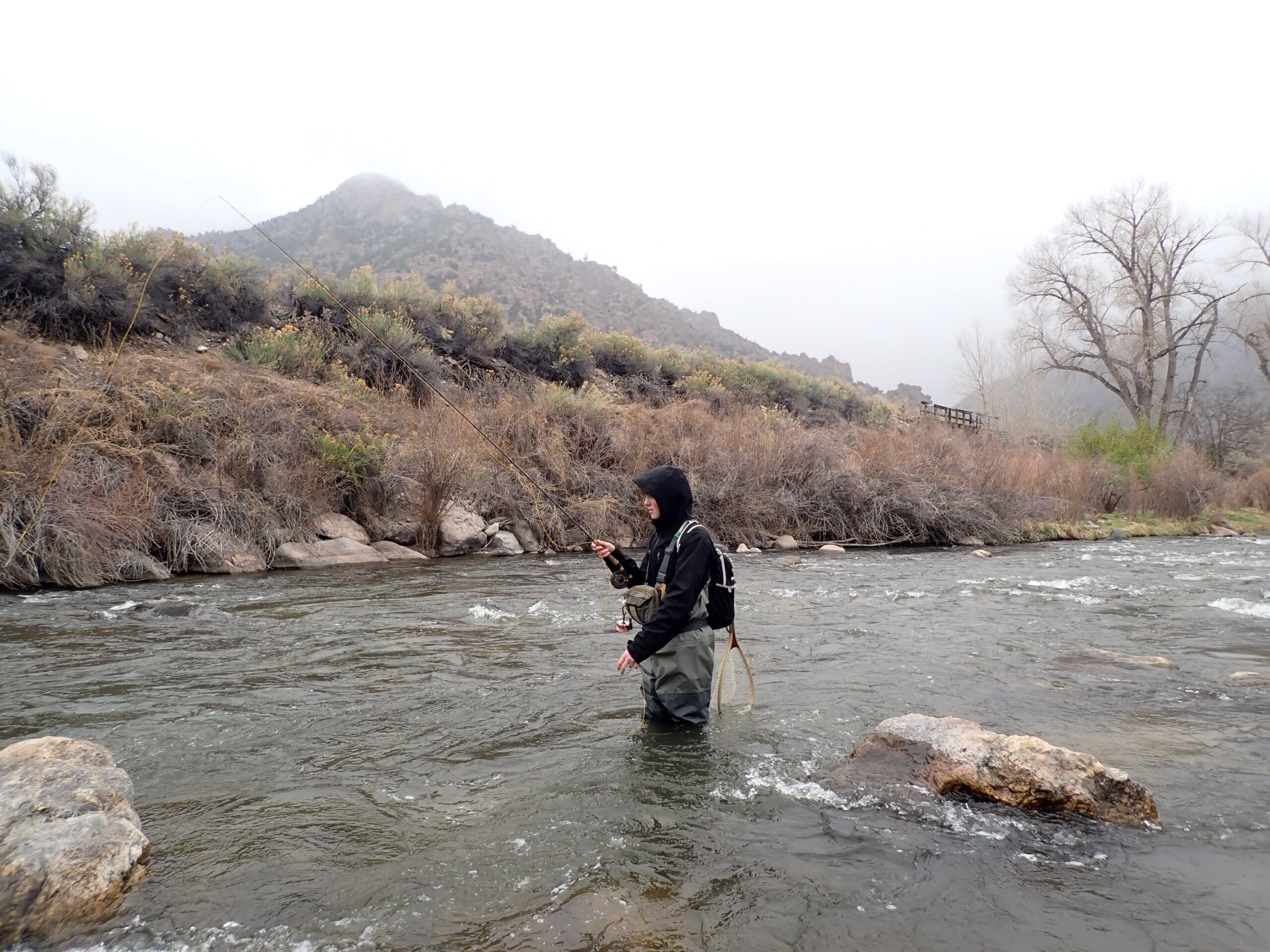 Ben Wading Deep
Ben Wading Deep
Friday was a fun day on the Arkansas River. Once again I failed to meet the Arkansas River caddis hatch, and Ben did not see the spectacle, as I had hoped. In fact I saw only one tiny caddis over the course of the day, and then one appeared in my car on the drive back to Denver! We did see some baetis and a few rising fish, but not enough to convert to dry fly fishing. On a positive note, we enjoyed lots of action, and Ben was introduced to fishing a large powerful river. Hopefully I imparted some additional tips and wisdom that he can deploy in his ongoing fly fishing evolution. The weather was as forecast, and we endured, and Ben’s waders did not leak, and he was satisfied with his new gear.
 Behind the Boulder
Behind the Boulder
Hopefully we can meet again this summer for some new adventures.
Fish Landed: 8
Like this:
Like Loading...

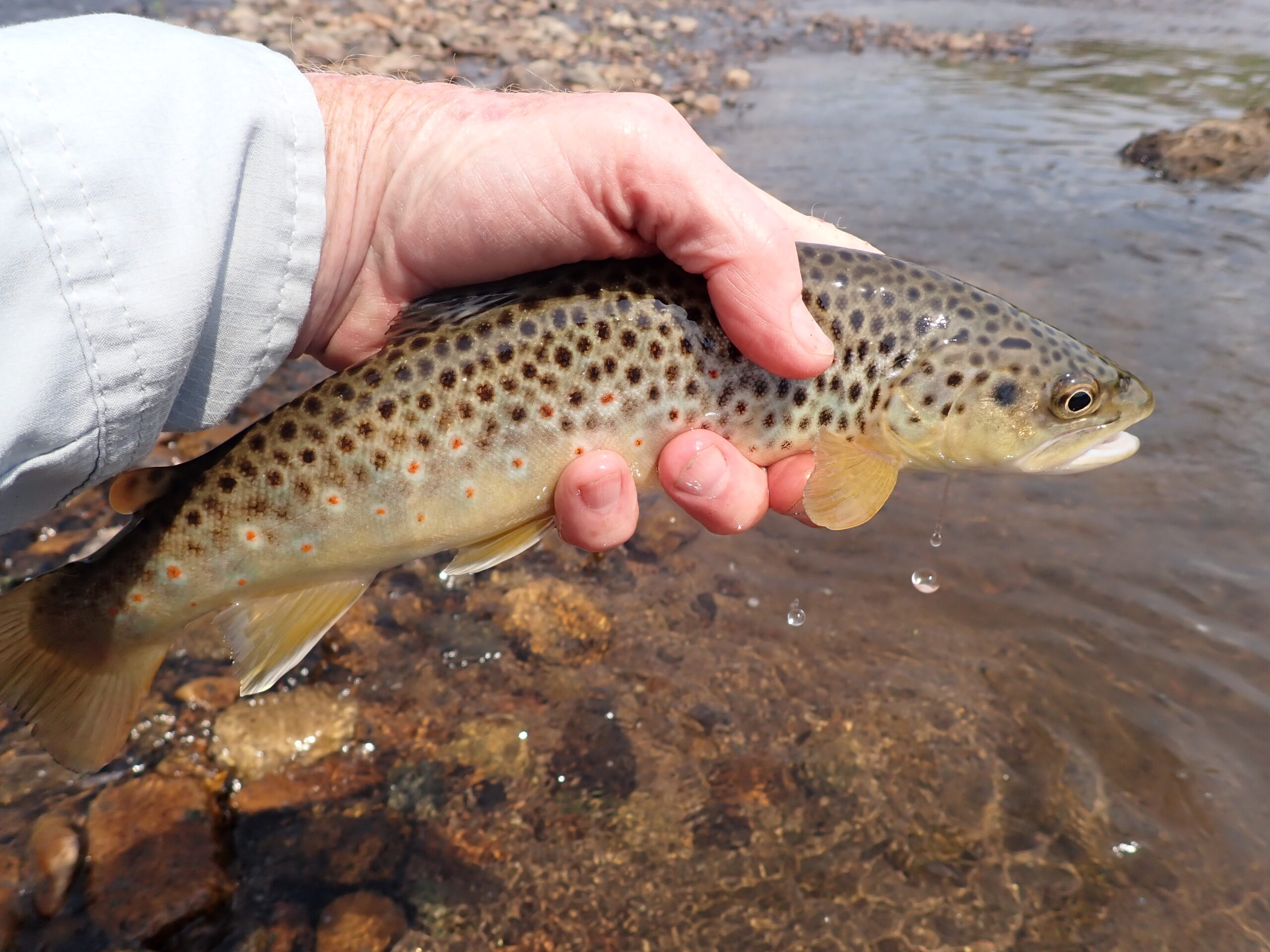 A Nice Fish At Least
A Nice Fish At Least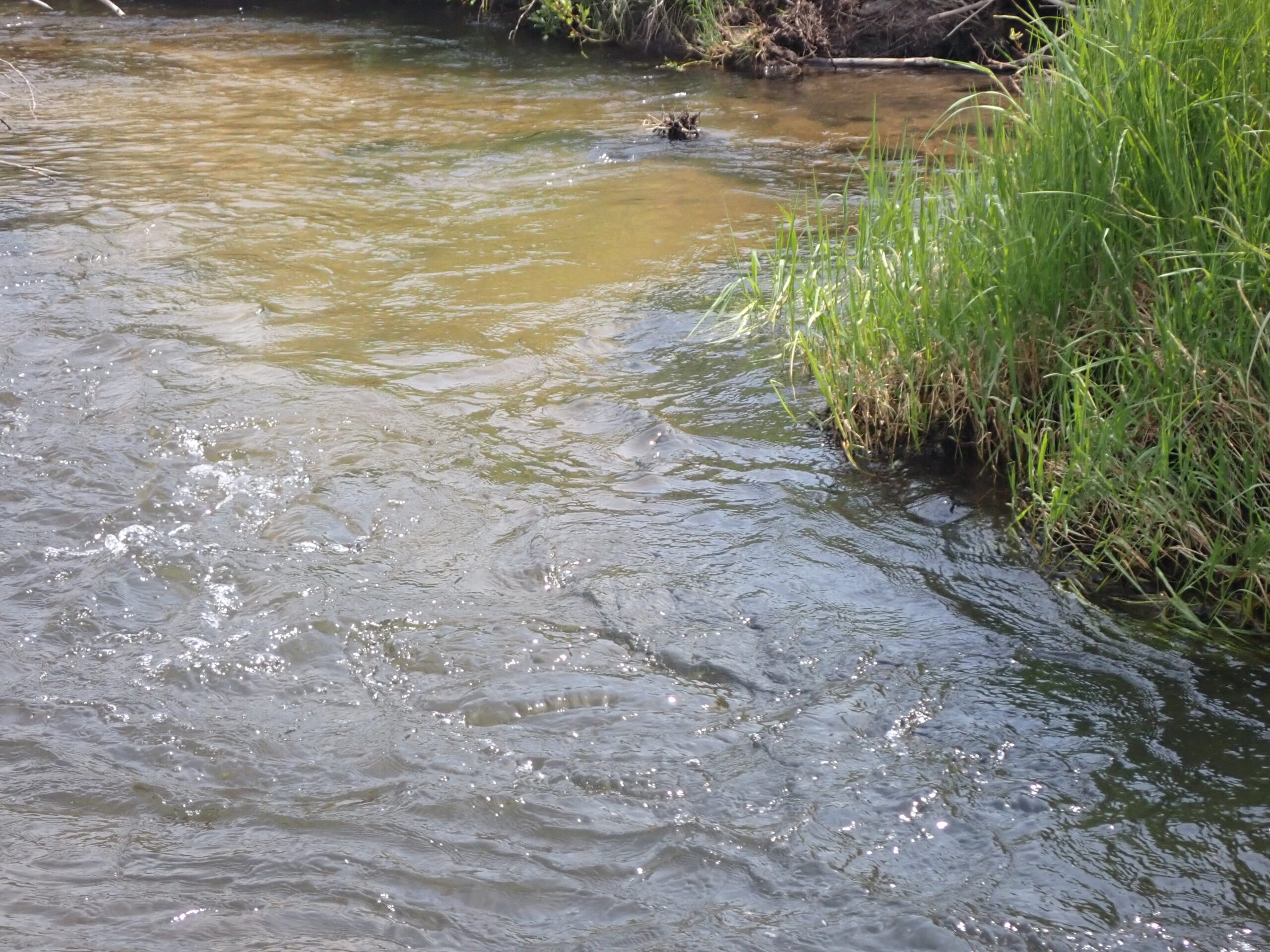 Home of Brown Trout Landed
Home of Brown Trout Landed High and Clear
High and Clear Typical
Typical Next to the Large Round Rock
Next to the Large Round Rock Nice Close Up
Nice Close Up Slots to Explore
Slots to Explore Fourth Double of 2025
Fourth Double of 2025 Second Click
Second Click Nice Water Ahead
Nice Water Ahead The Descent to the River
The Descent to the River High but Clear
High but Clear Finally on the Board
Finally on the Board Salvation Did the Trick
Salvation Did the Trick Another Representative Trout
Another Representative Trout Tough Wading Here
Tough Wading Here Hot Spot Among Rocks
Hot Spot Among Rocks Long One
Long One Better View
Better View Boulder Field
Boulder Field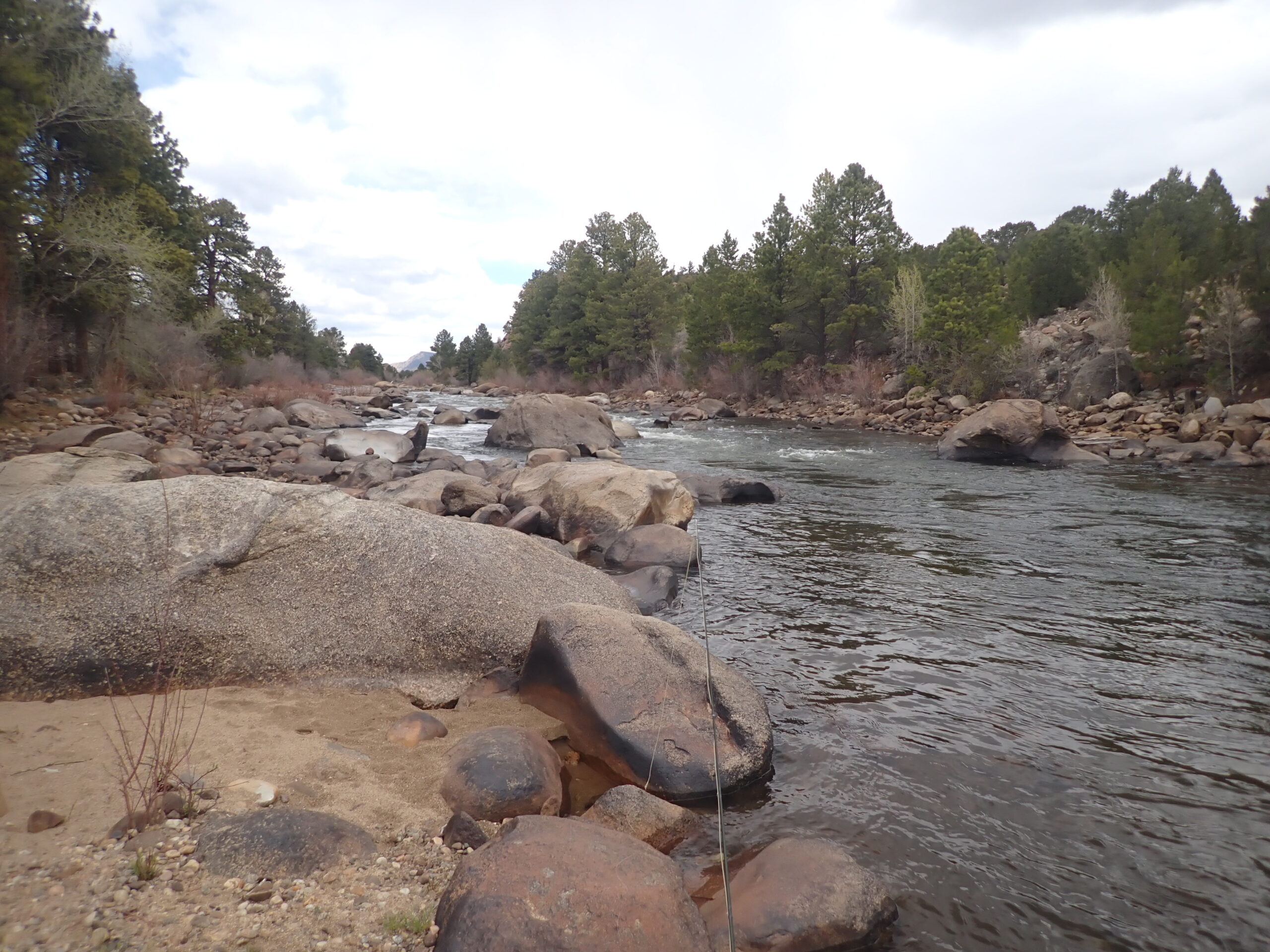 New Water
New Water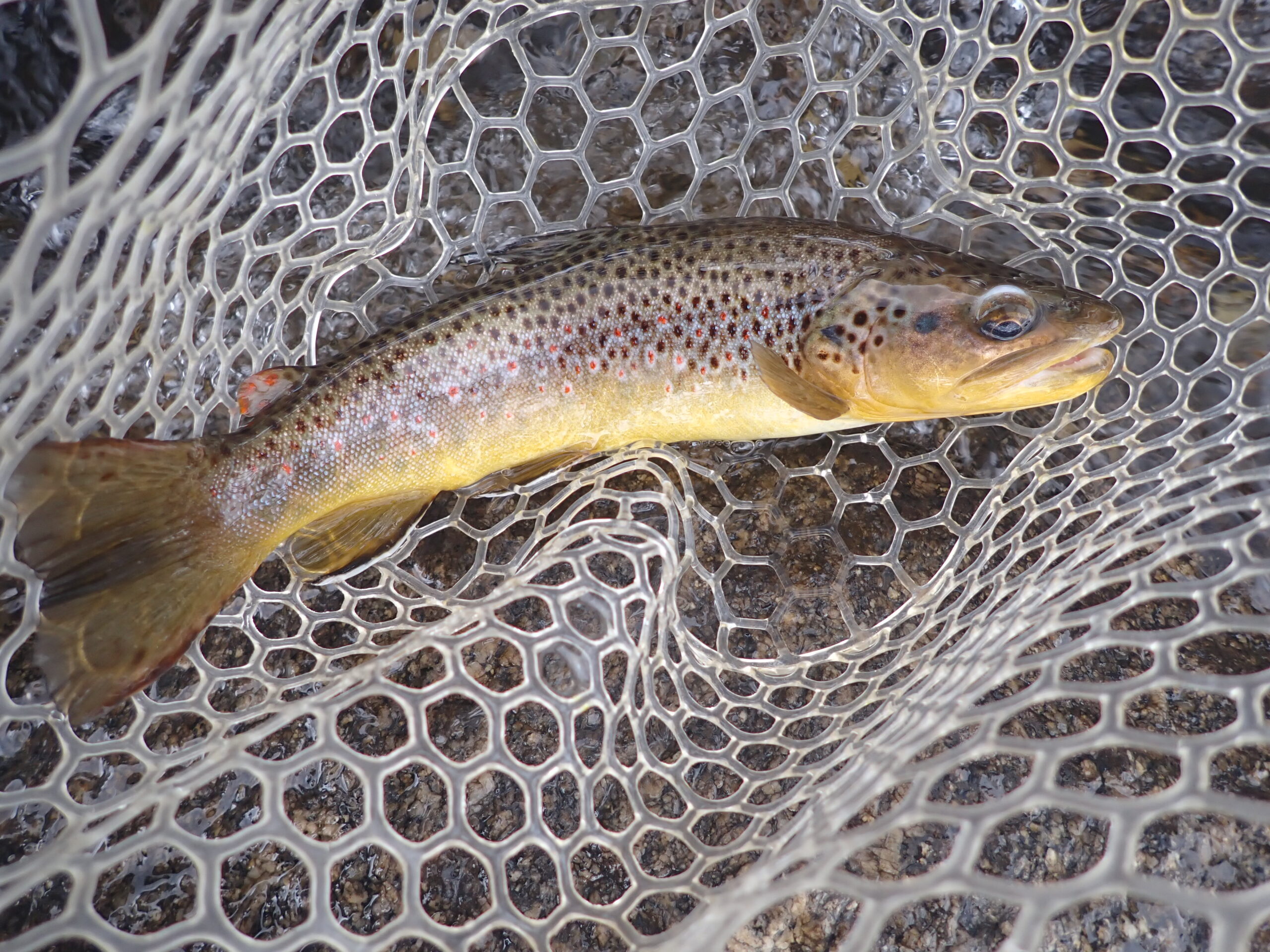 Impressive Start
Impressive Start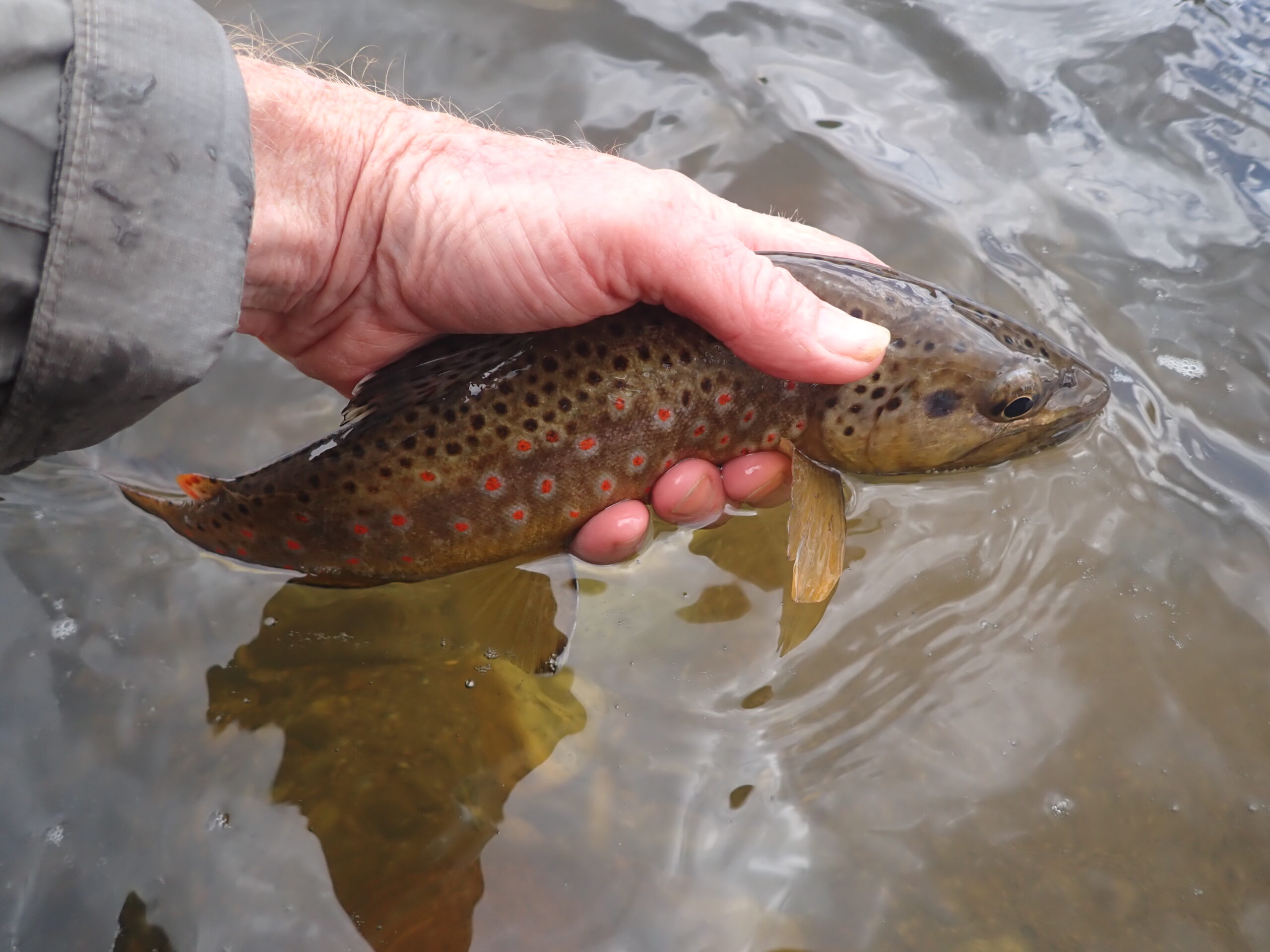 Love the Spots
Love the Spots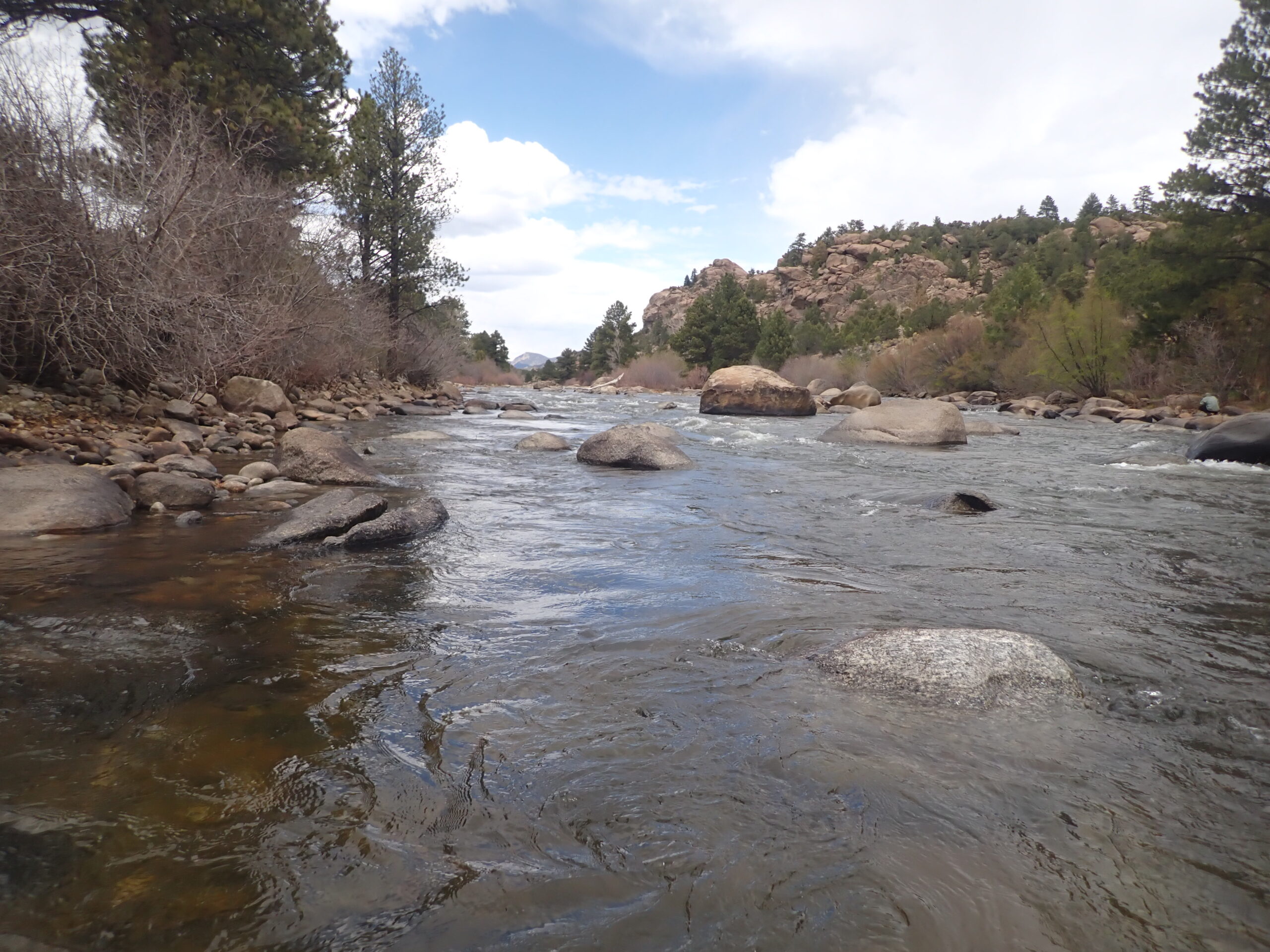 Looking Ahead
Looking Ahead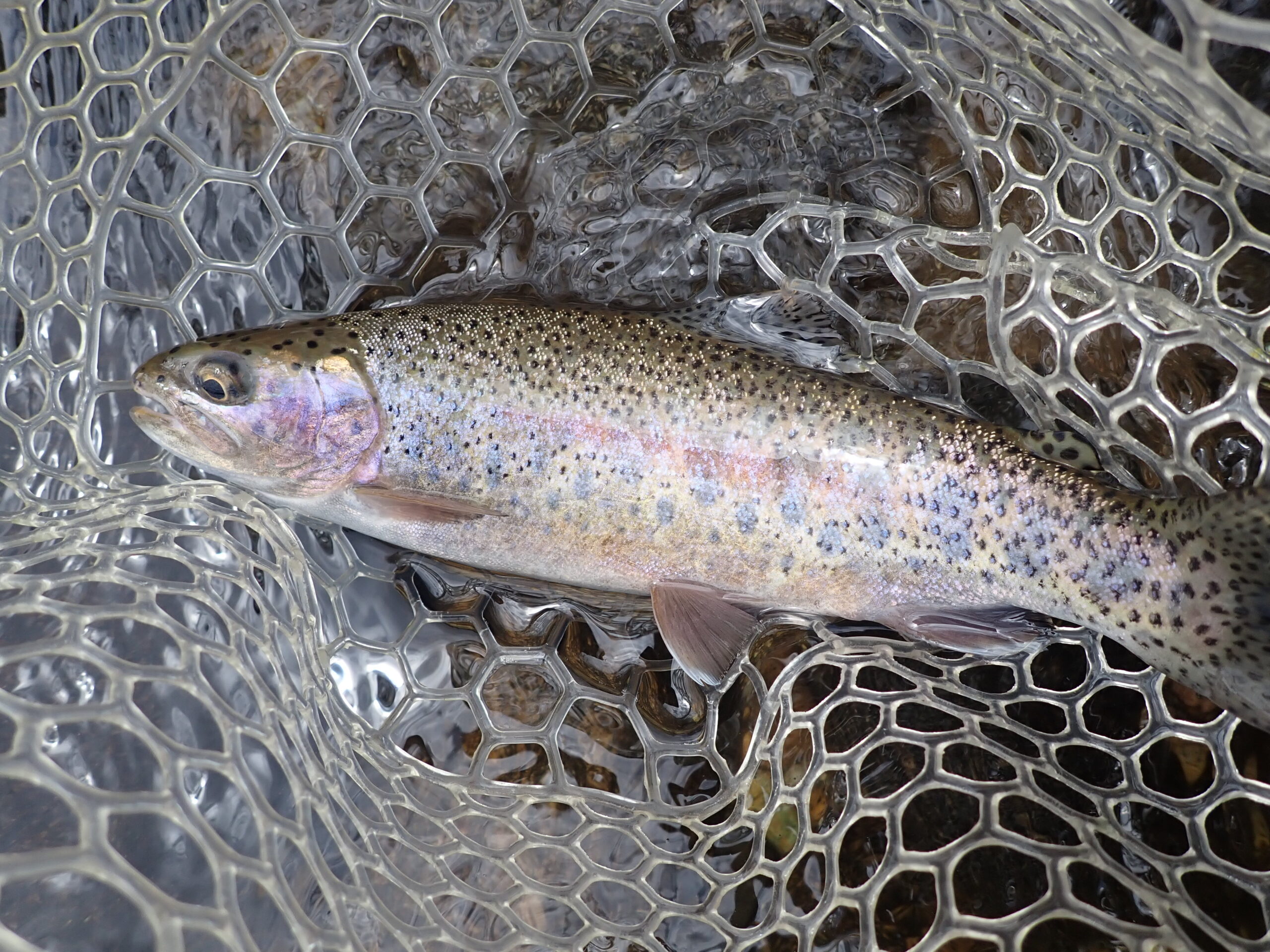 Sole Rainbow
Sole Rainbow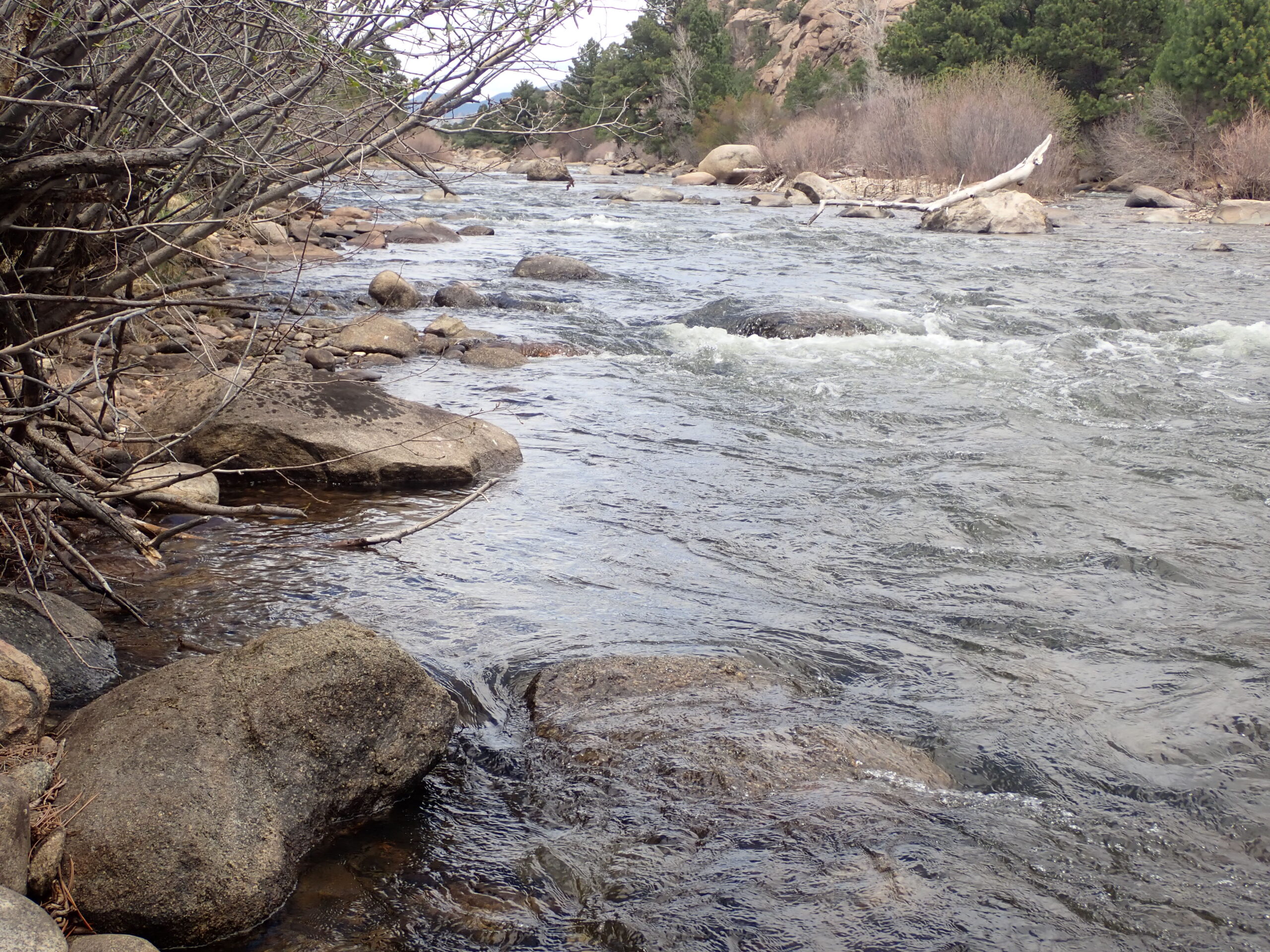 Narrow Run Along the Bank Produced
Narrow Run Along the Bank Produced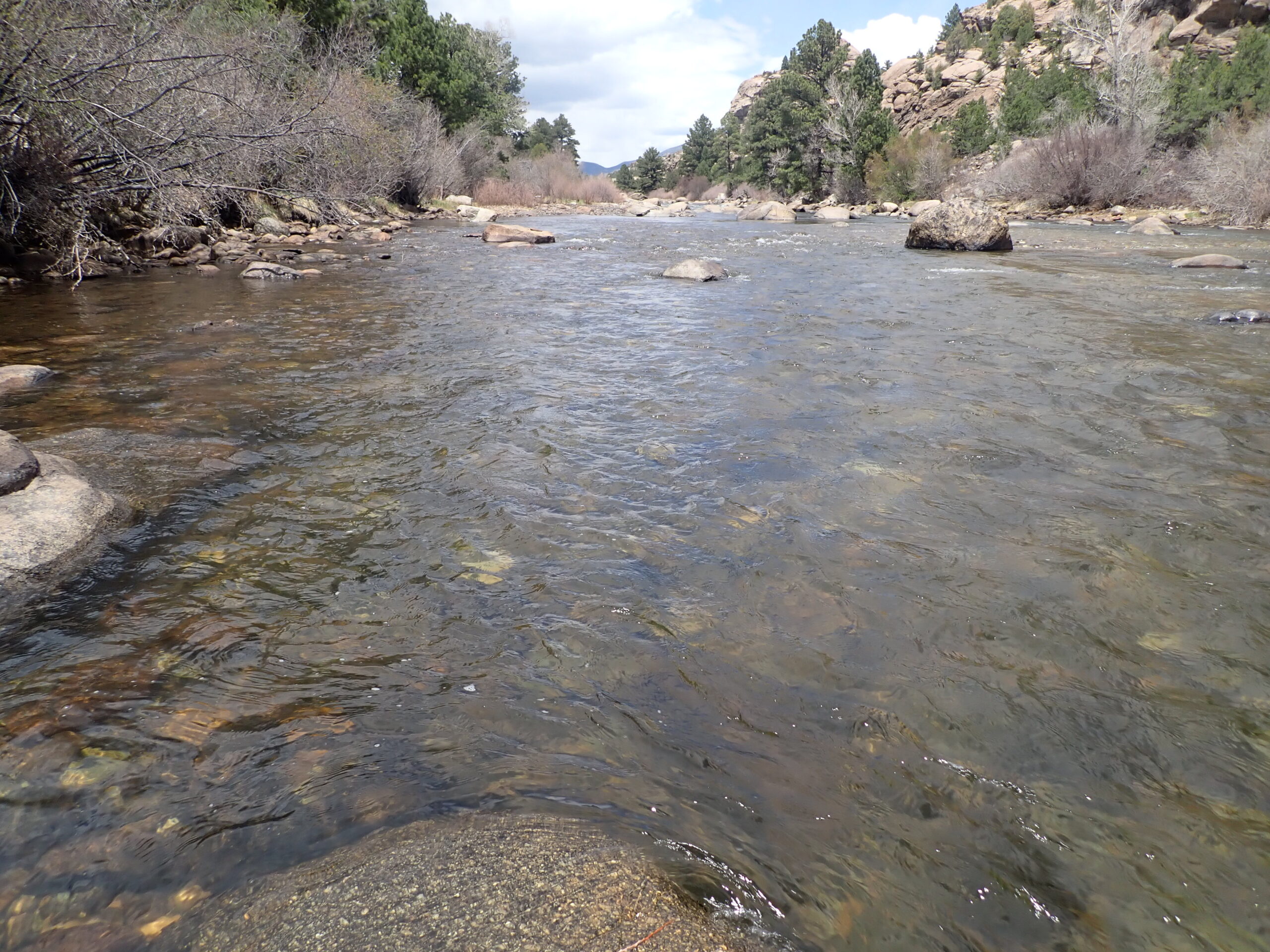 Wide Moderate Depth Riffle Was Prime
Wide Moderate Depth Riffle Was Prime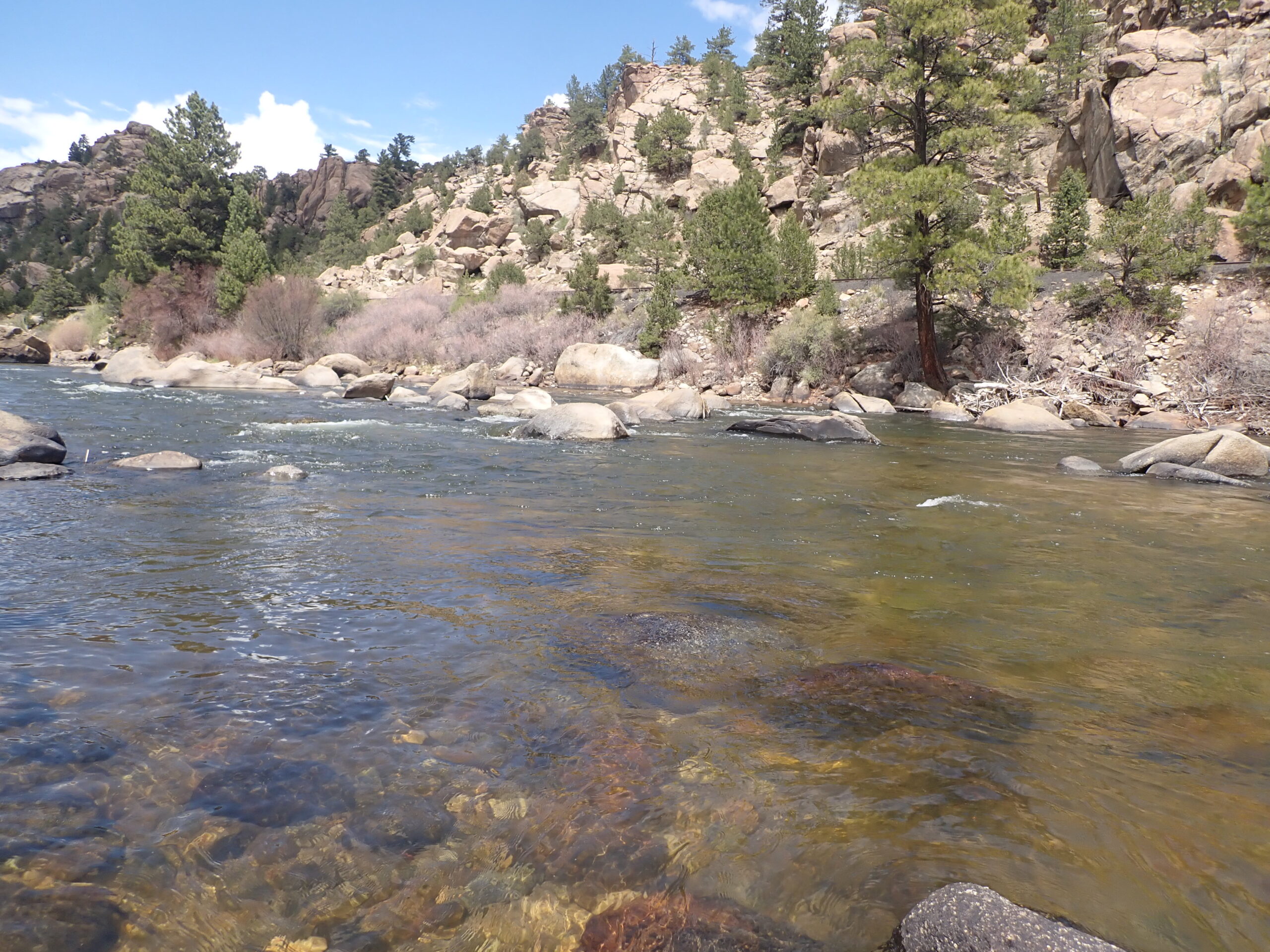 Check Out All the Subsurface Rocks
Check Out All the Subsurface Rocks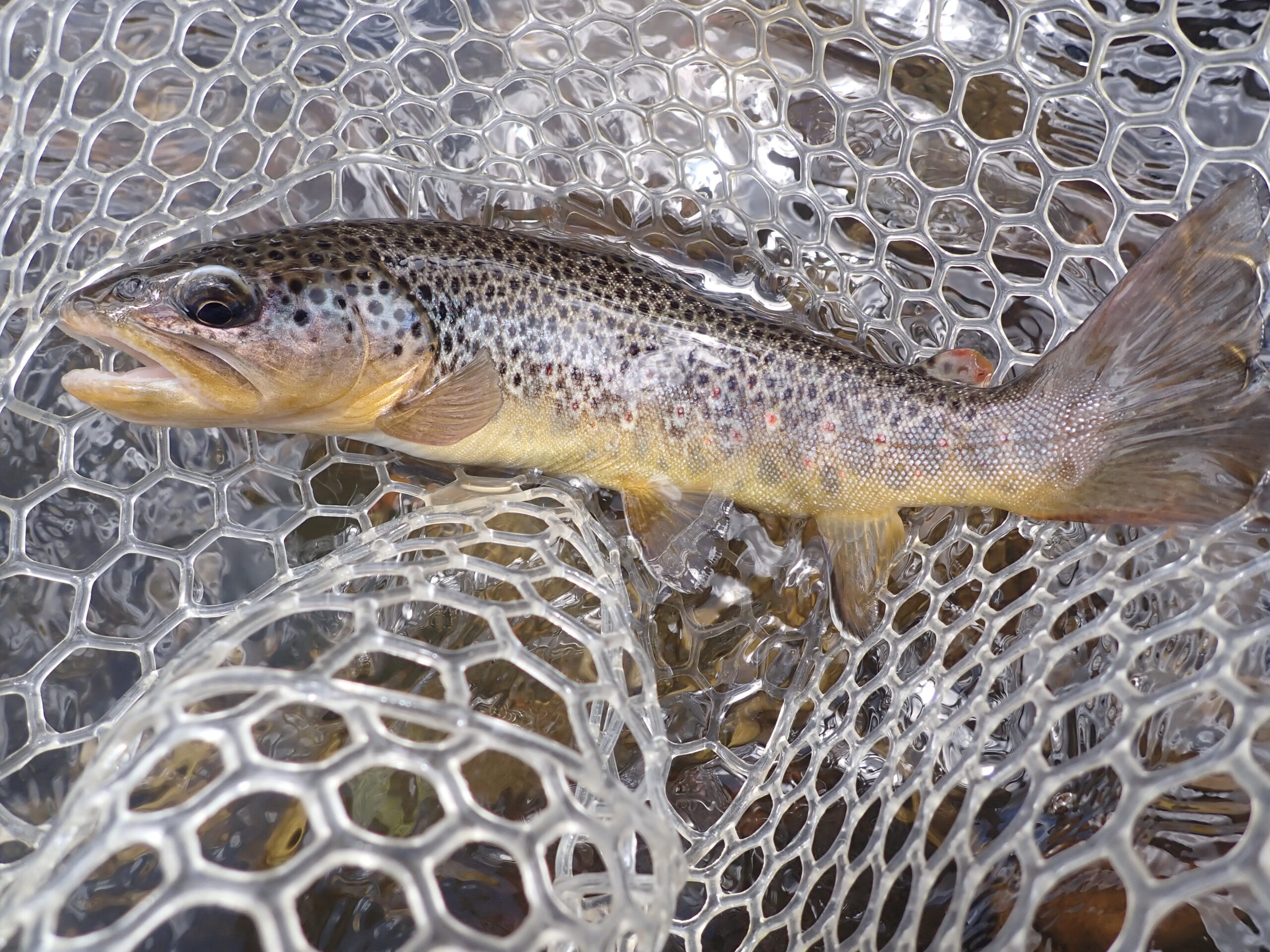 Big Flapper
Big Flapper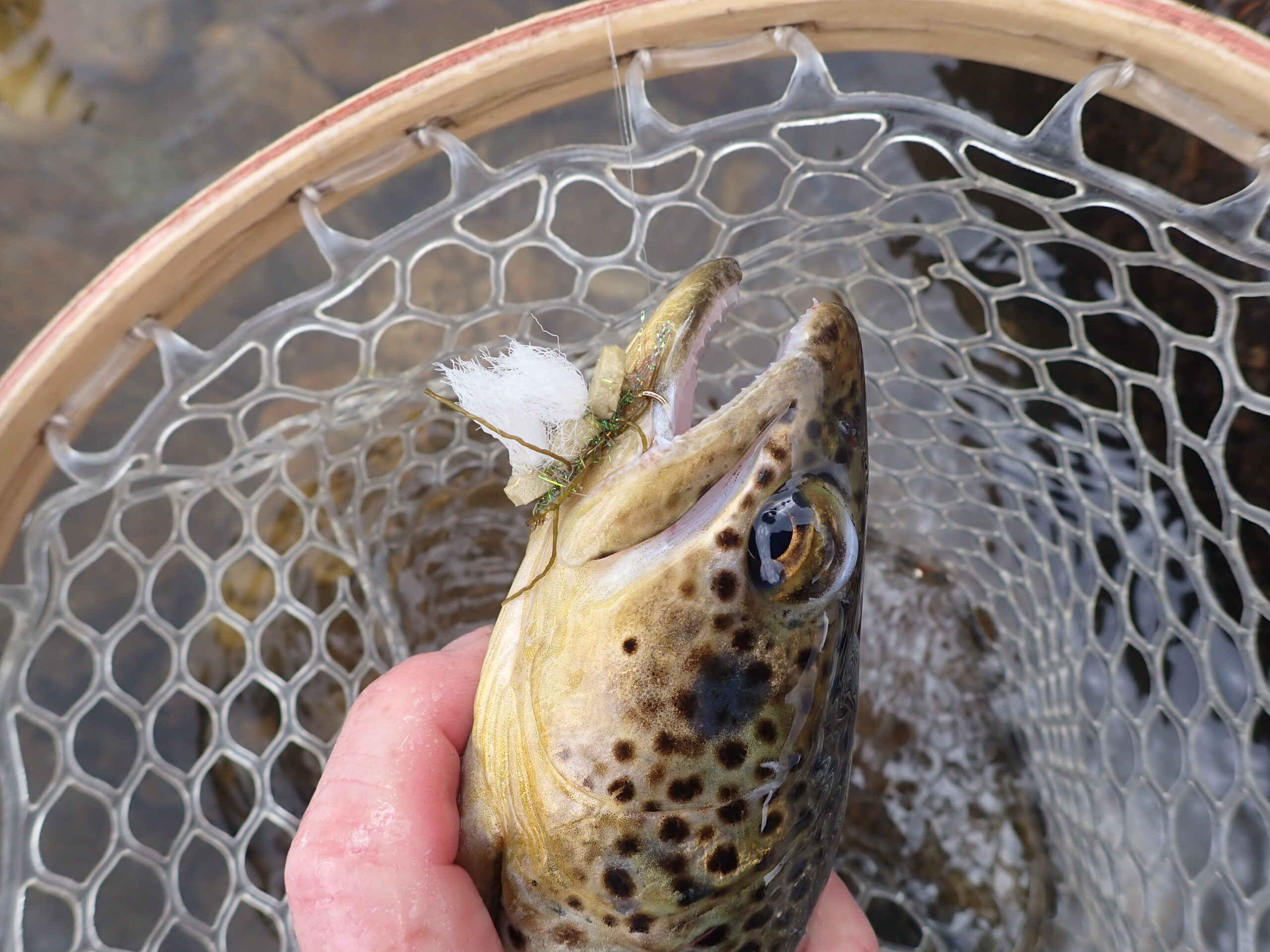 Chubby Again
Chubby Again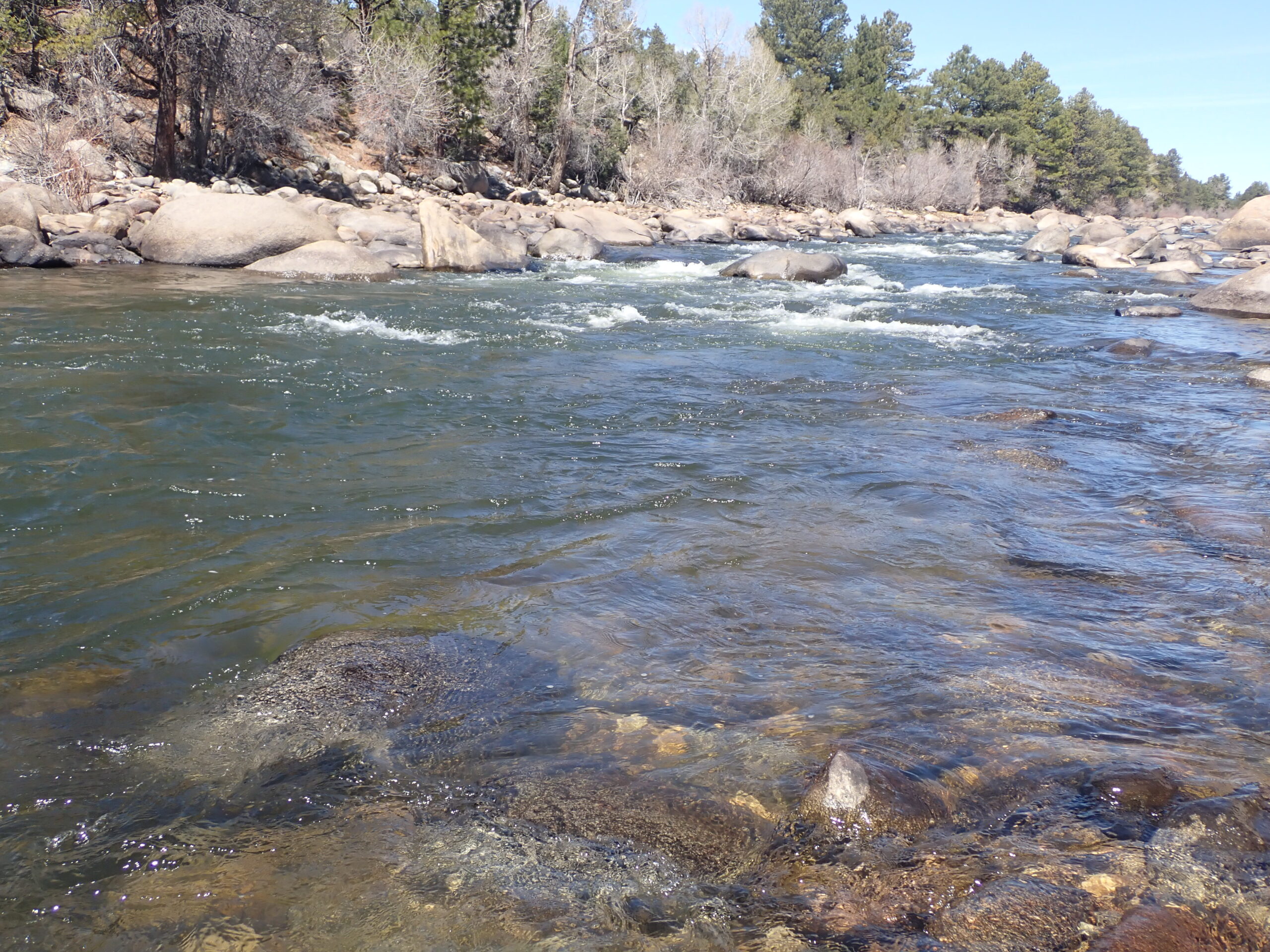 Clear Conditions
Clear Conditions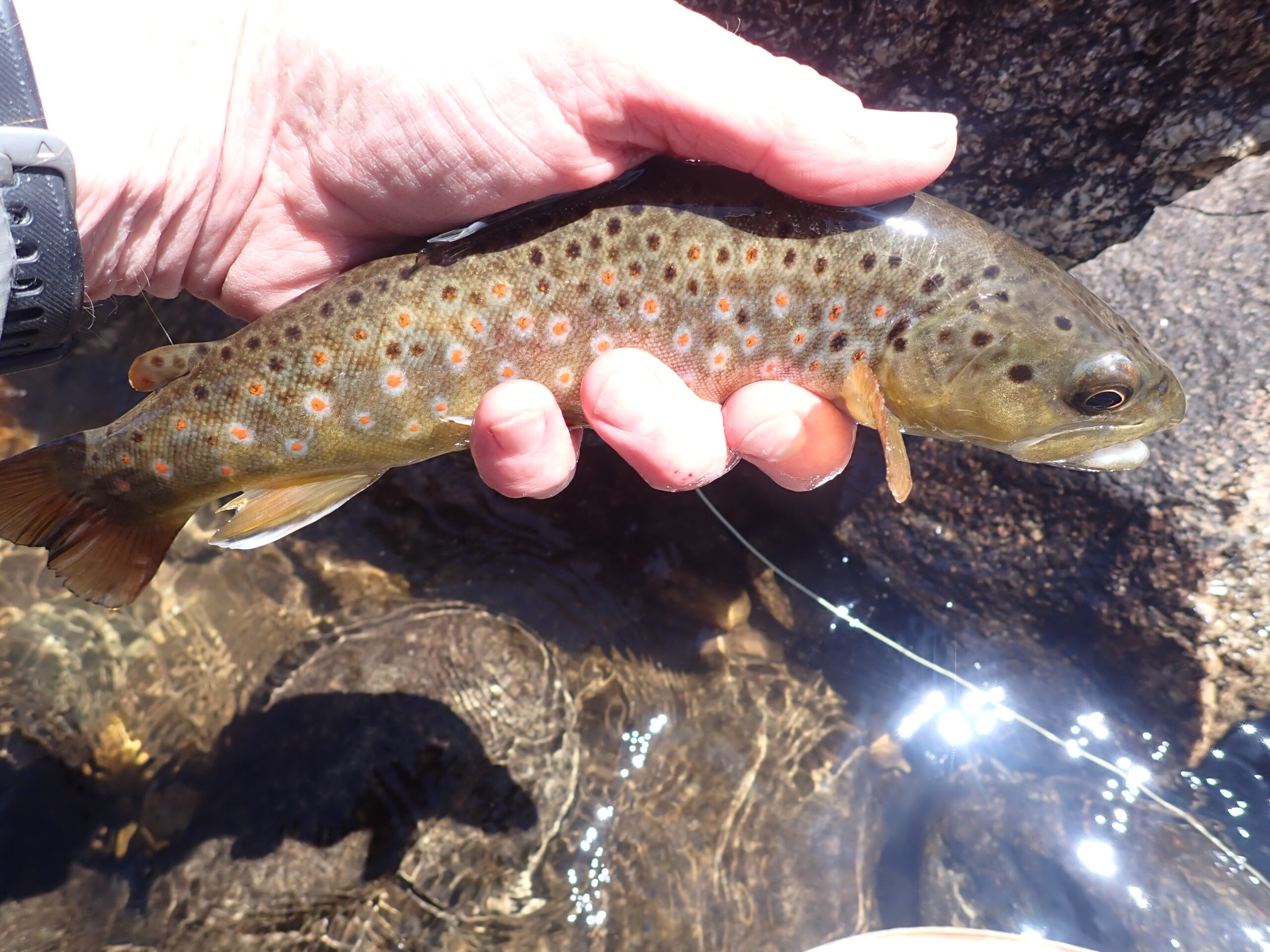 Not a Bad Start
Not a Bad Start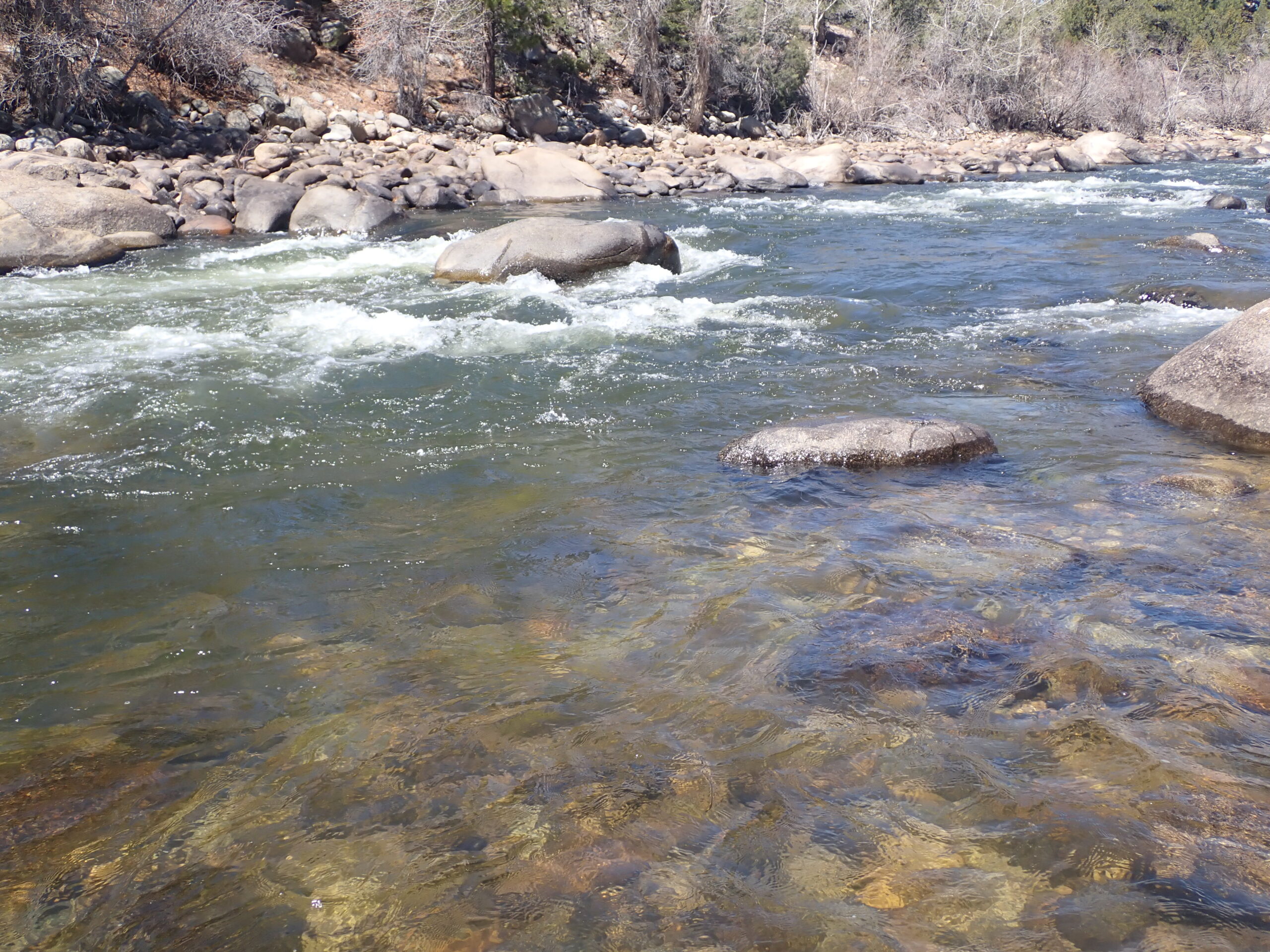 Salivating
Salivating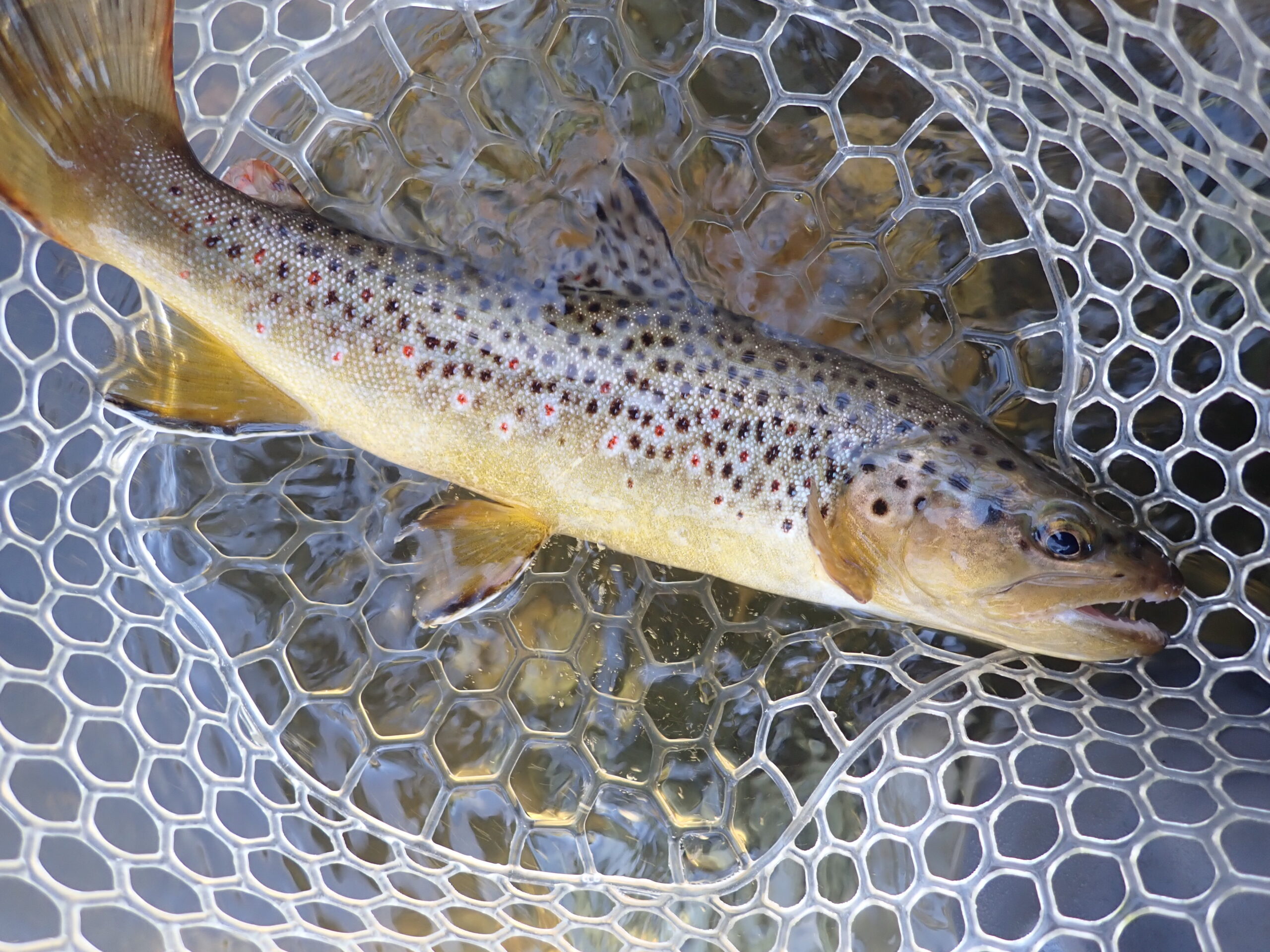 Very Respectable
Very Respectable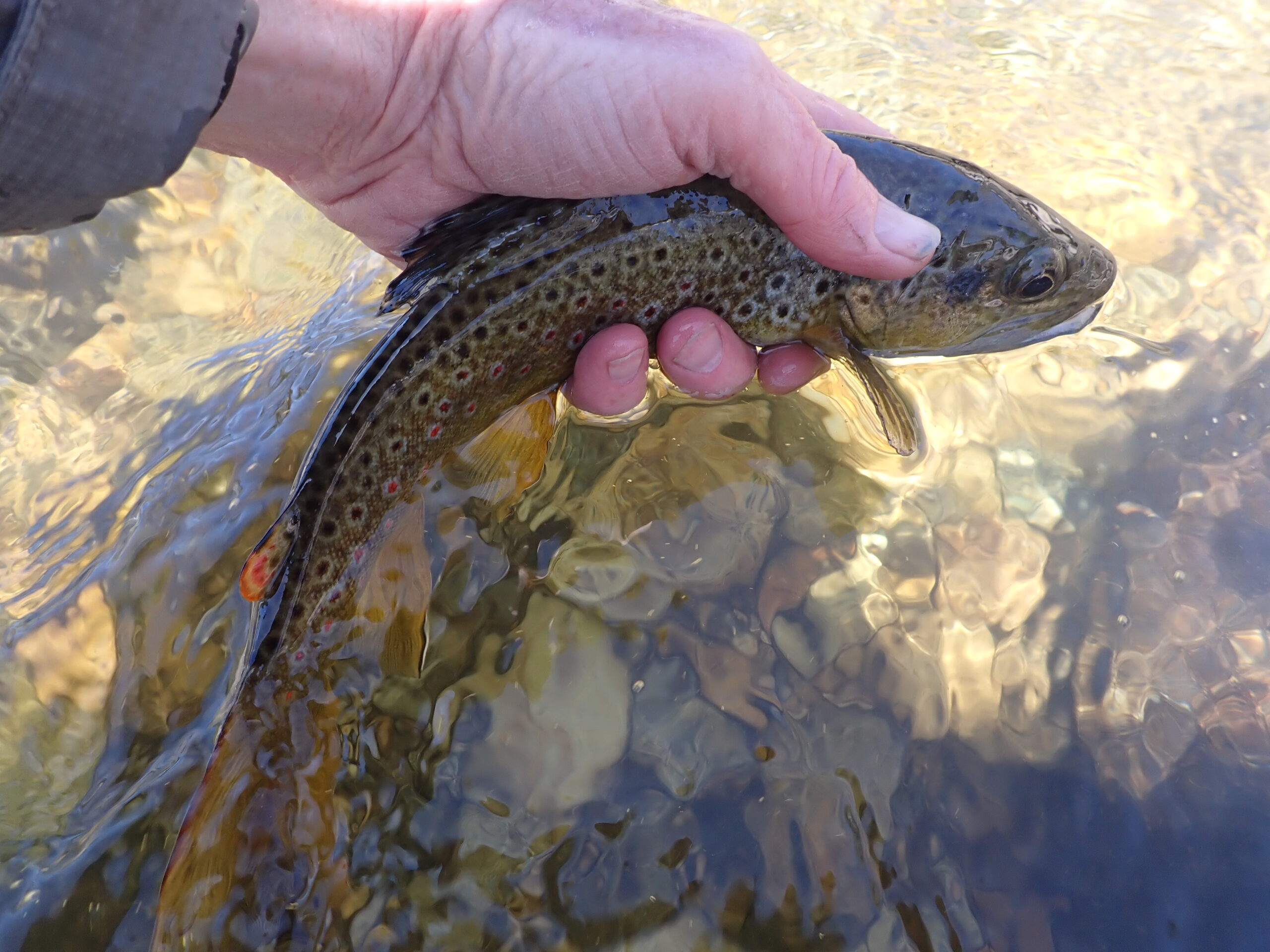 Above the Water
Above the Water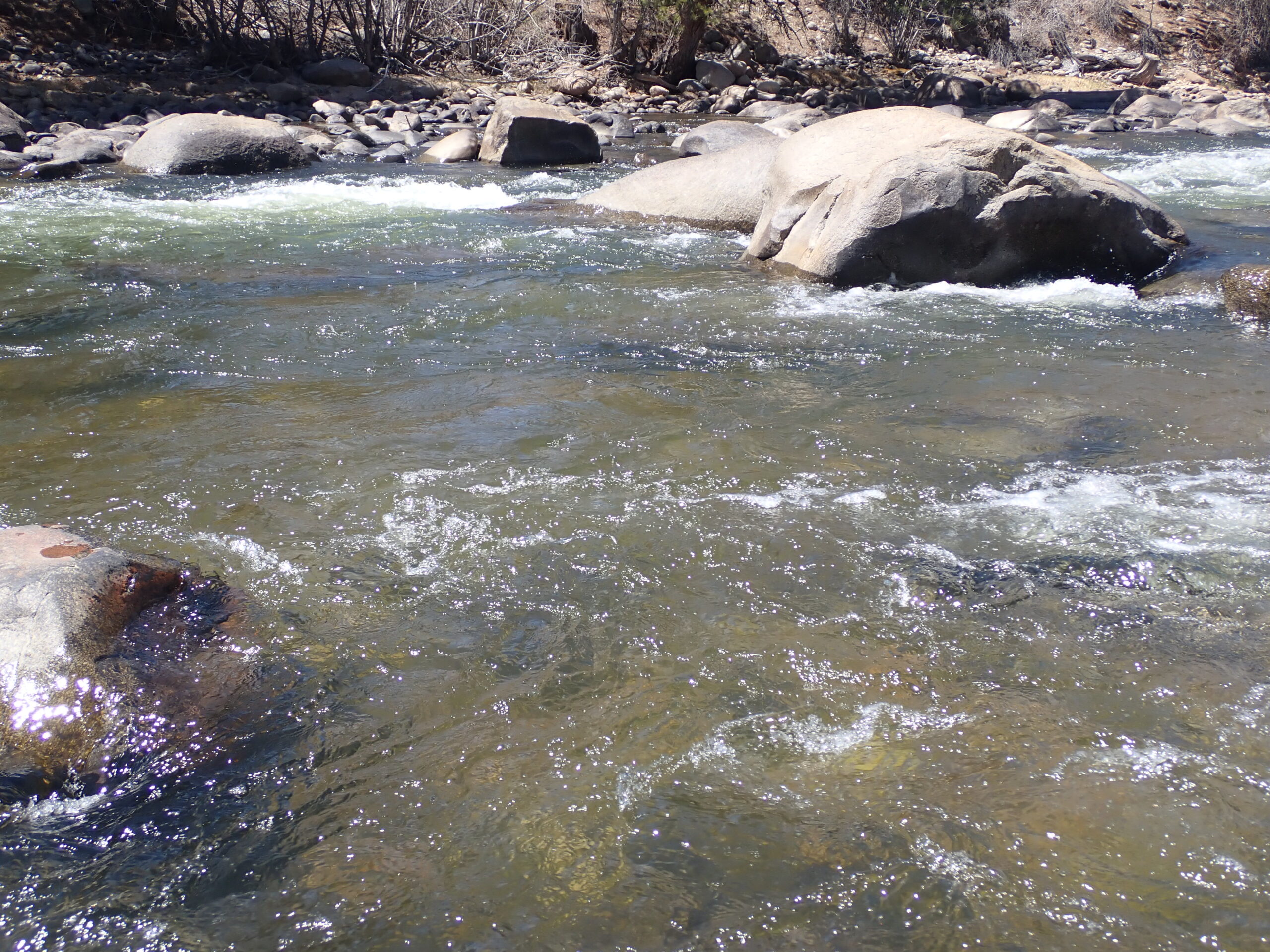 Slow Current and Depth Were Key
Slow Current and Depth Were Key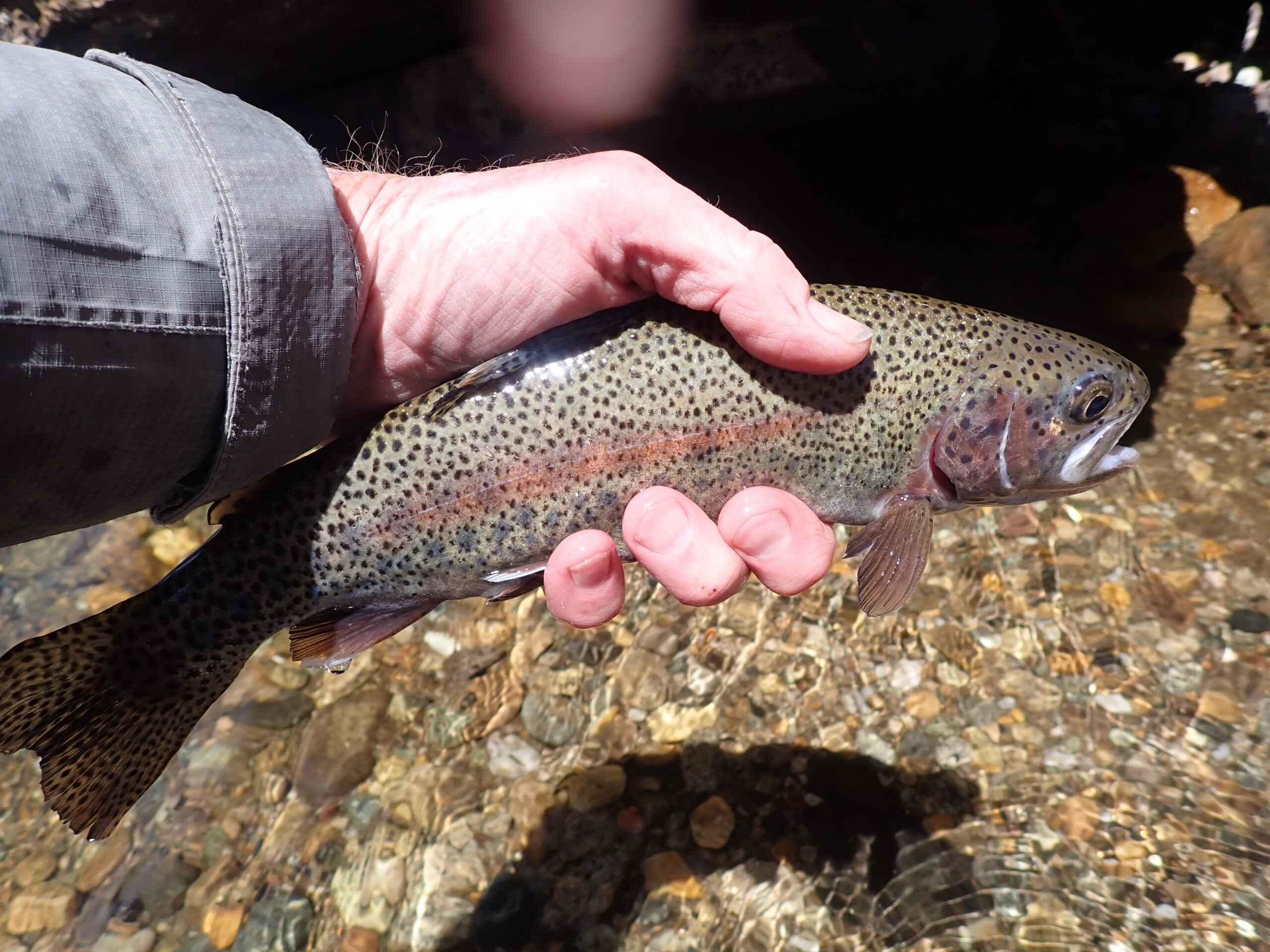 On Display
On Display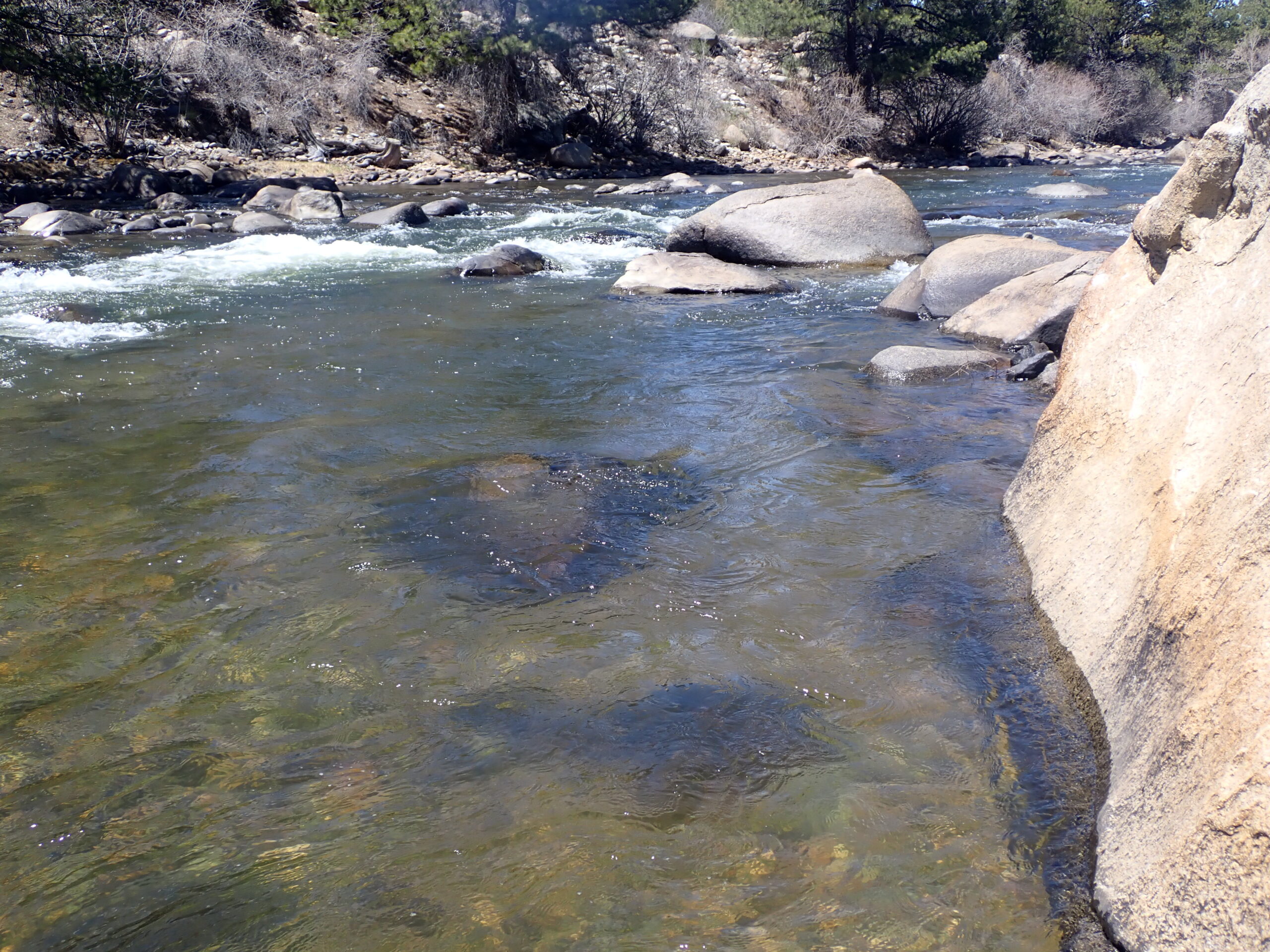 Portends Success
Portends Success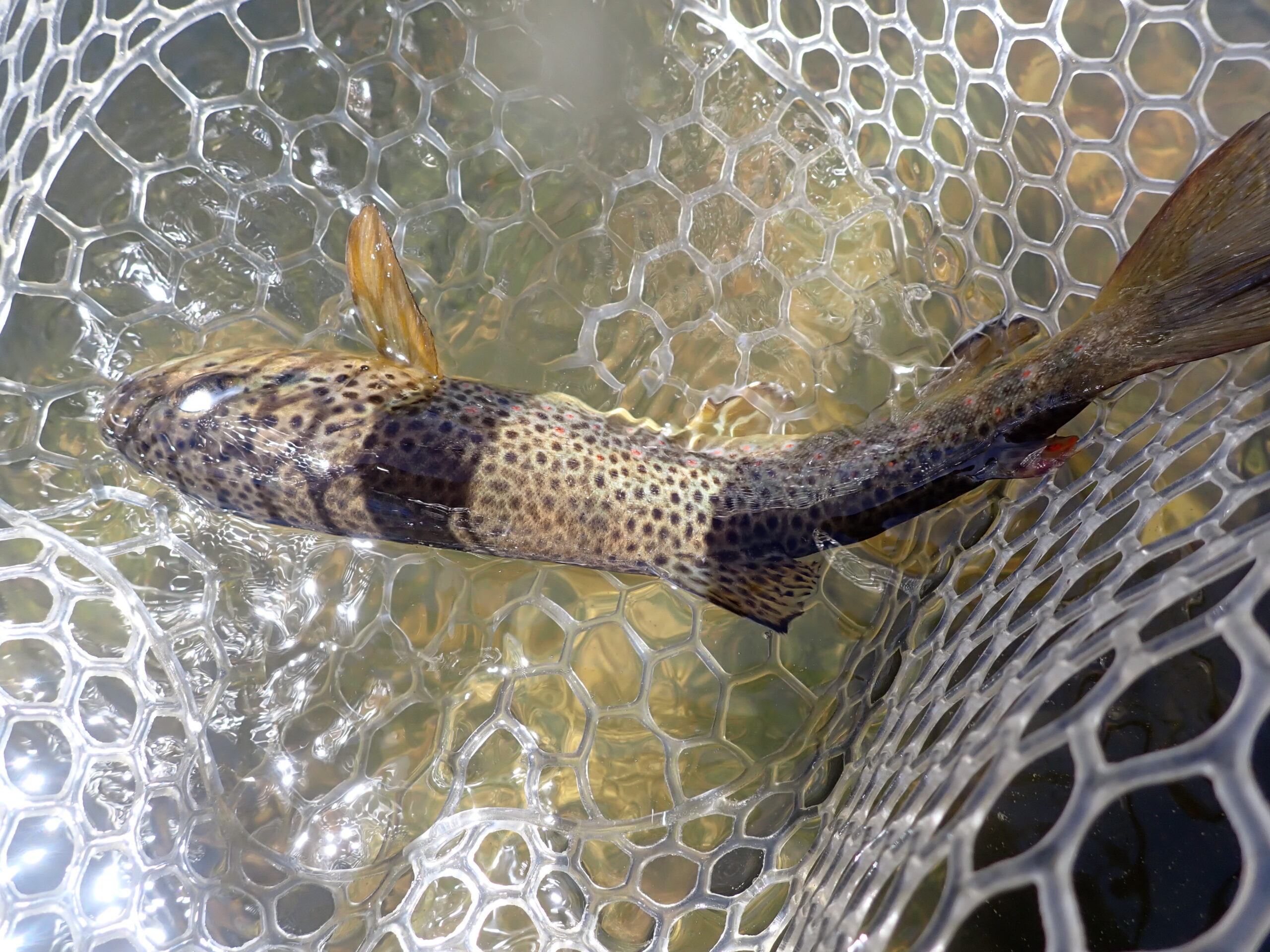 Nice One
Nice One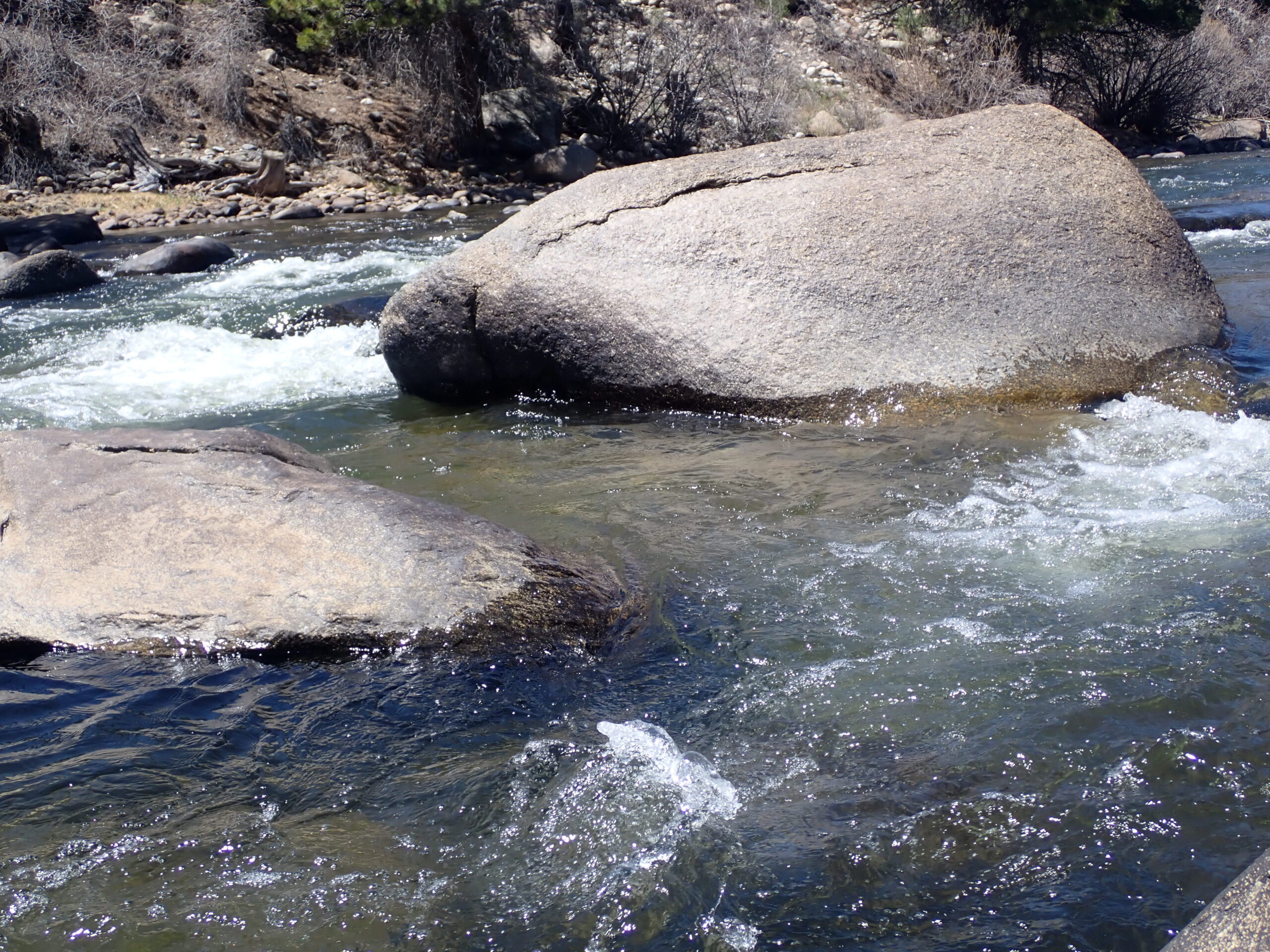 Surprised by One from the Narrow Space Between Exposed Rocks
Surprised by One from the Narrow Space Between Exposed Rocks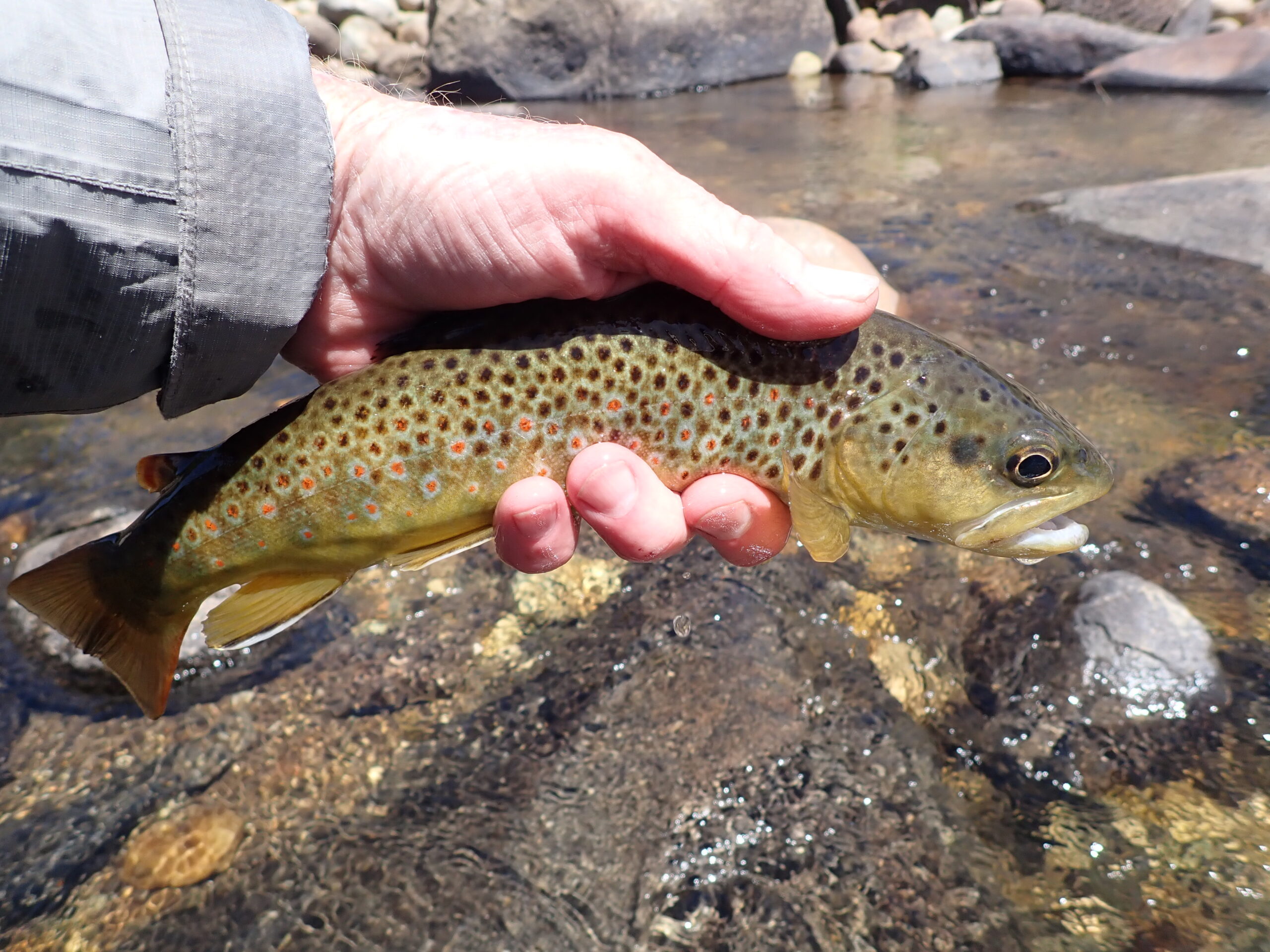 Spots and Colors Superb
Spots and Colors Superb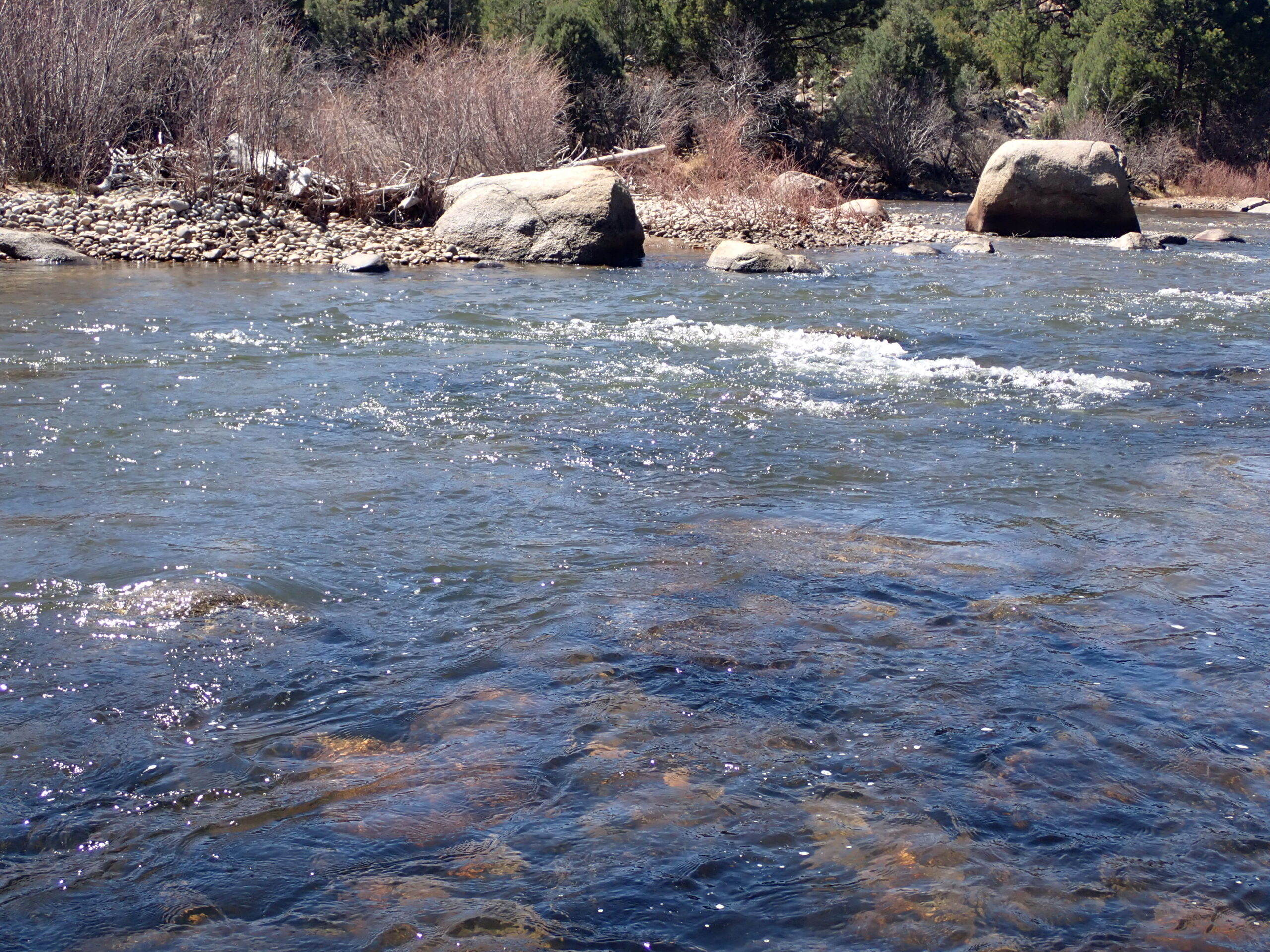 Riffle Section
Riffle Section Already on Its Way
Already on Its Way Center Trough
Center Trough Look at the Load on Ben’s Rod
Look at the Load on Ben’s Rod Brown Trout Success
Brown Trout Success Pocket Water Paradise
Pocket Water Paradise Covered with Ink Spots
Covered with Ink Spots Deep Slot
Deep Slot Ben Focused
Ben Focused I Love This View
I Love This View Late Afternoon Cloud Cover
Late Afternoon Cloud Cover Ben Wading Deep
Ben Wading Deep Behind the Boulder
Behind the Boulder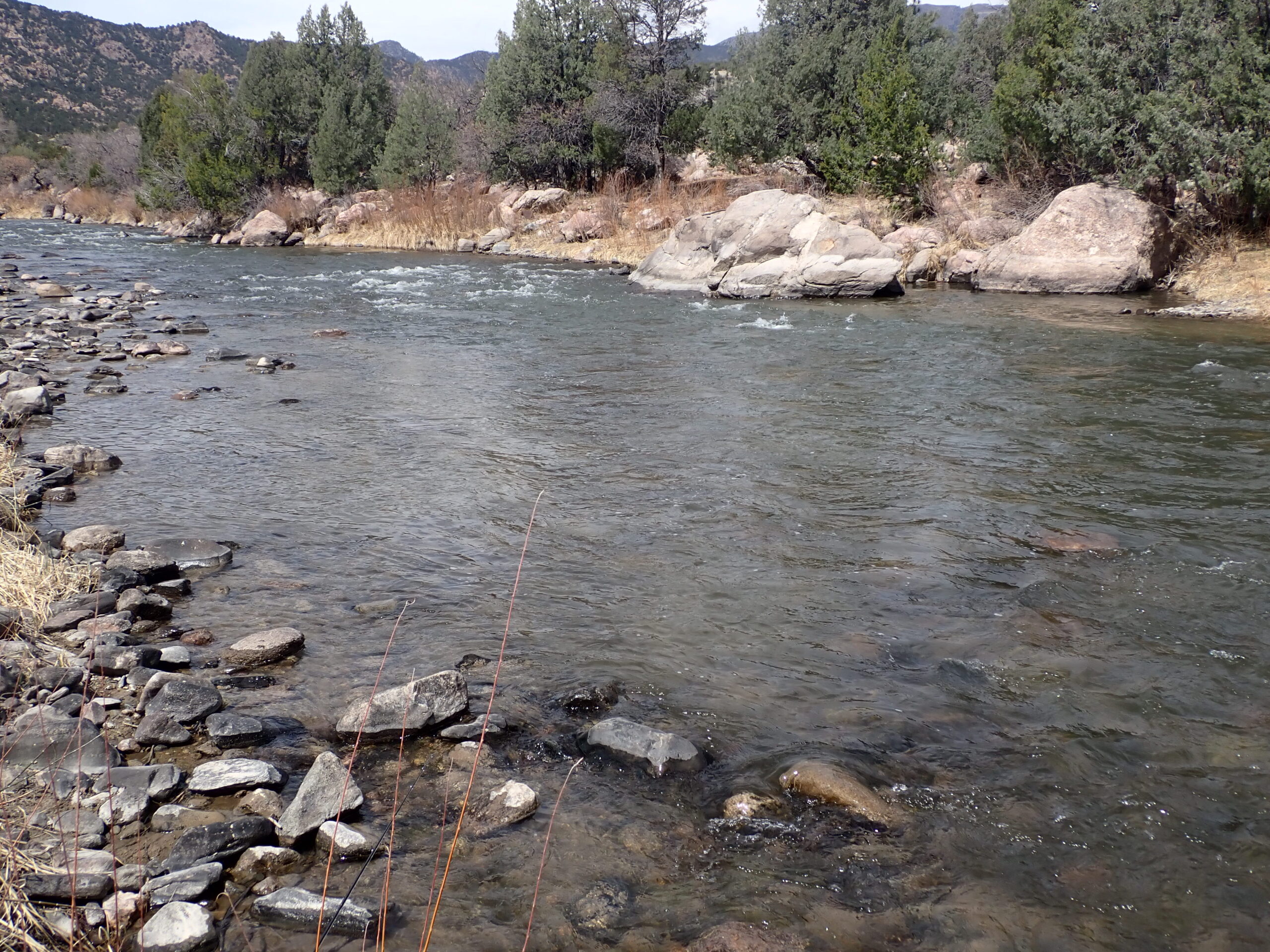 Lunch View
Lunch View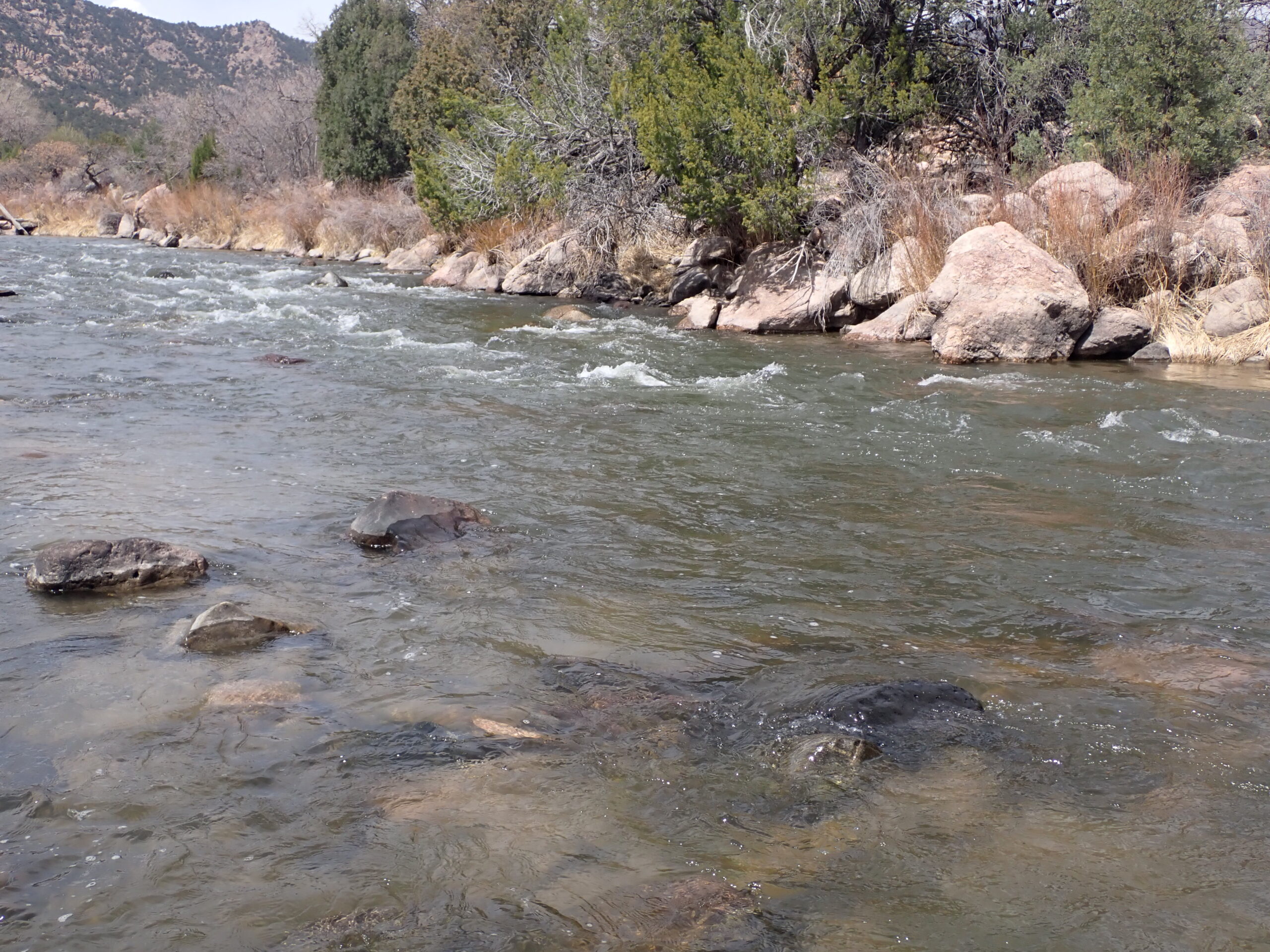 Nice Deep Trough
Nice Deep Trough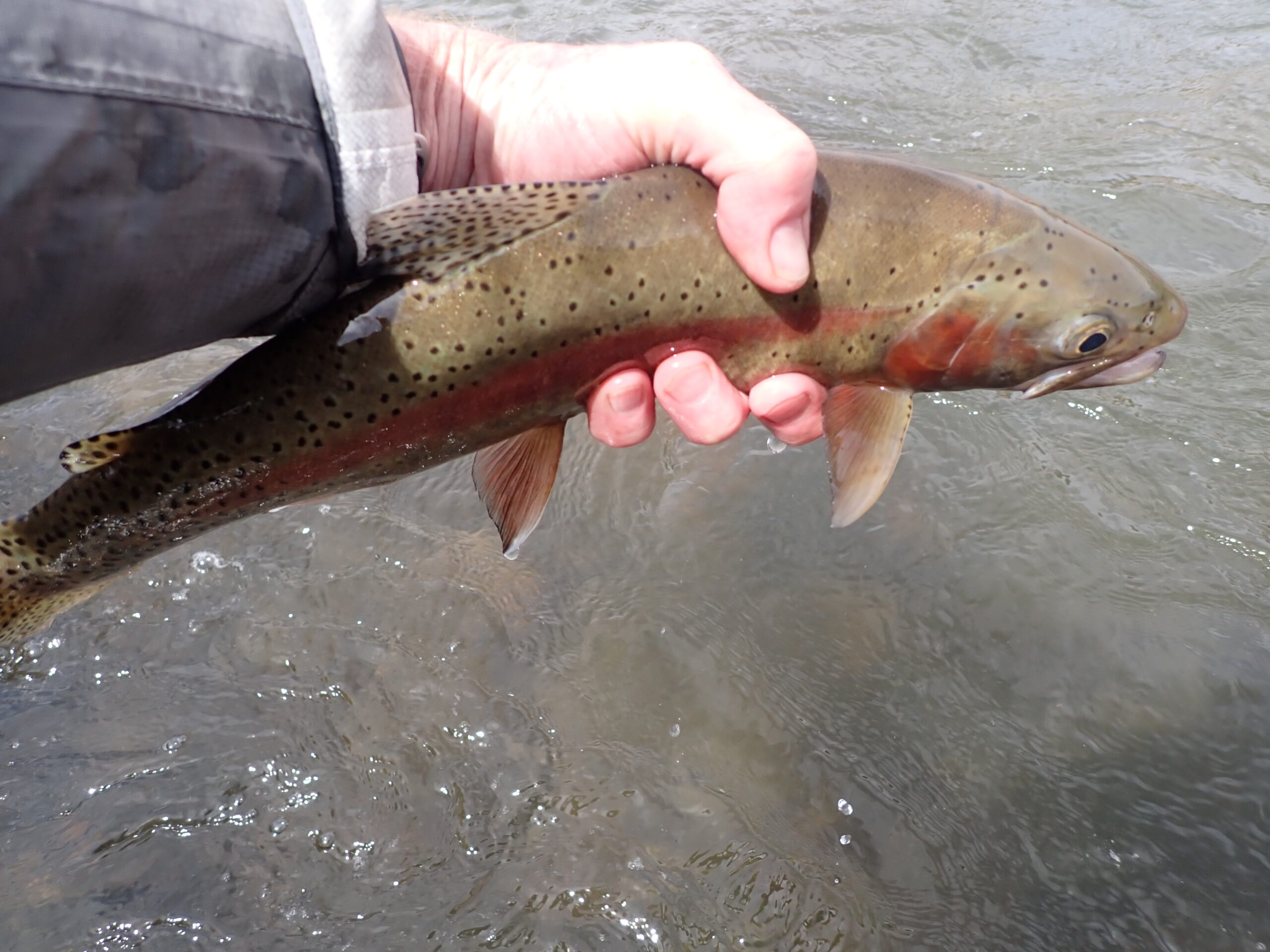 Get a Grip
Get a Grip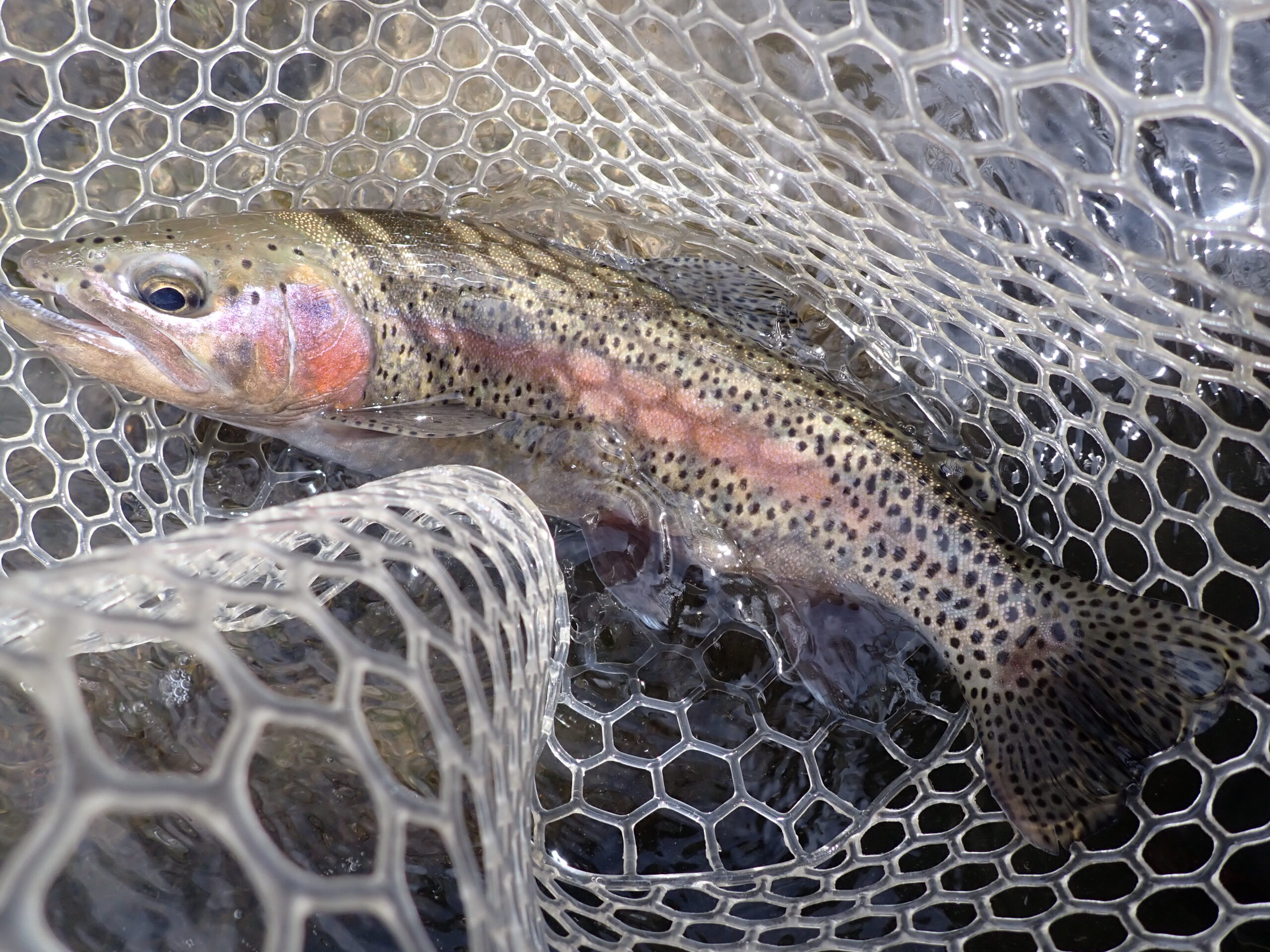 Perfect Spots
Perfect Spots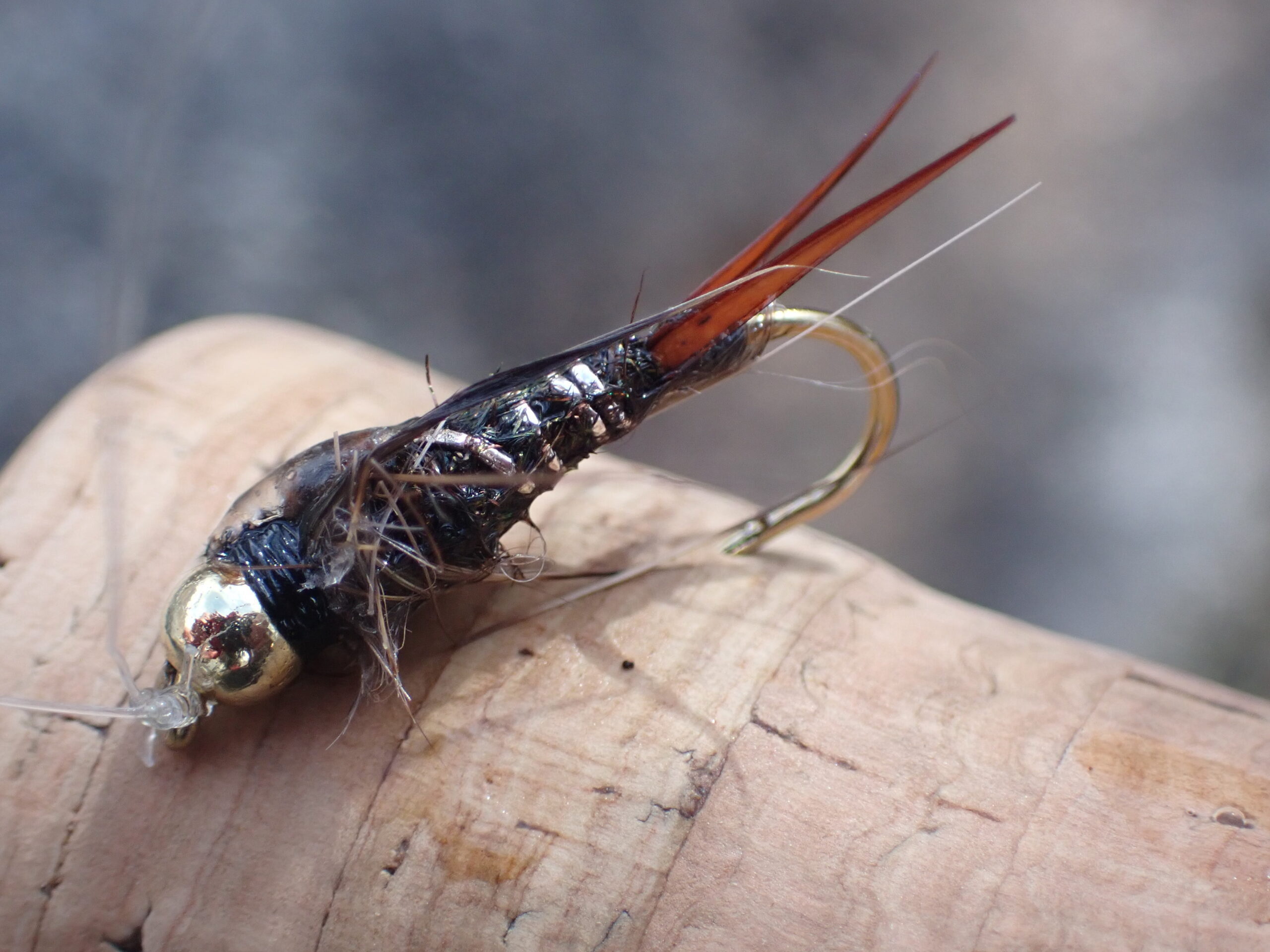 20 Incher
20 Incher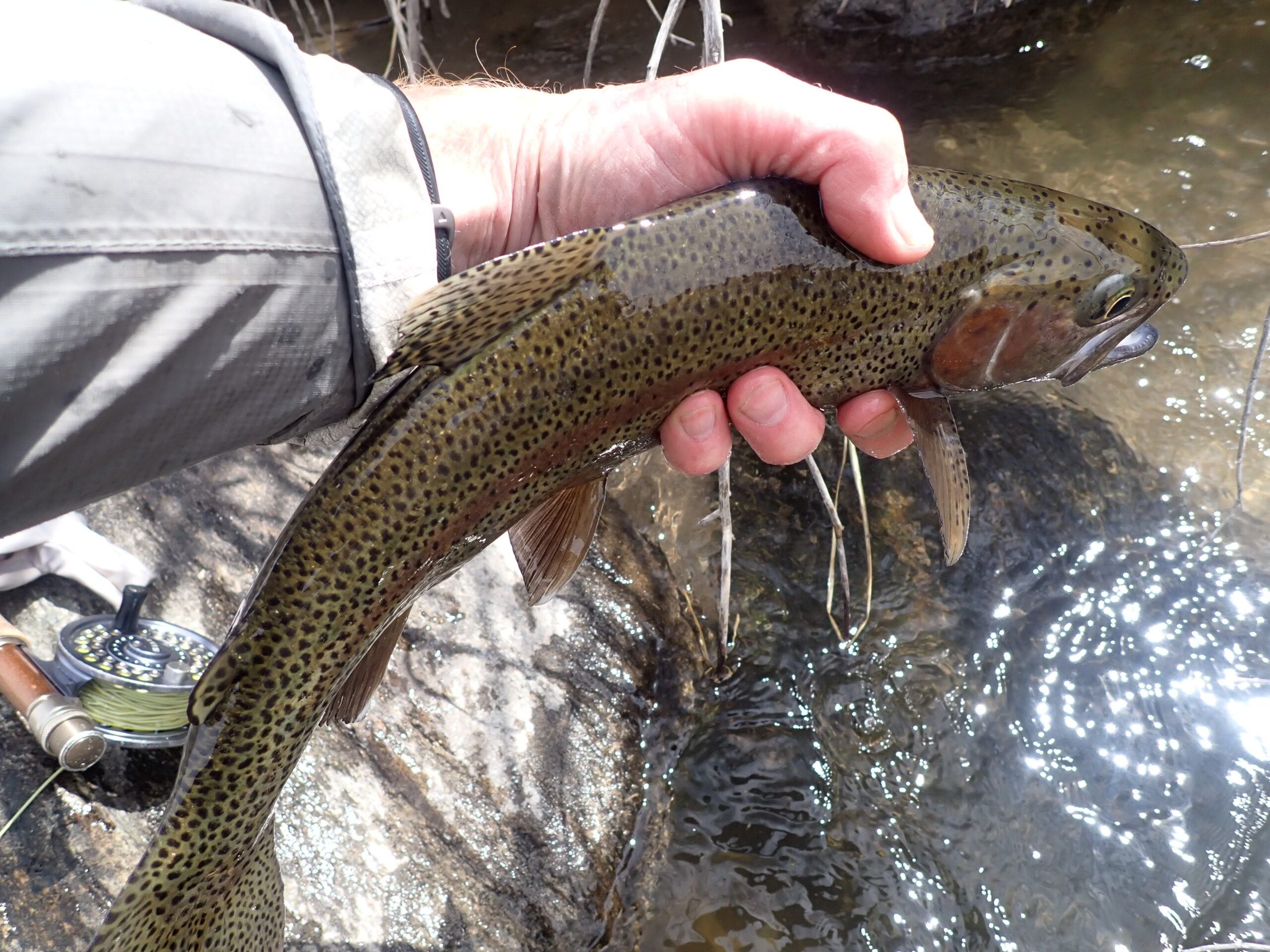 Woah. Long One
Woah. Long One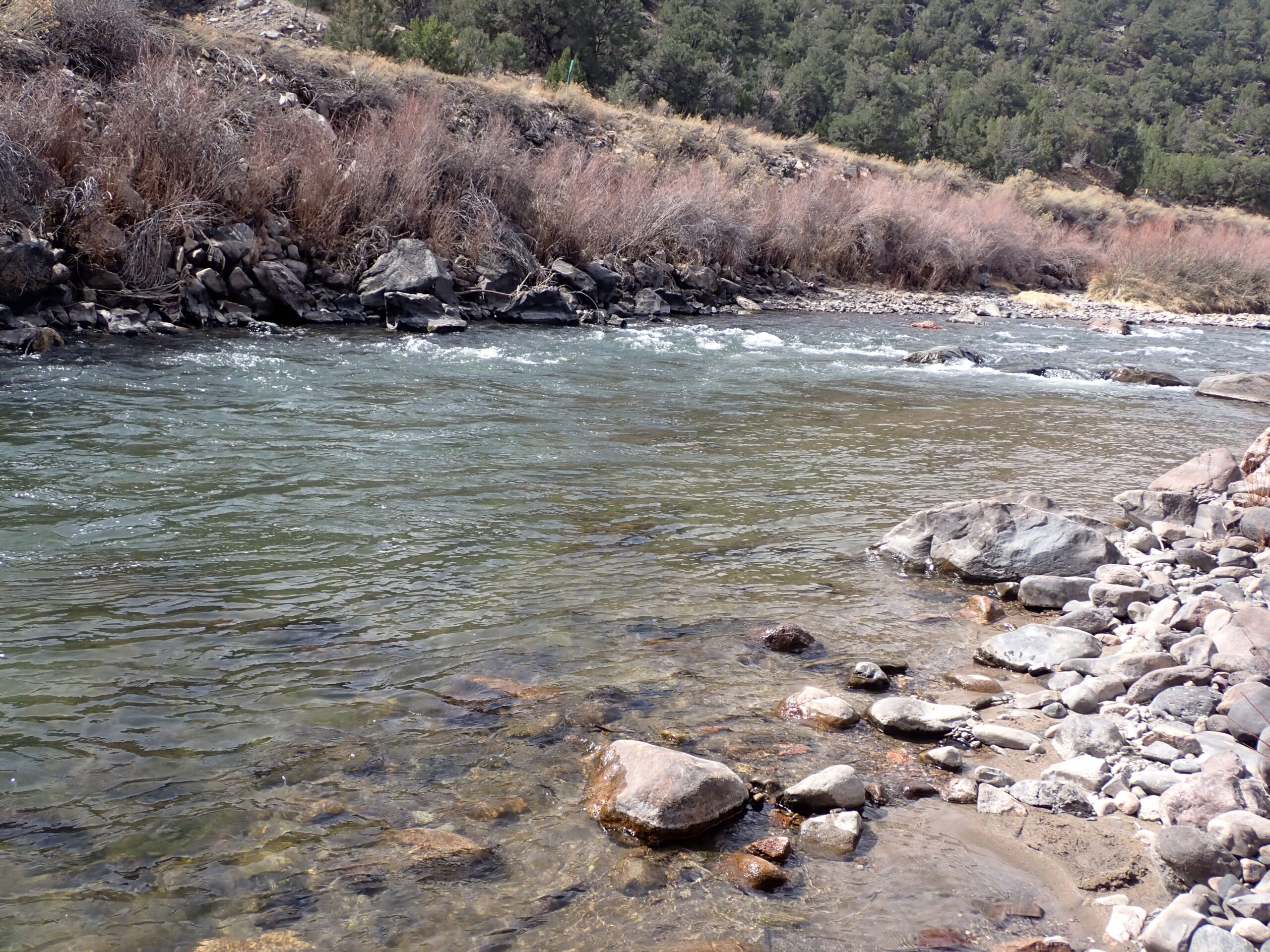 A Solid Starting Place
A Solid Starting Place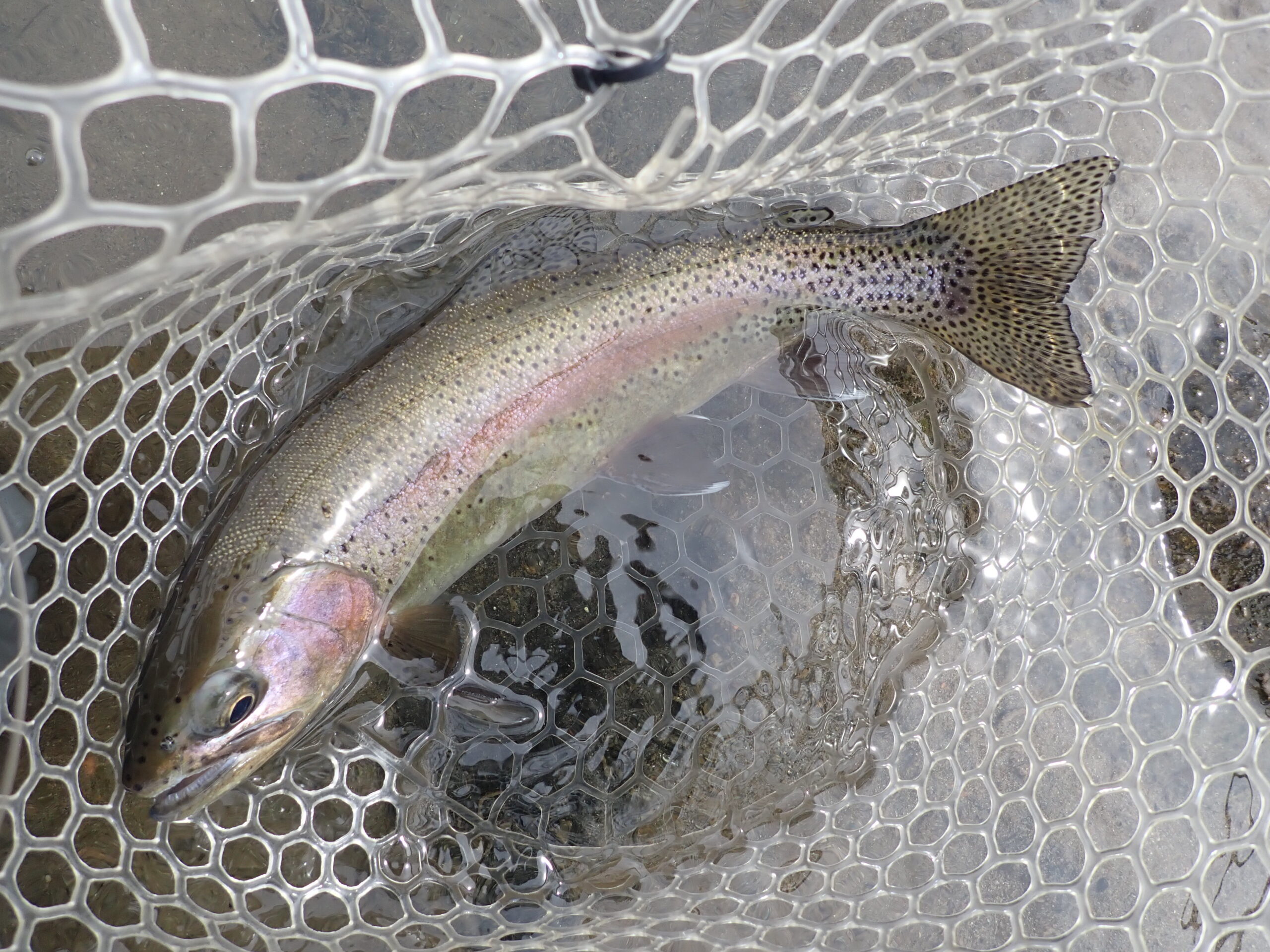 Solid Start
Solid Start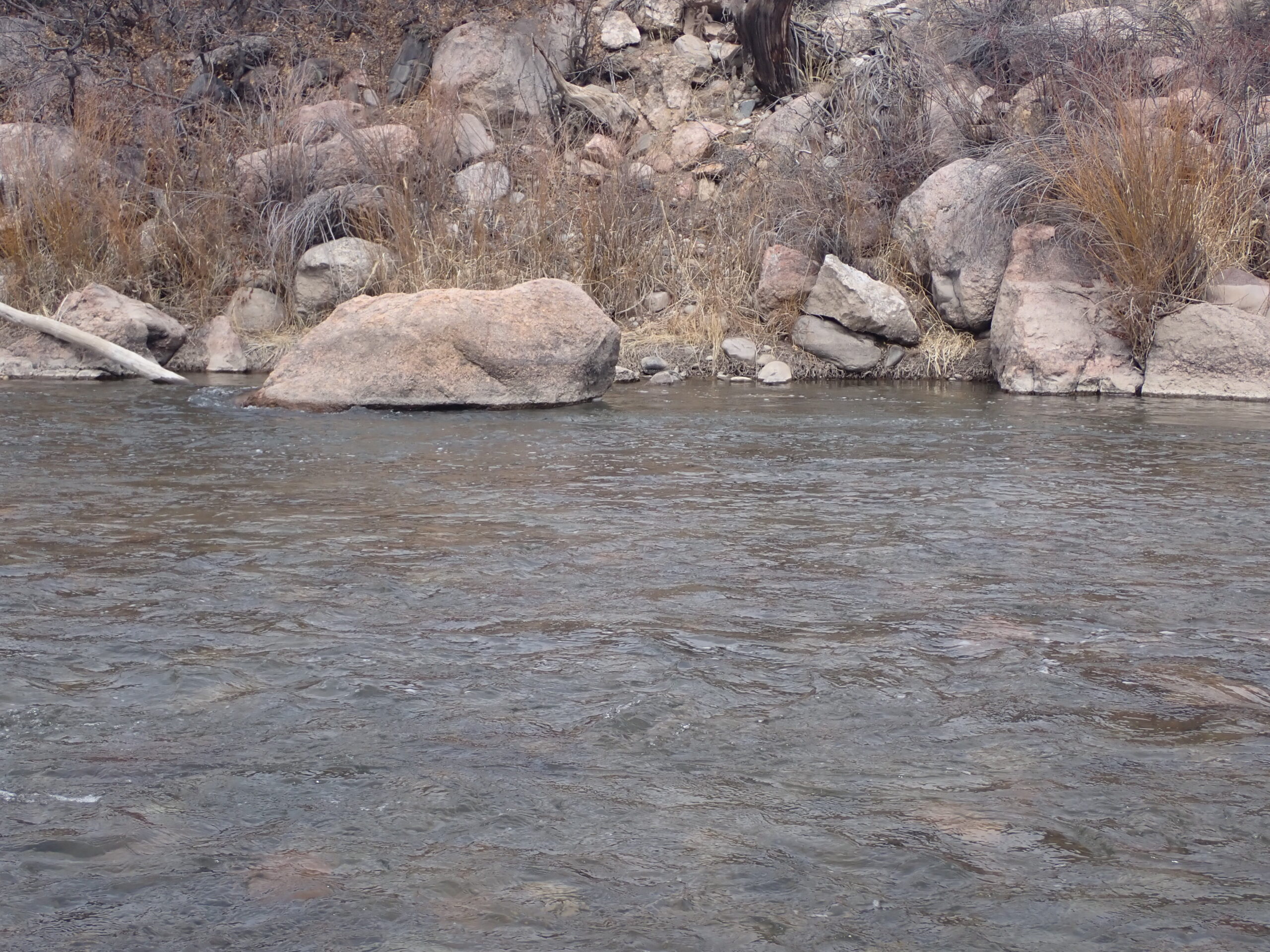 Scanning for Rises
Scanning for Rises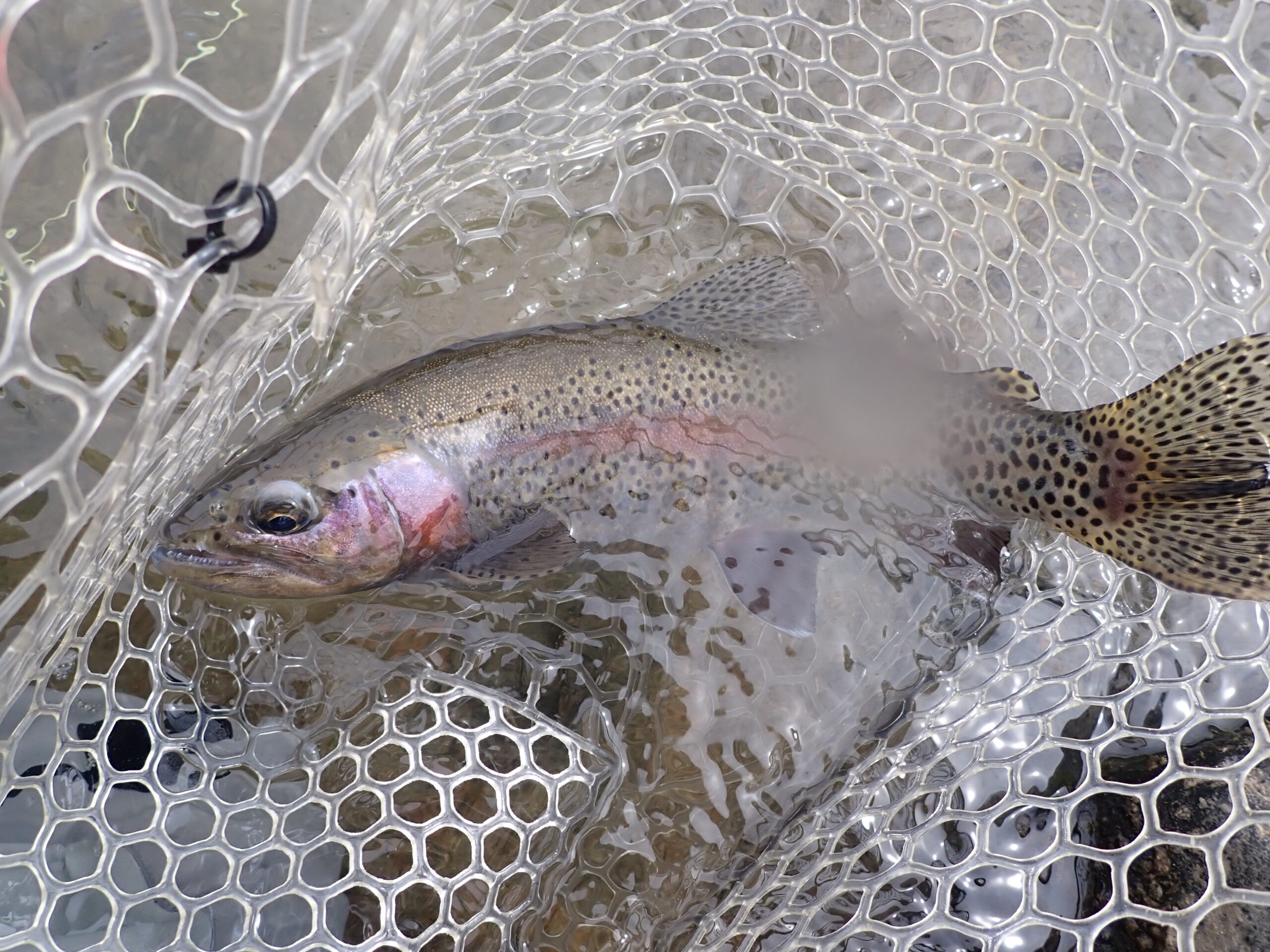 A Third Rainbow on a Dry
A Third Rainbow on a Dry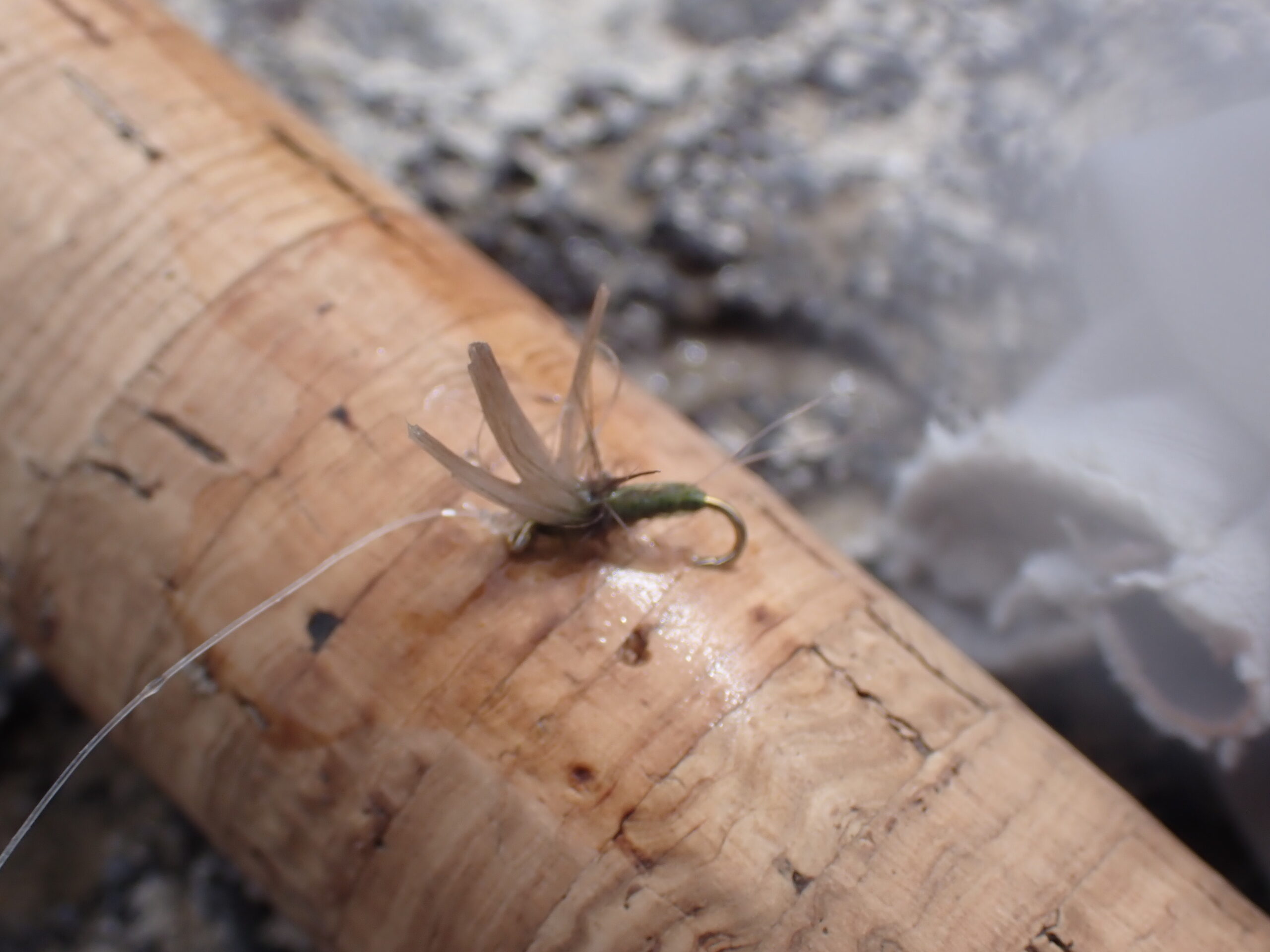 The Fly the Trout Liked
The Fly the Trout Liked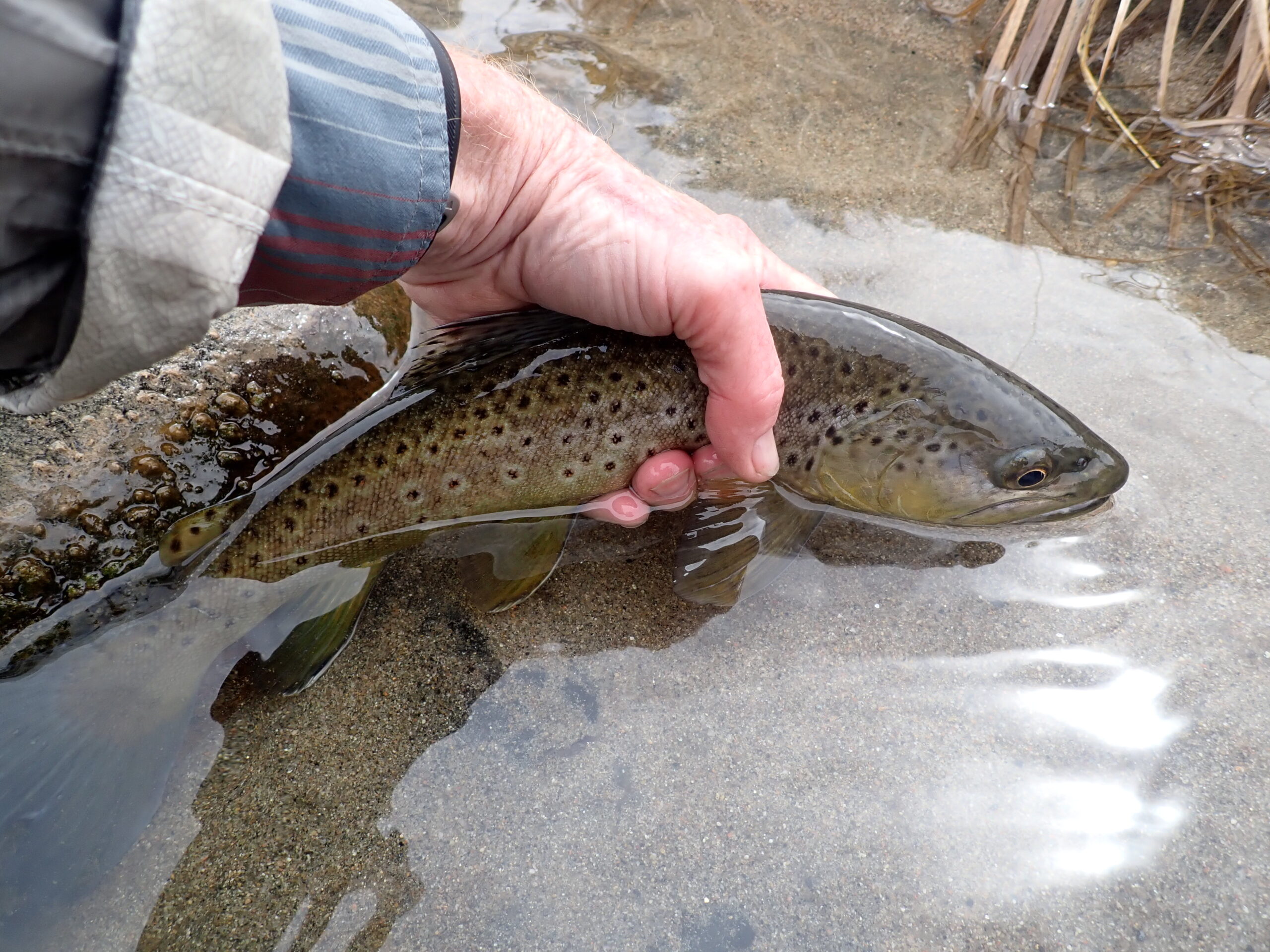 Lowering
Lowering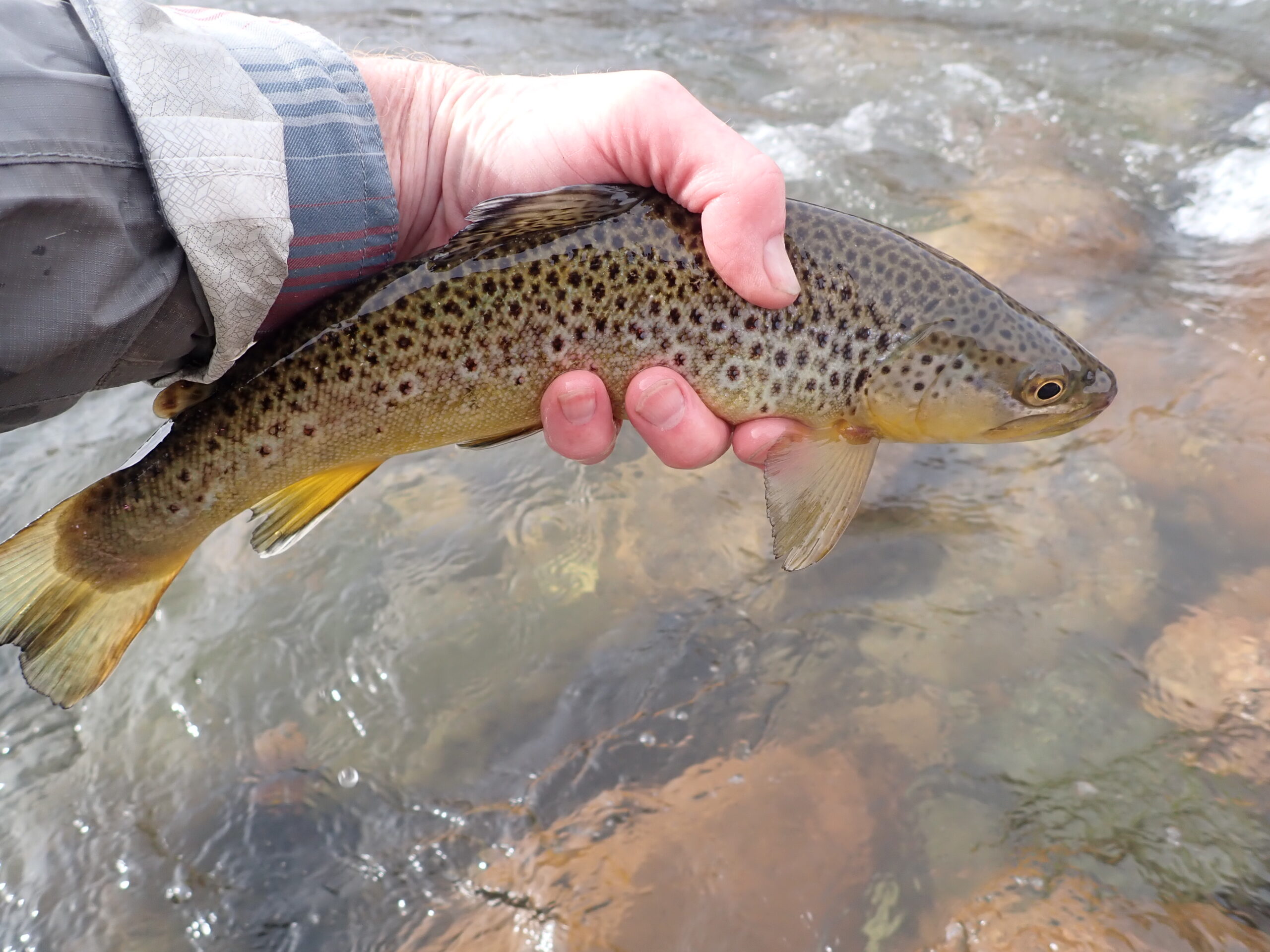 I Will Accept It
I Will Accept It Swept in Front of the Largest Rock and Nailed the Brown Trout
Swept in Front of the Largest Rock and Nailed the Brown Trout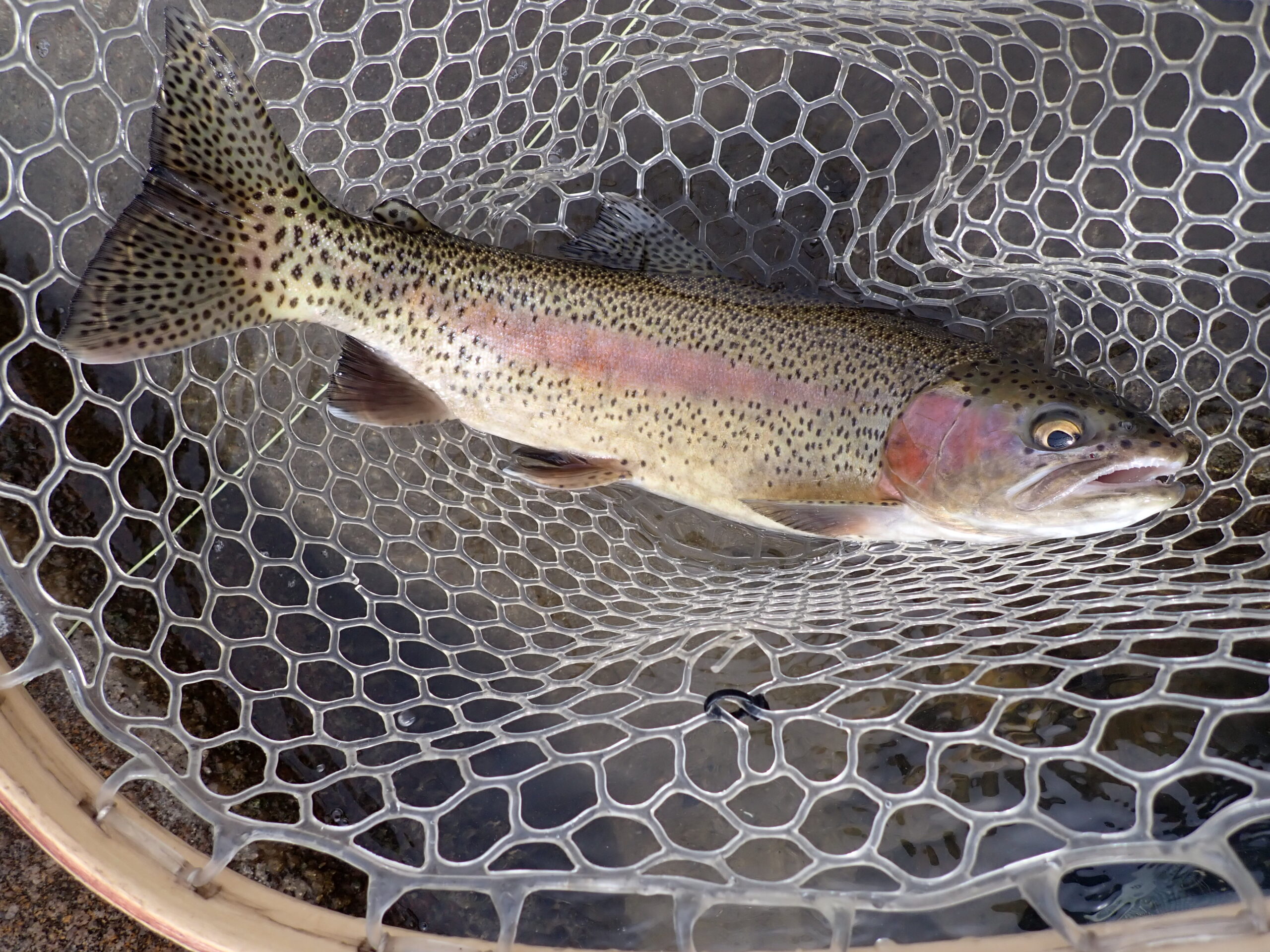 Sixteen Inch Slab
Sixteen Inch Slab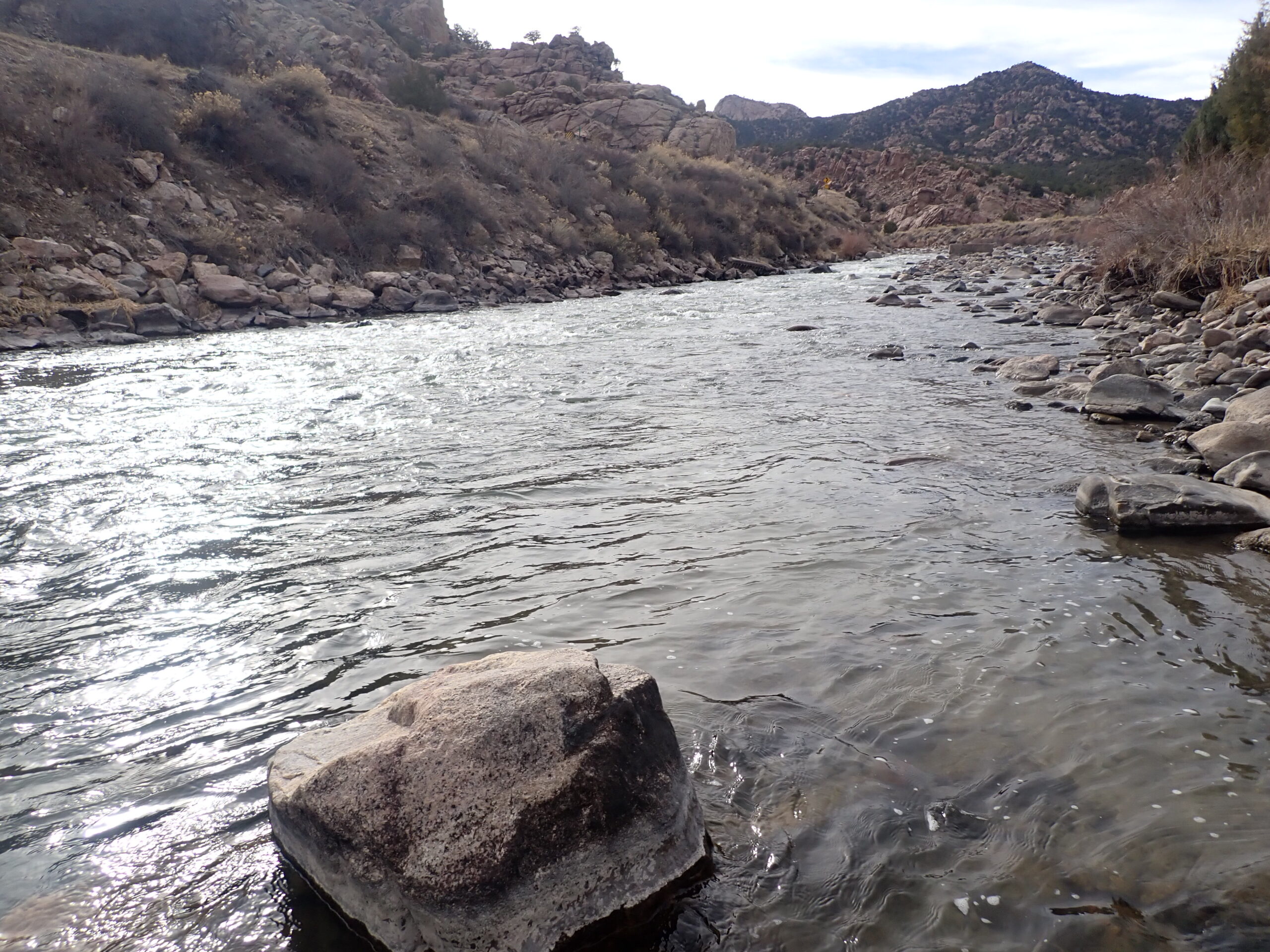 Rainbow Emerged from Above the Exposed Rock
Rainbow Emerged from Above the Exposed Rock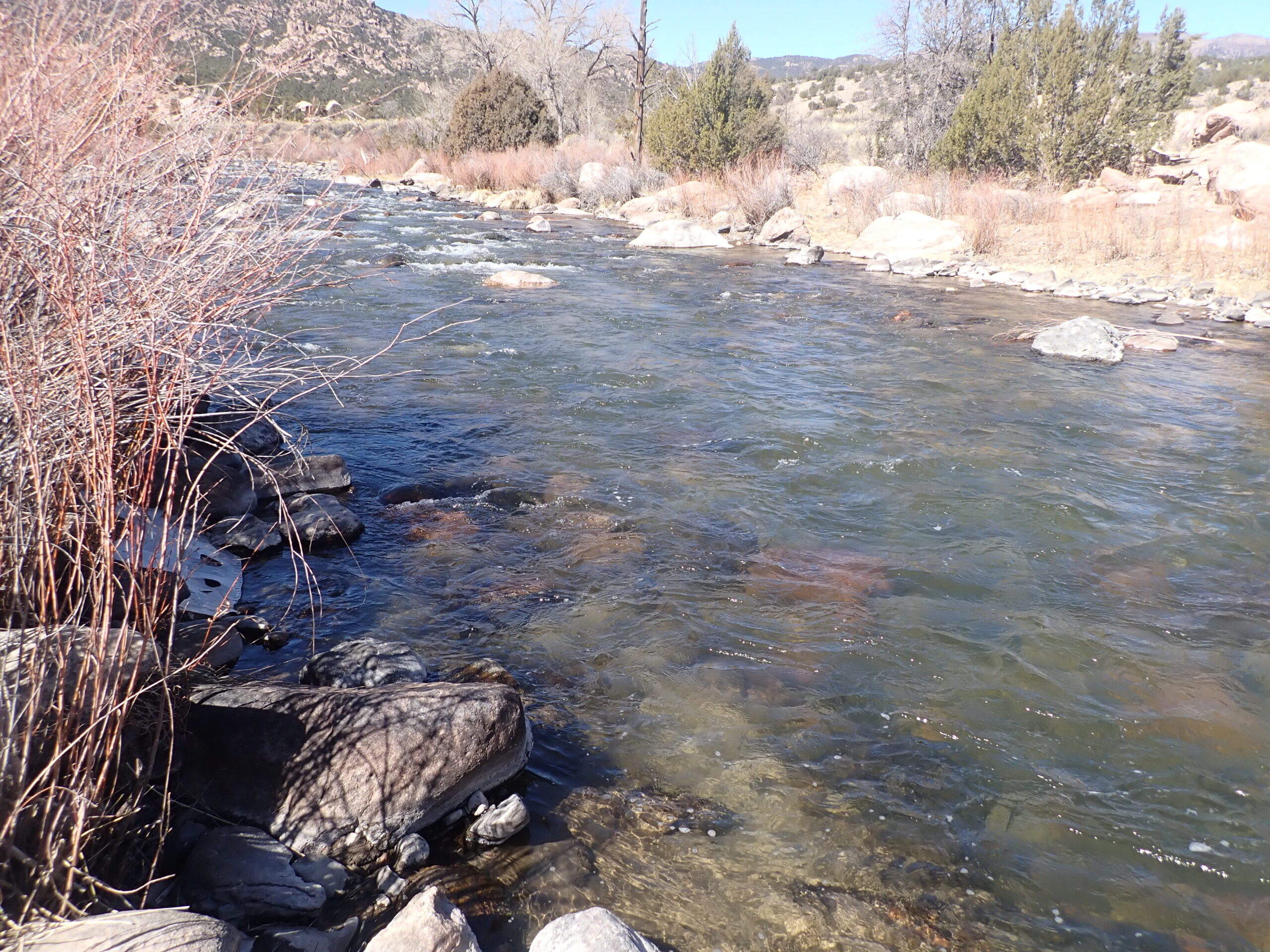 Starting Point
Starting Point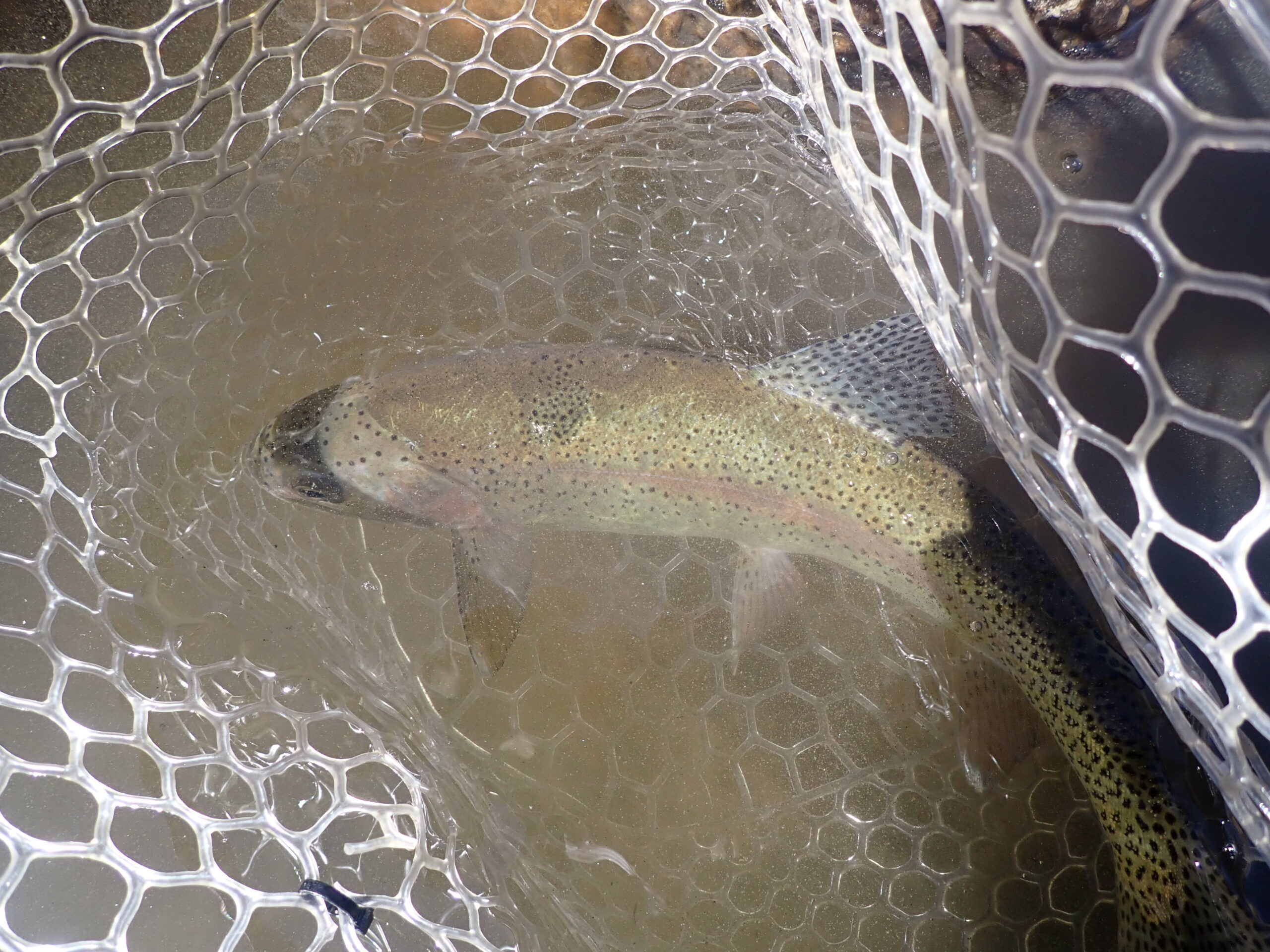 Number One Was This Rainbow That Grabbed the Olive Perdigon
Number One Was This Rainbow That Grabbed the Olive Perdigon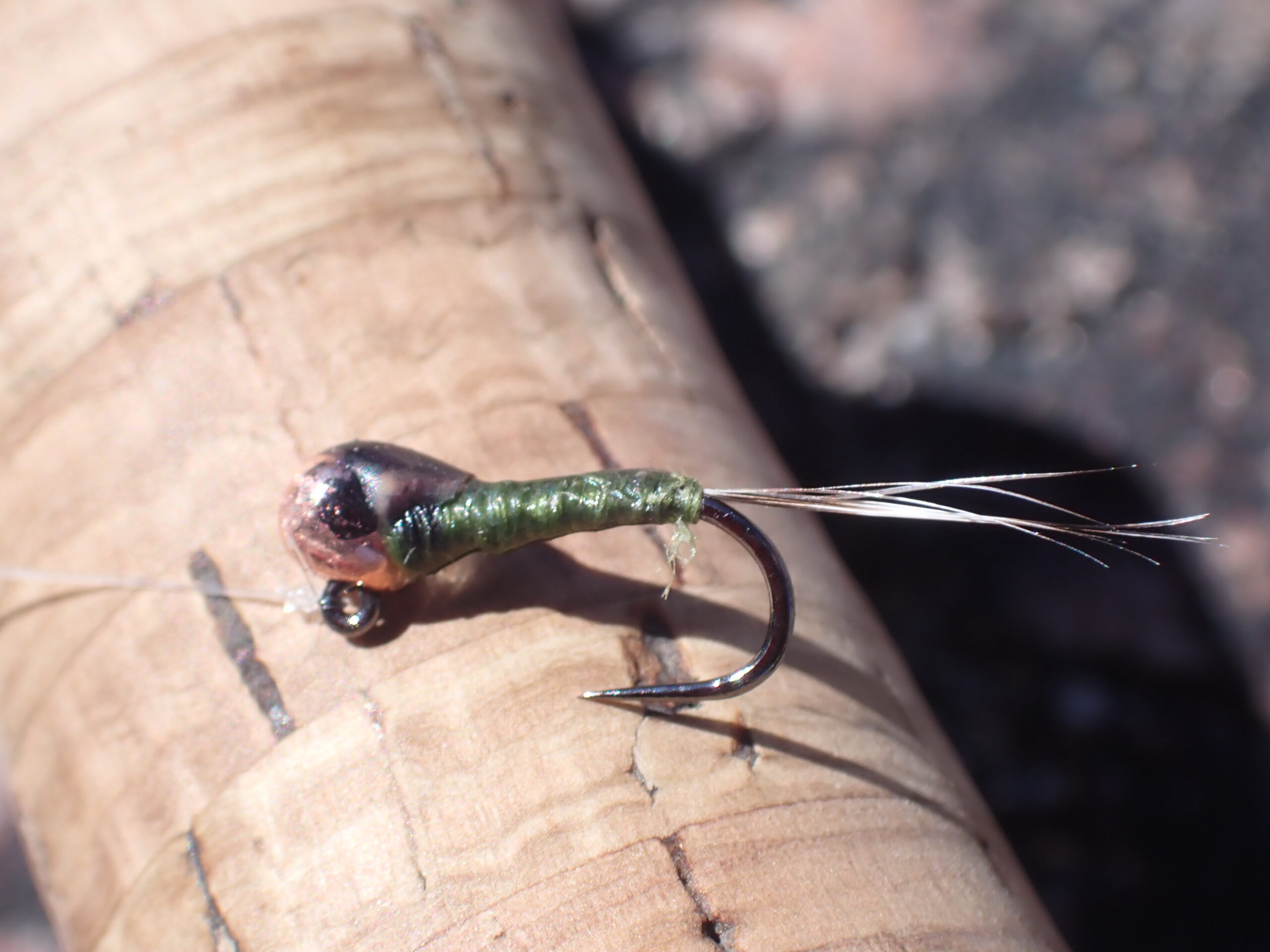 Olive Perdigon Saved the Day
Olive Perdigon Saved the Day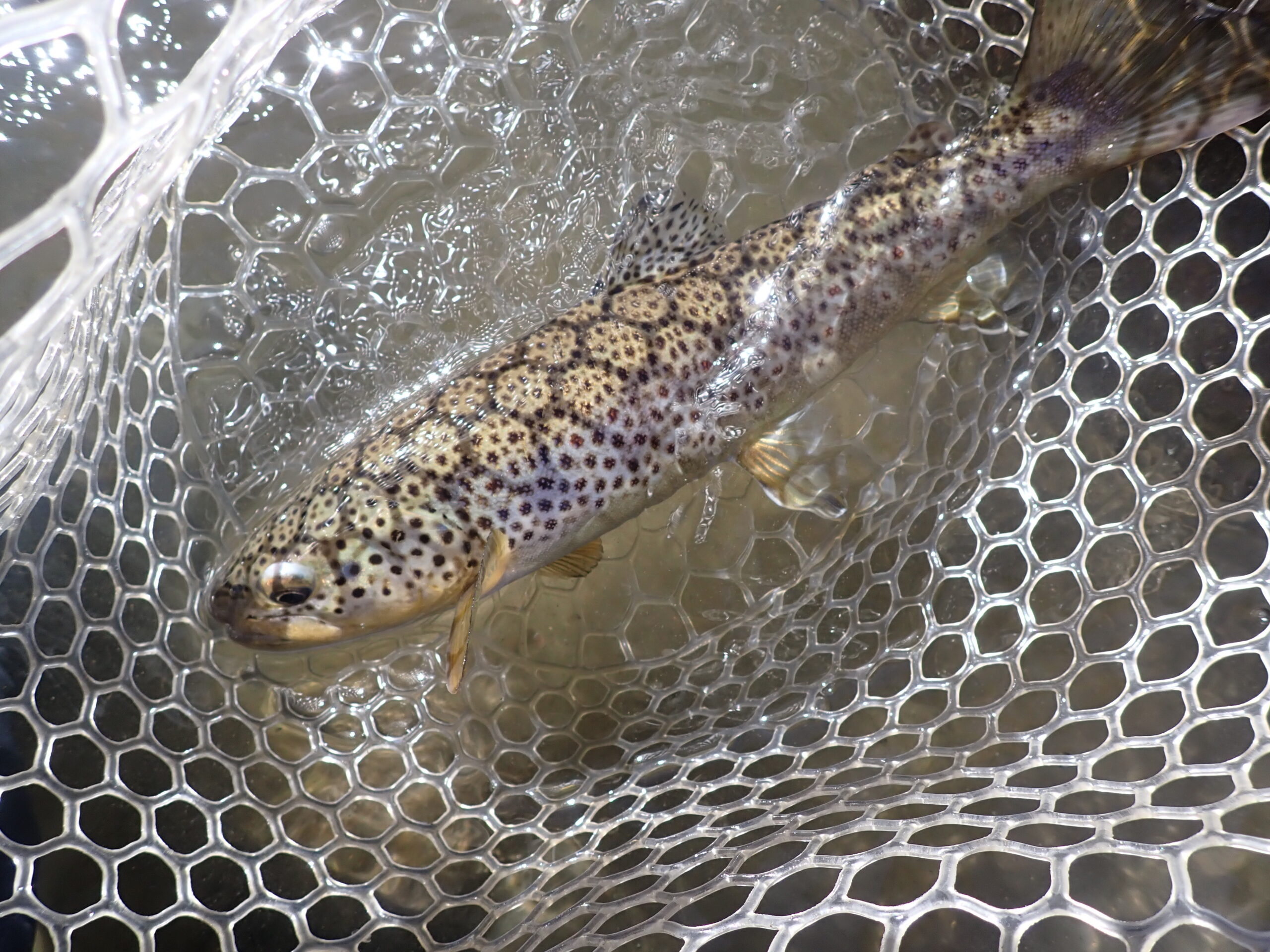 Nice Catch
Nice Catch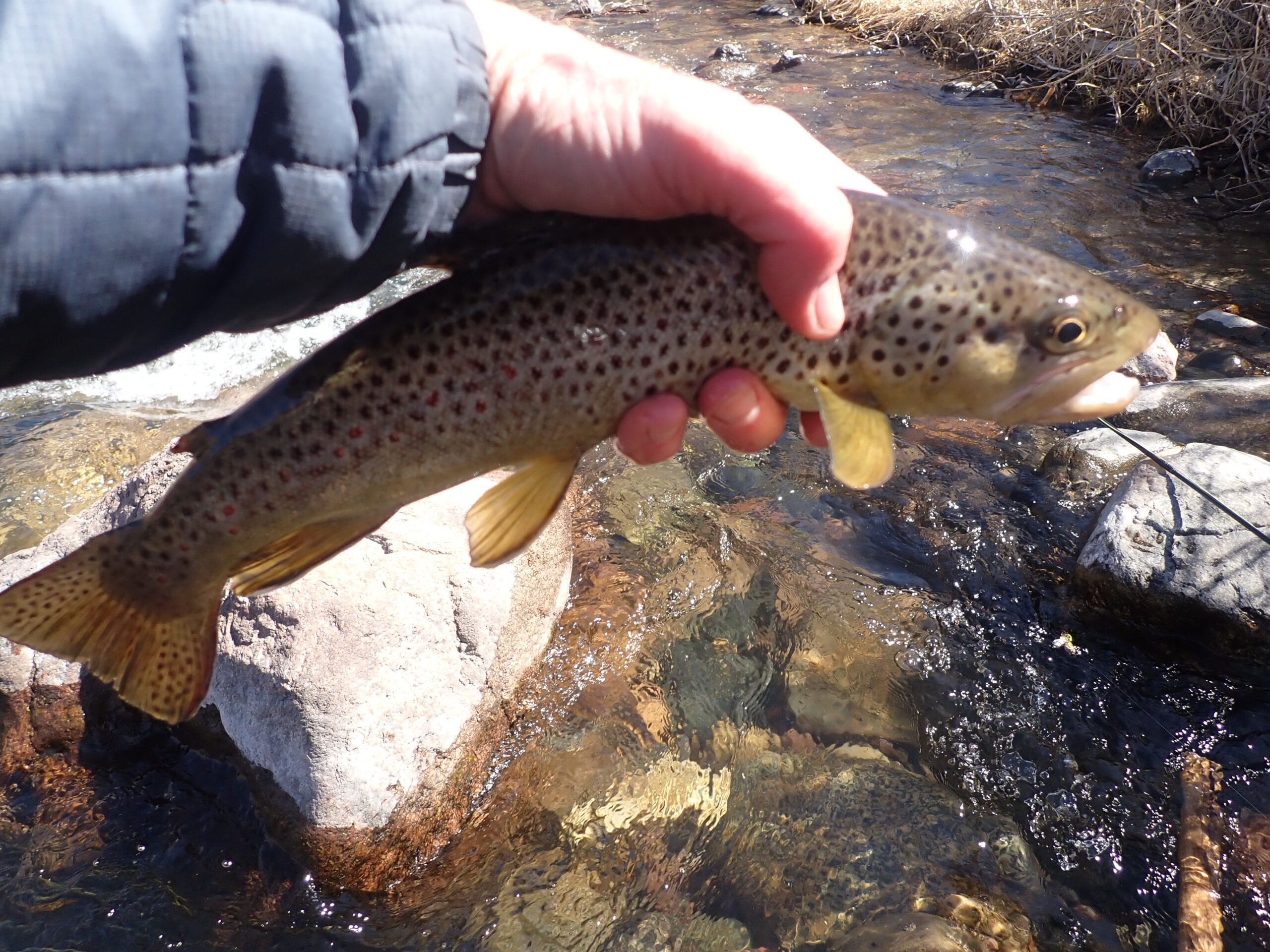 Another Fine Wild Brown Trout
Another Fine Wild Brown Trout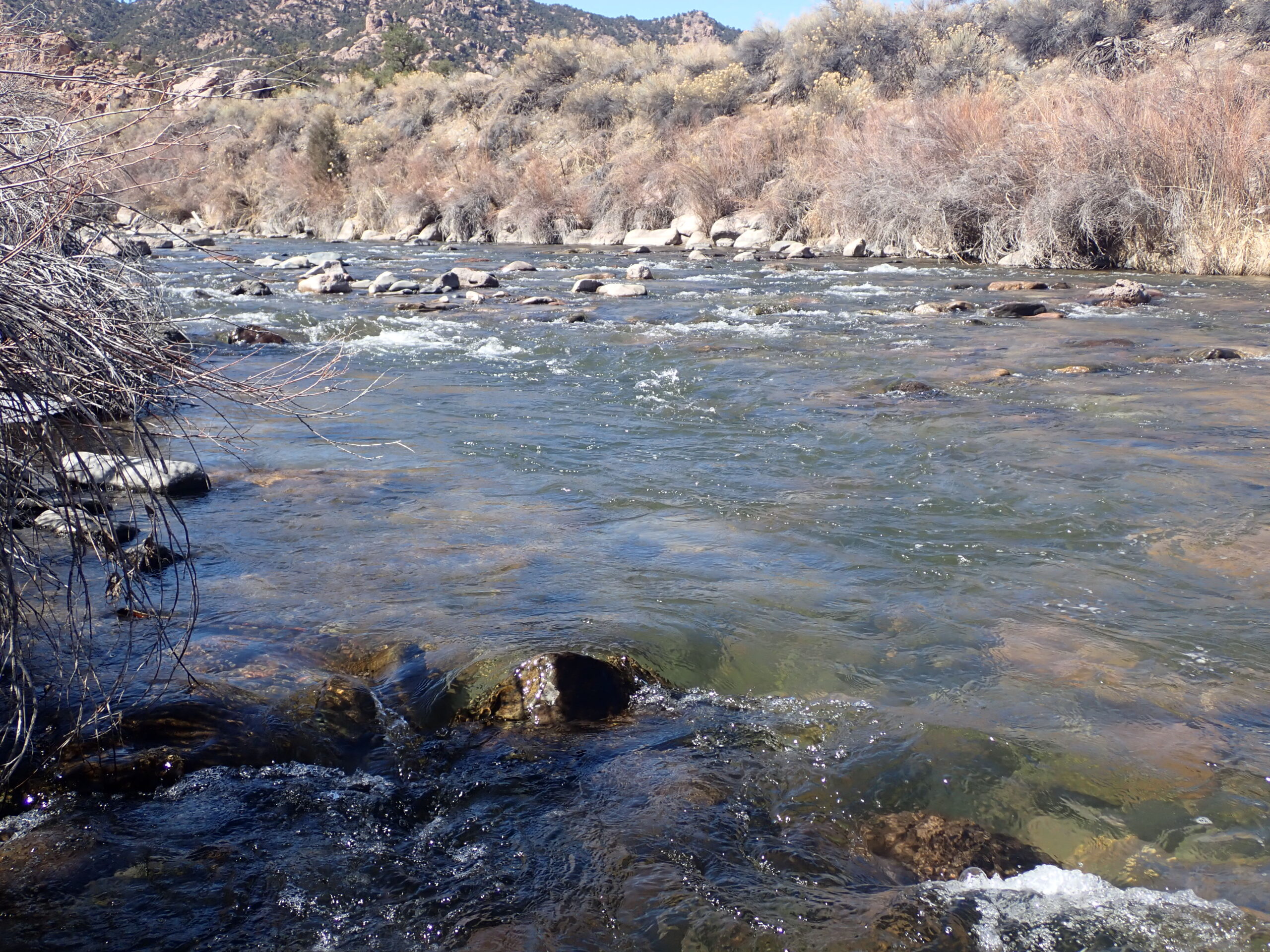 Left Bank Produced
Left Bank Produced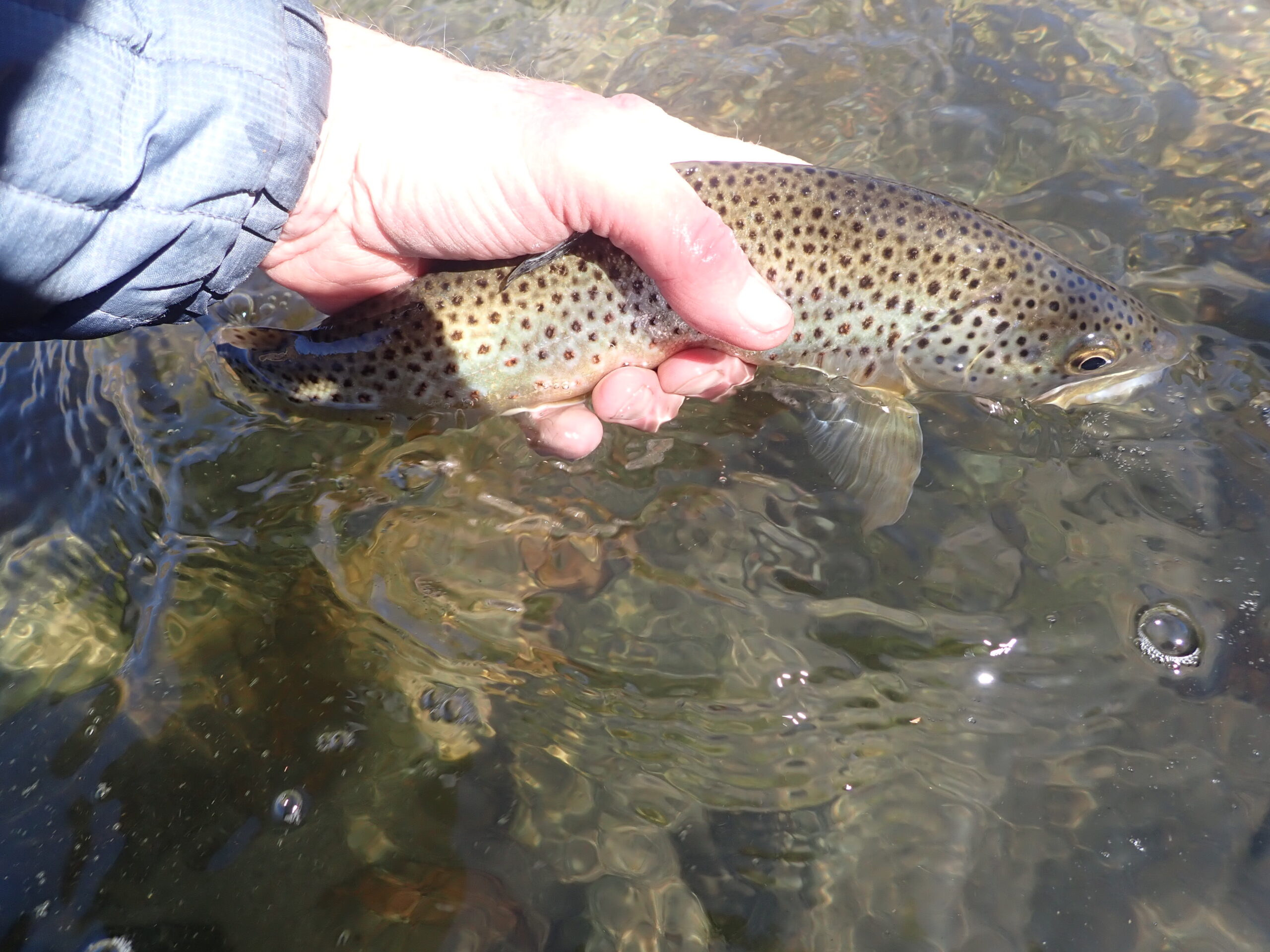 Headed Back
Headed Back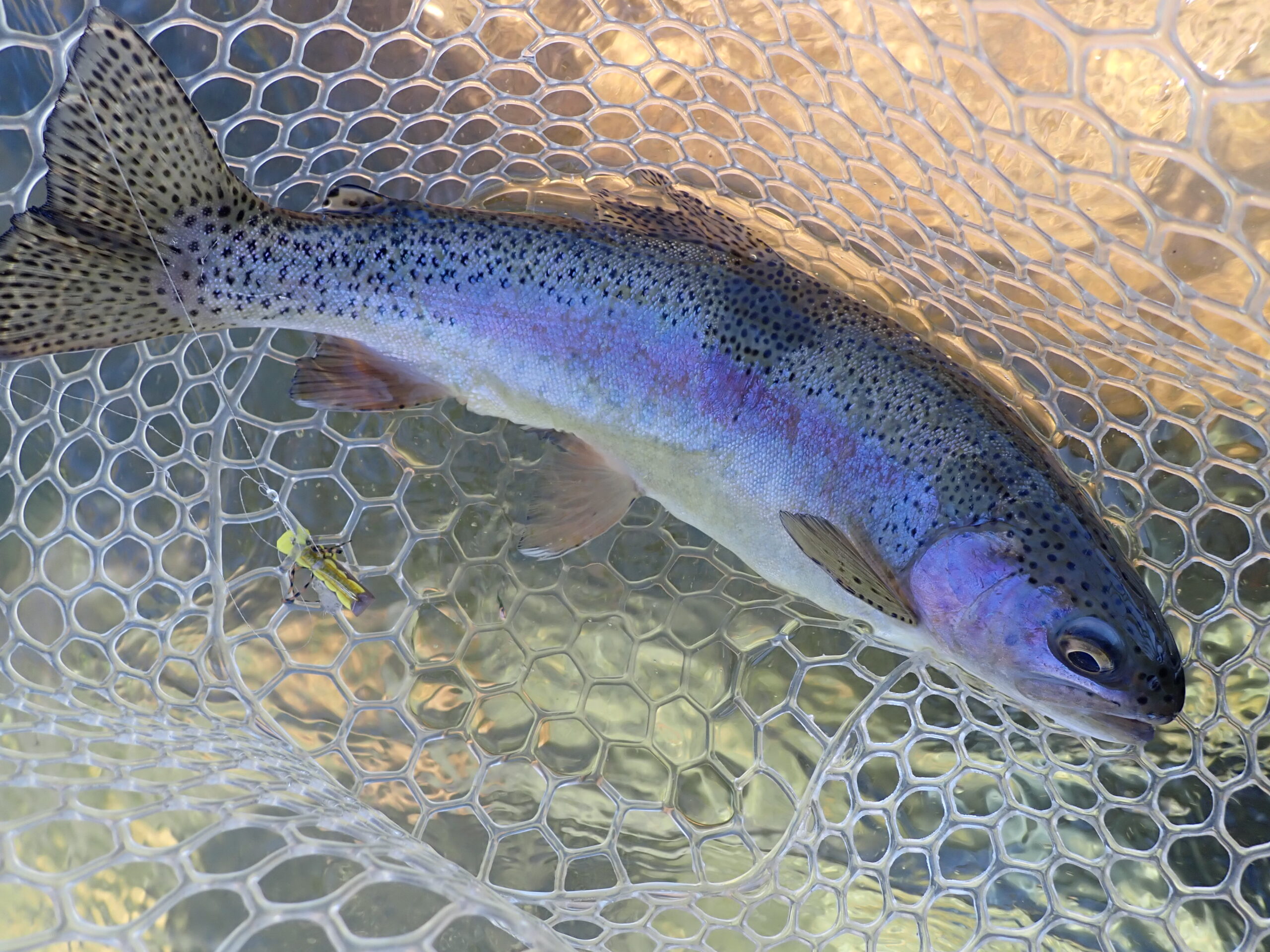 Chunky Bow
Chunky Bow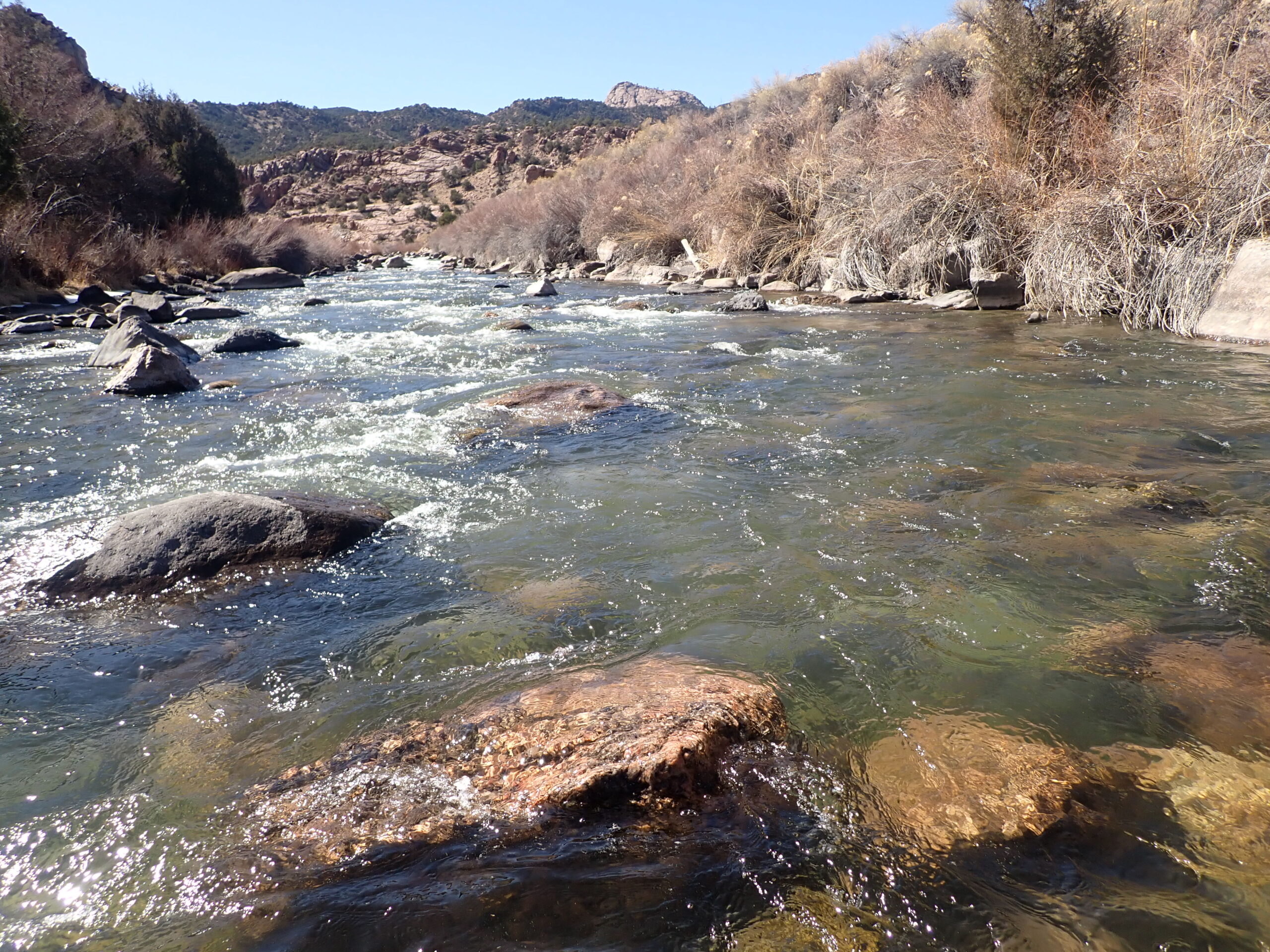 Slower Velocity to the Right
Slower Velocity to the Right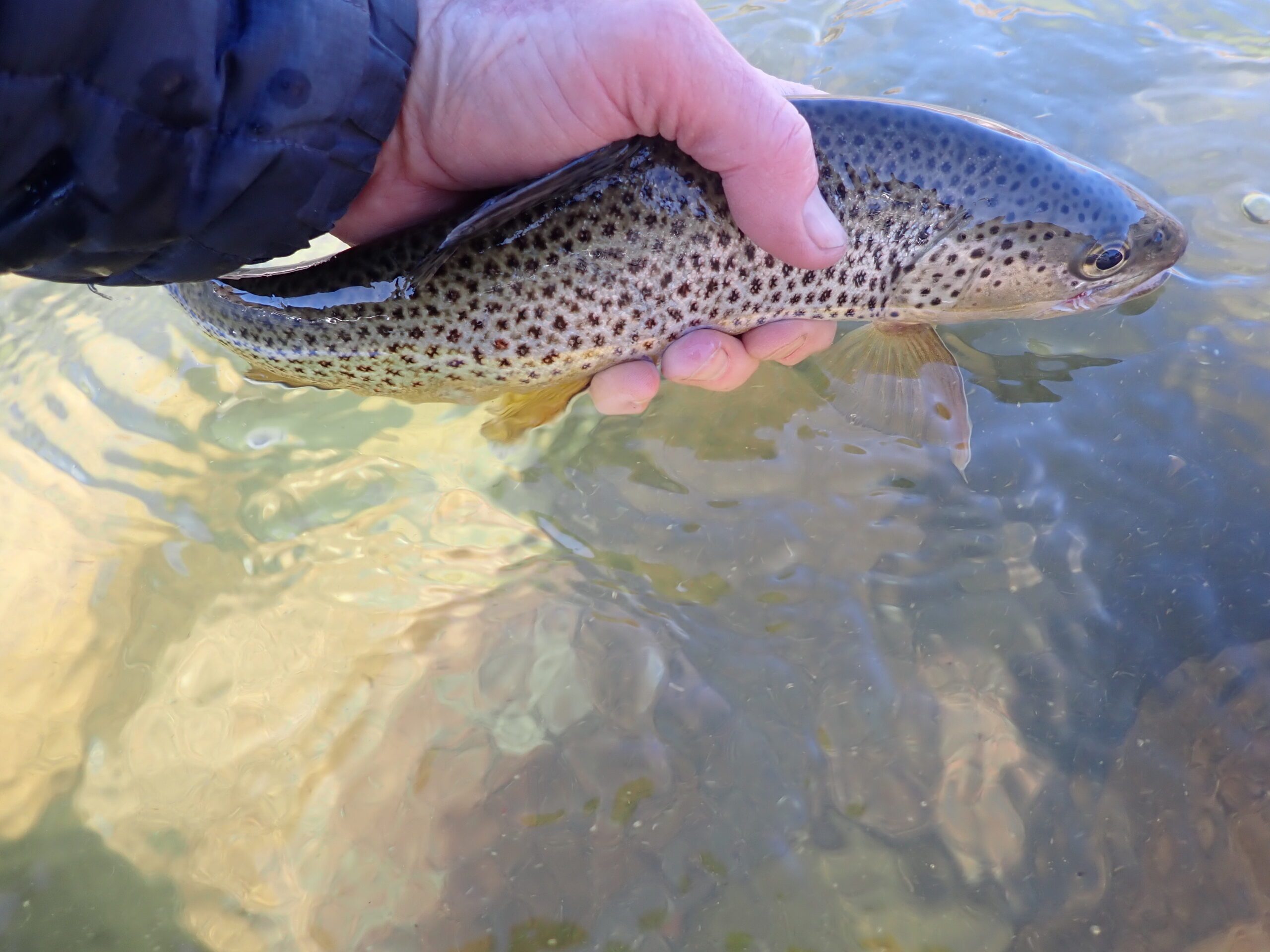 Love the Distinct Spots on This Prize Brown Trout
Love the Distinct Spots on This Prize Brown Trout Low and Clear
Low and Clear Hippie Stomper Fan
Hippie Stomper Fan Wild Fish and Bubbles
Wild Fish and Bubbles Site of Rainbow Feeders
Site of Rainbow Feeders Pink and Scarlet
Pink and Scarlet Wide Stripe on Second Rainbow Soft Hackle Emerger
Wide Stripe on Second Rainbow Soft Hackle Emerger